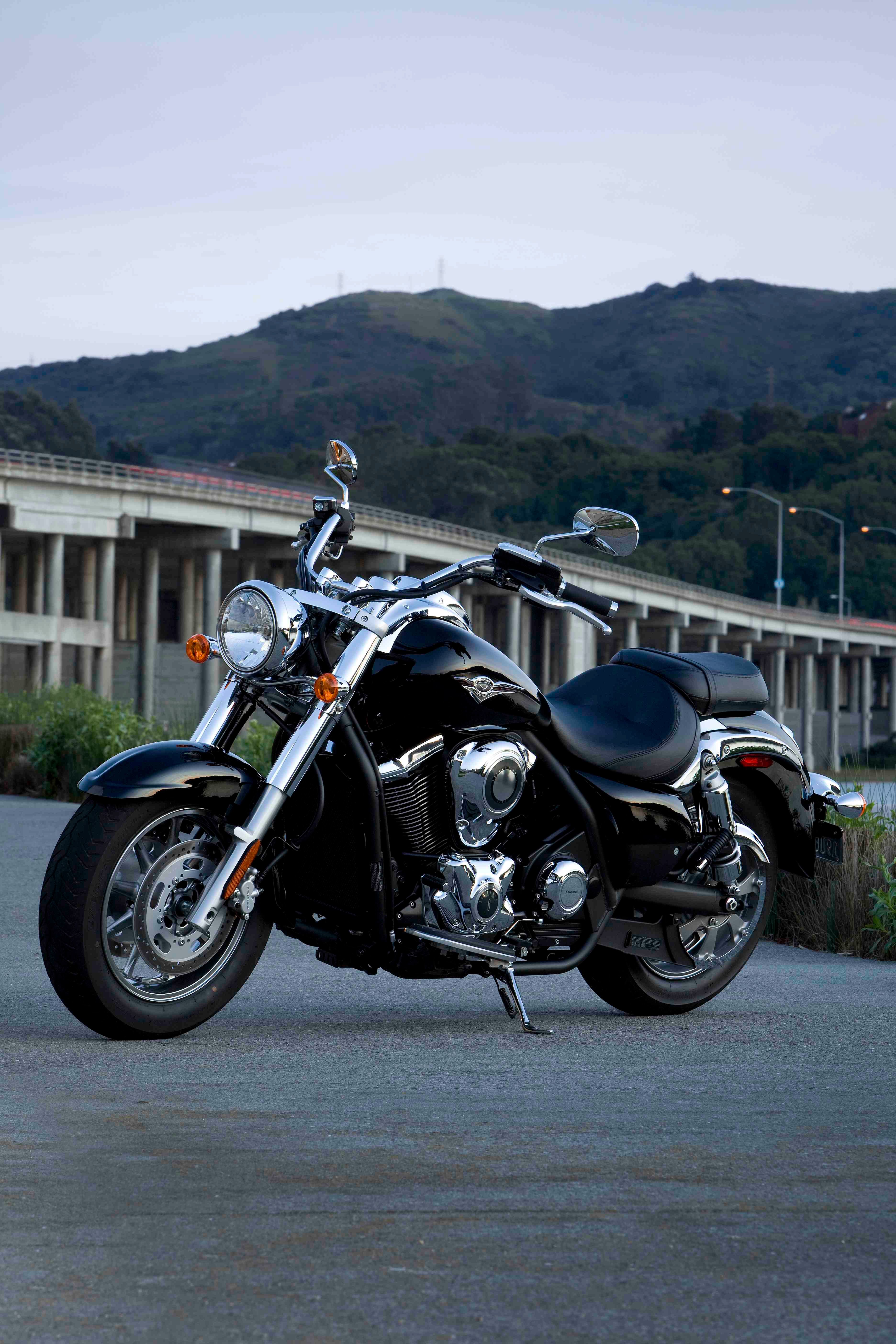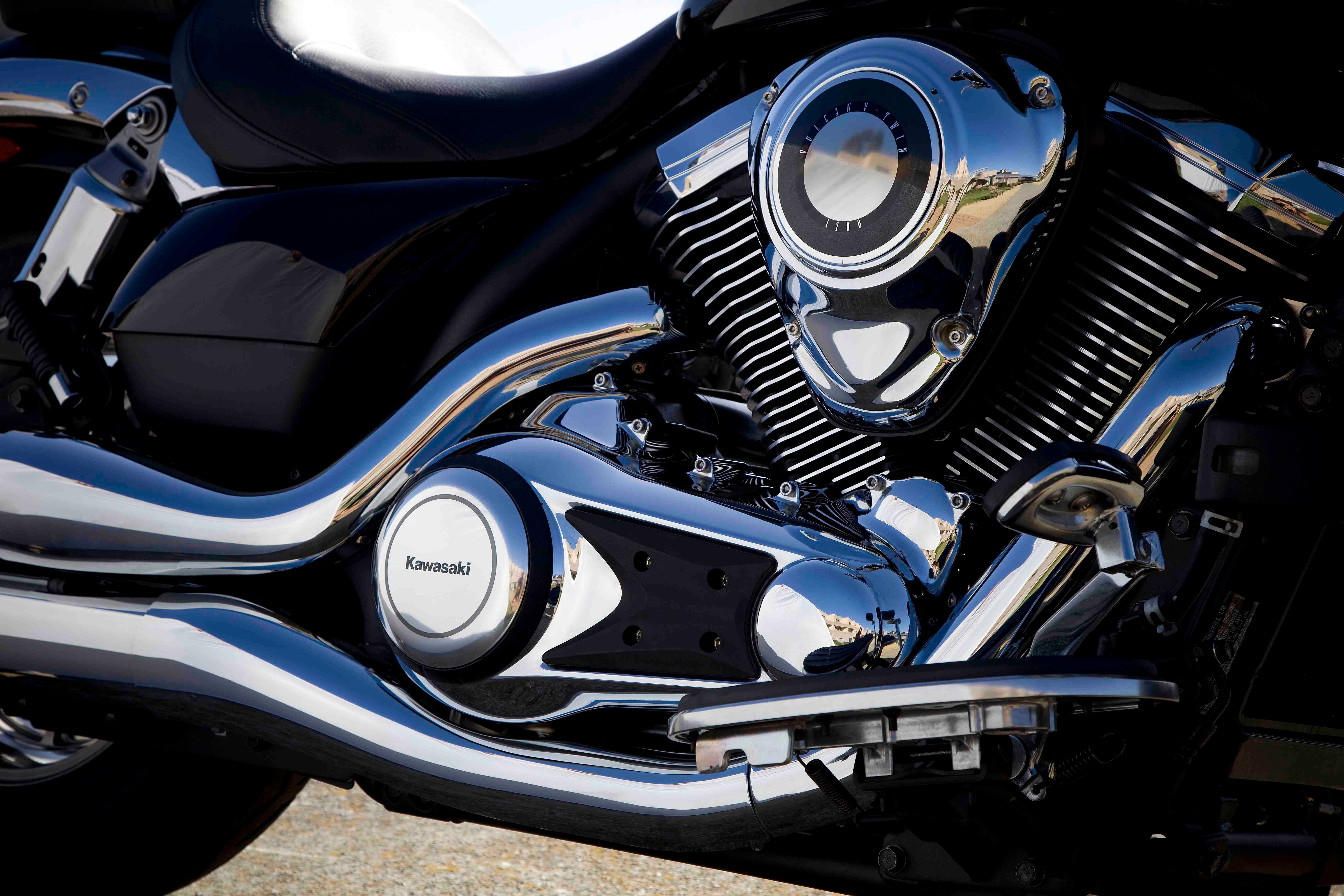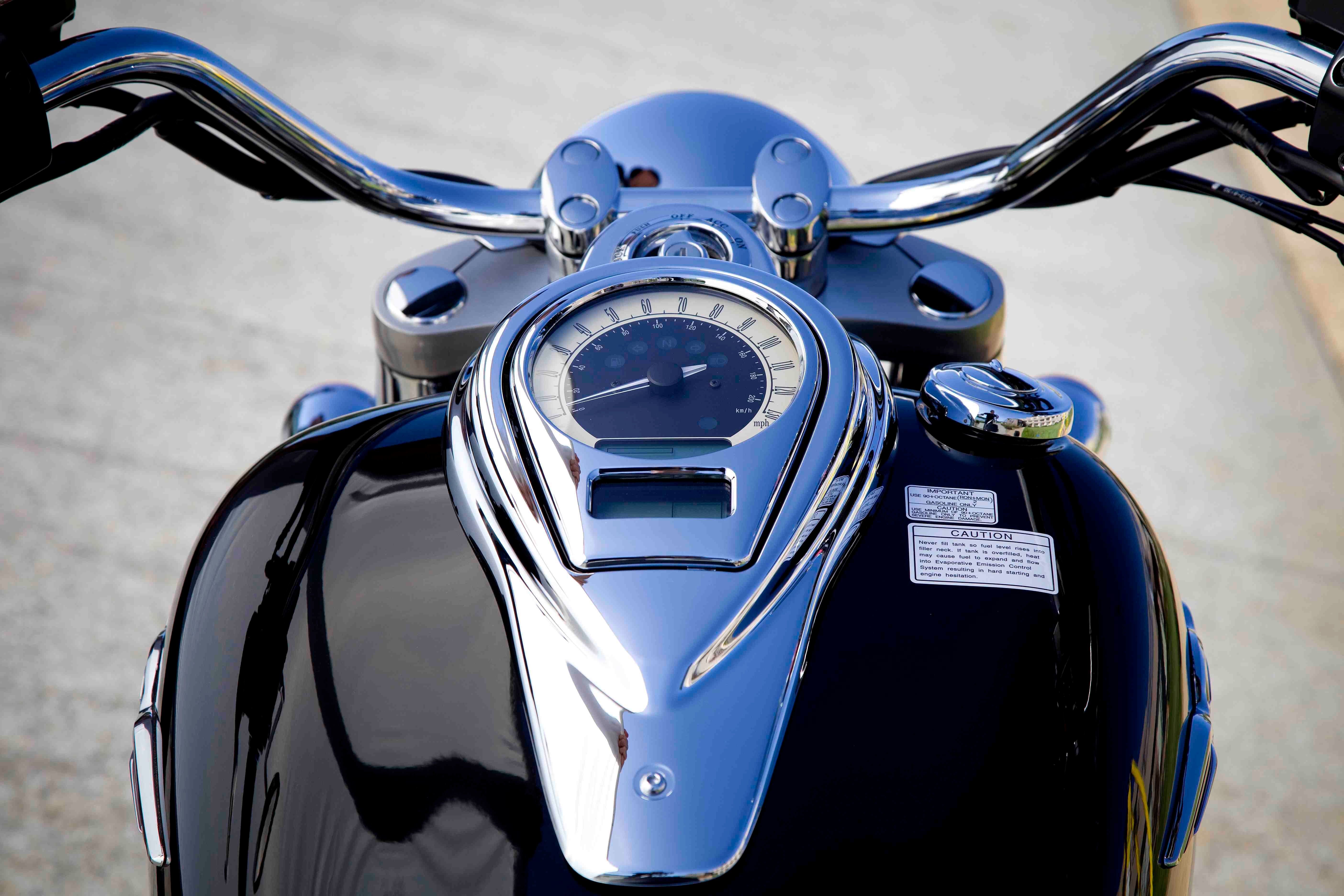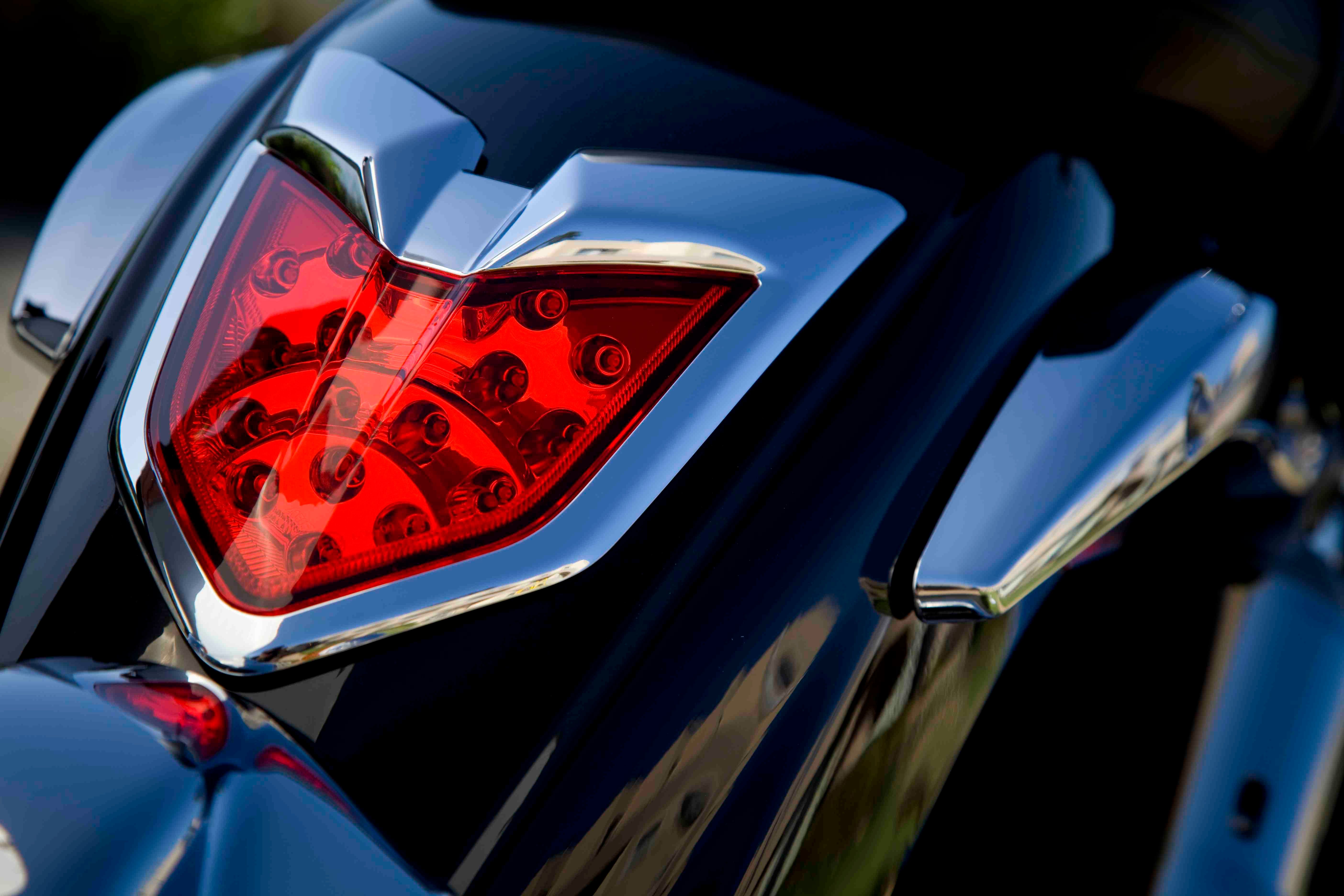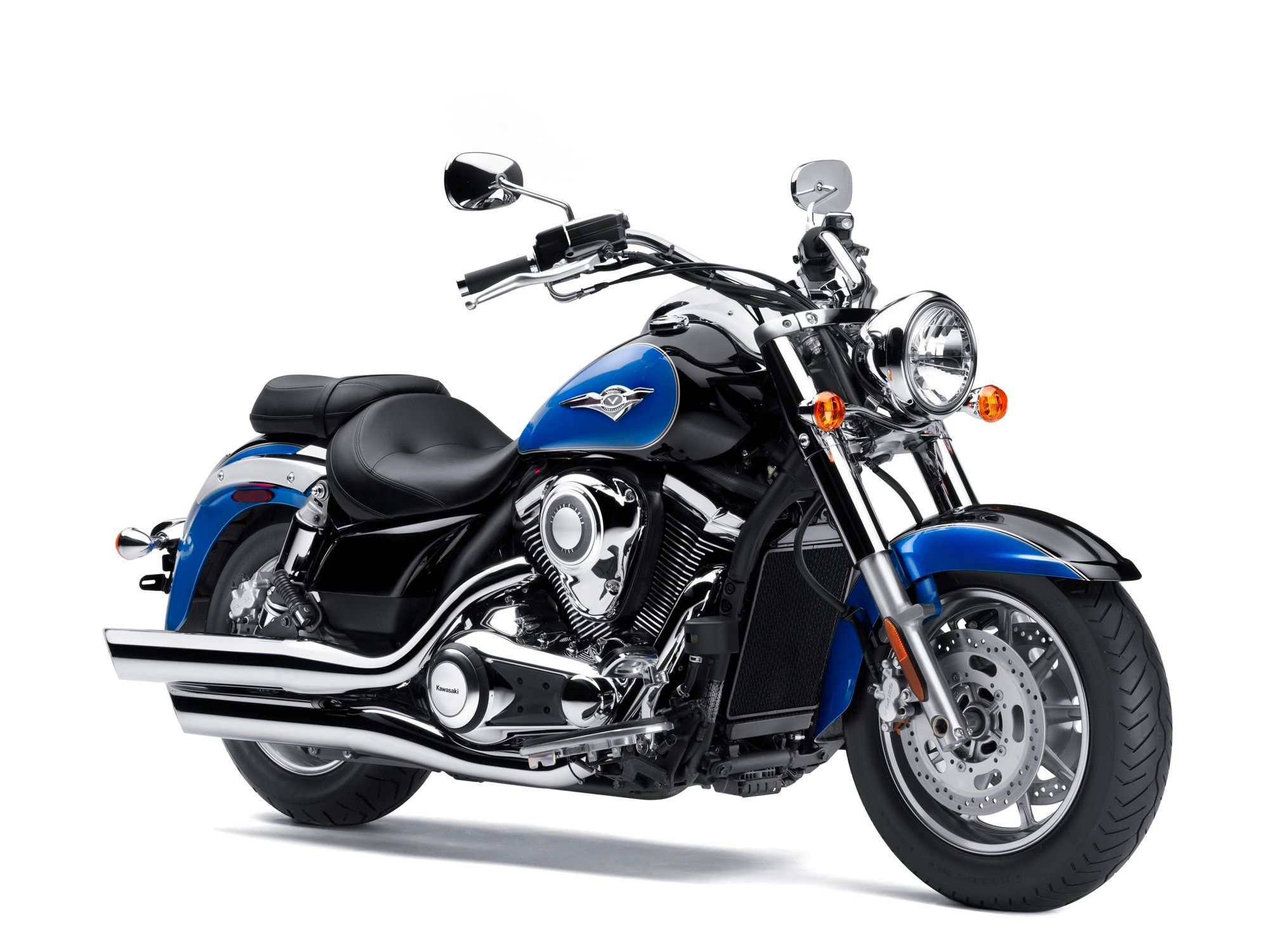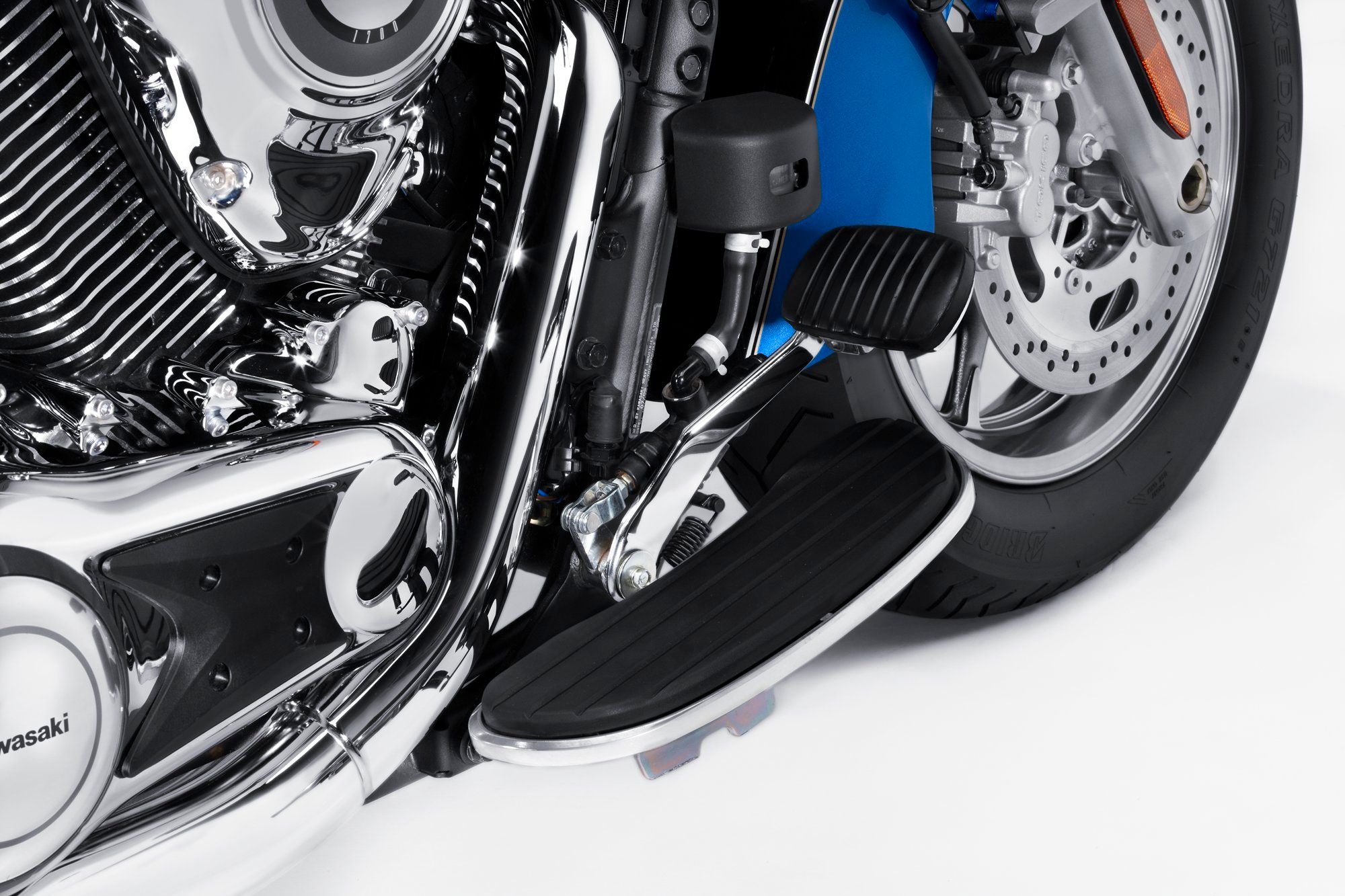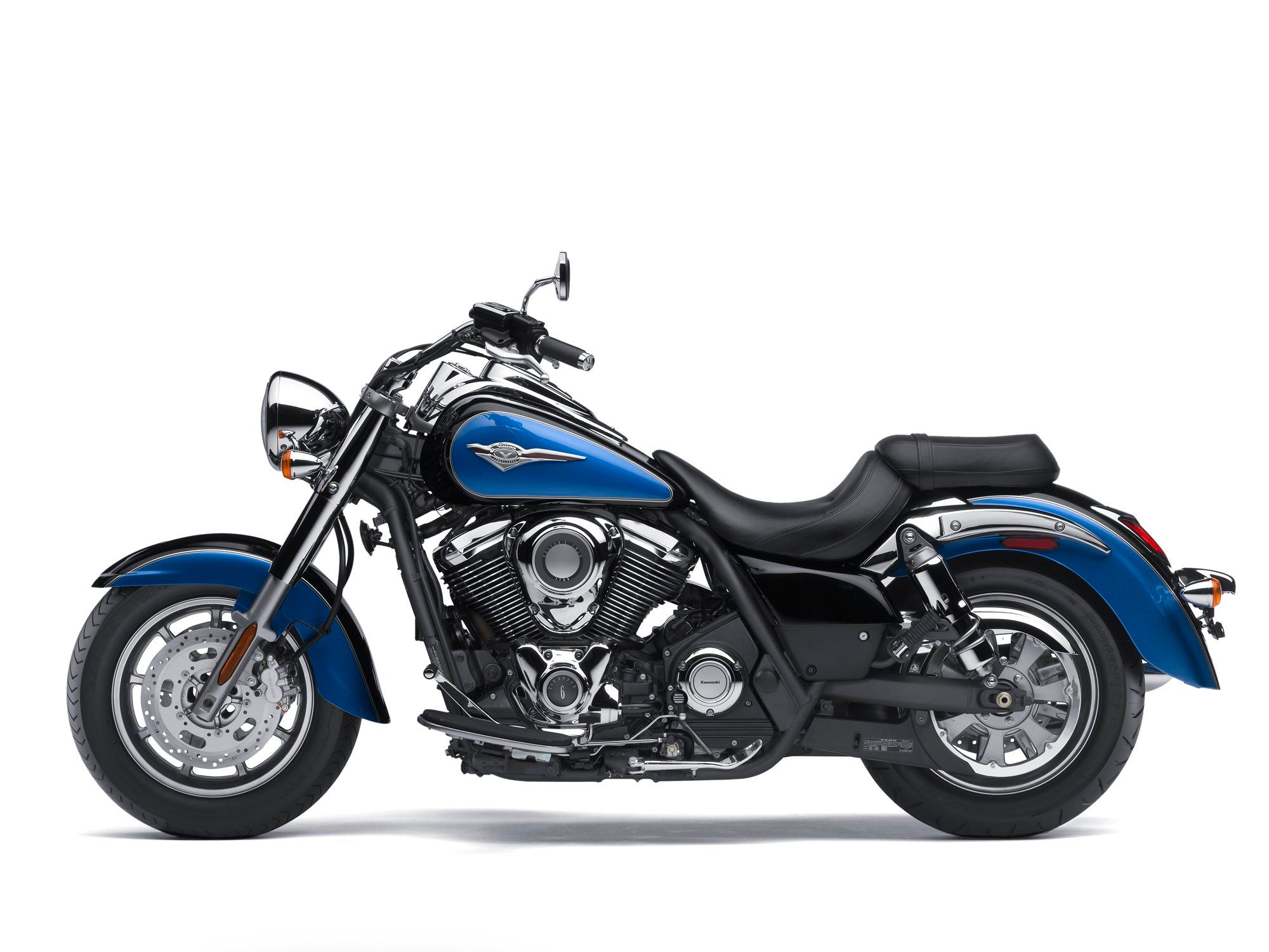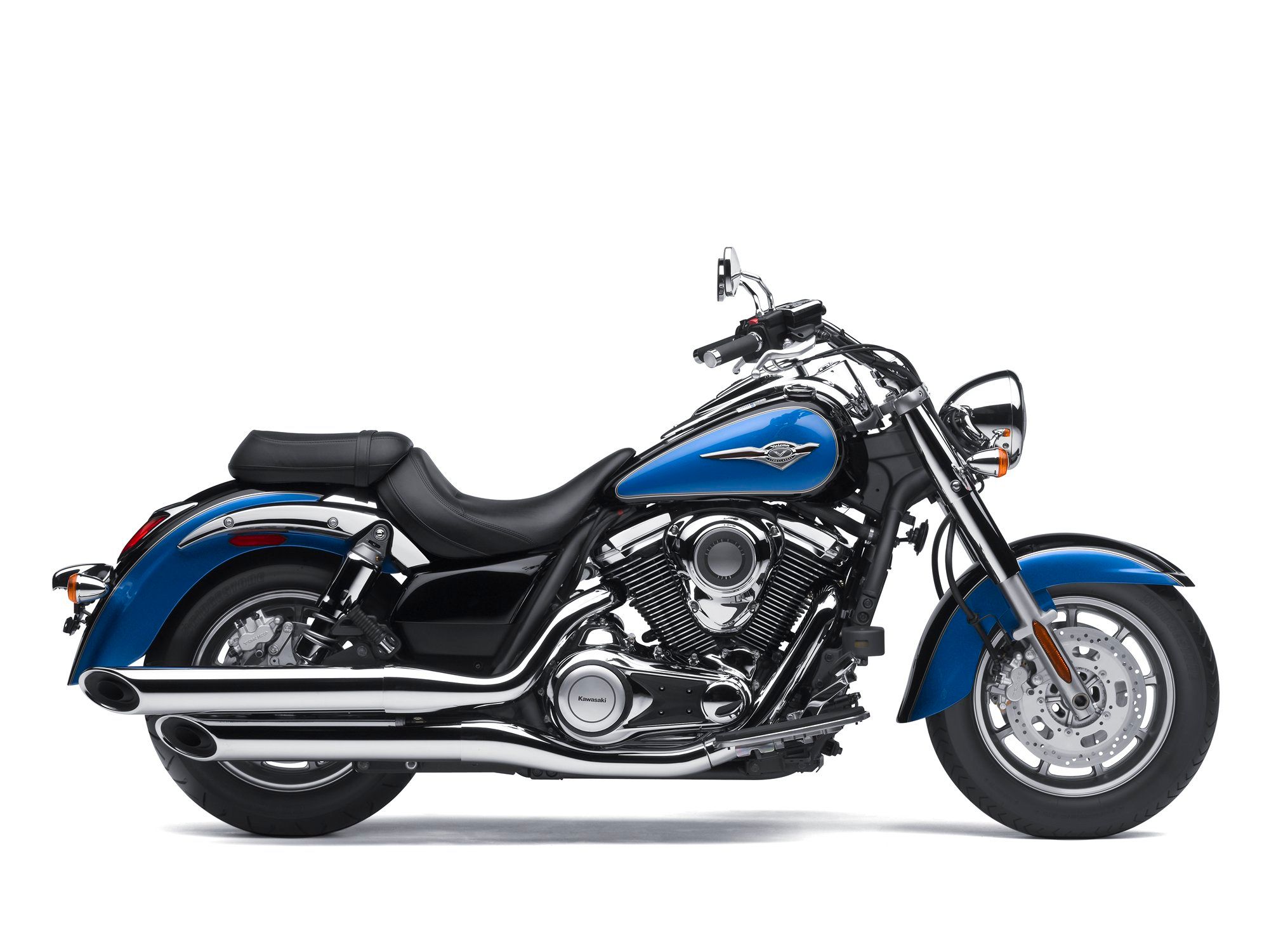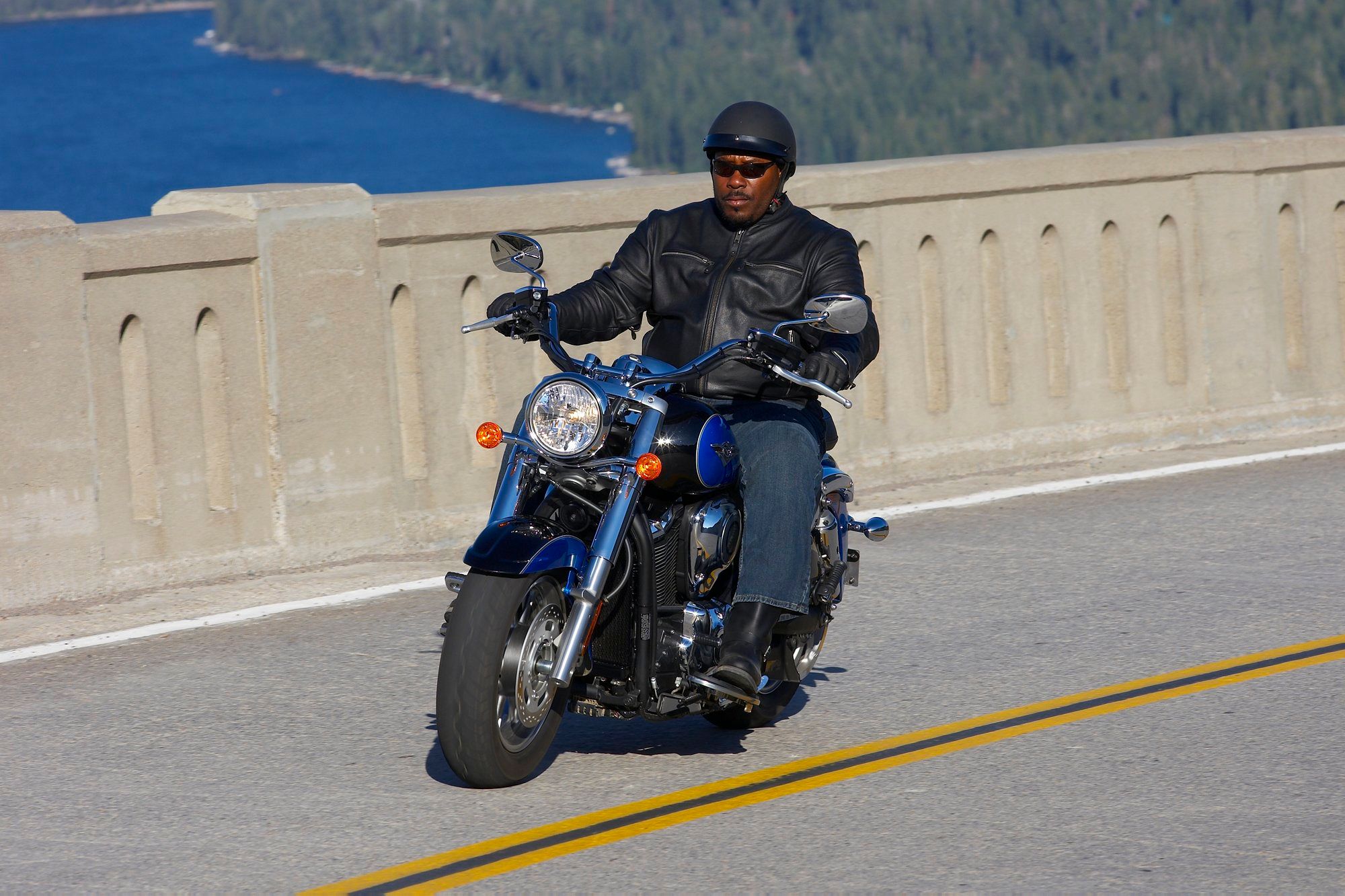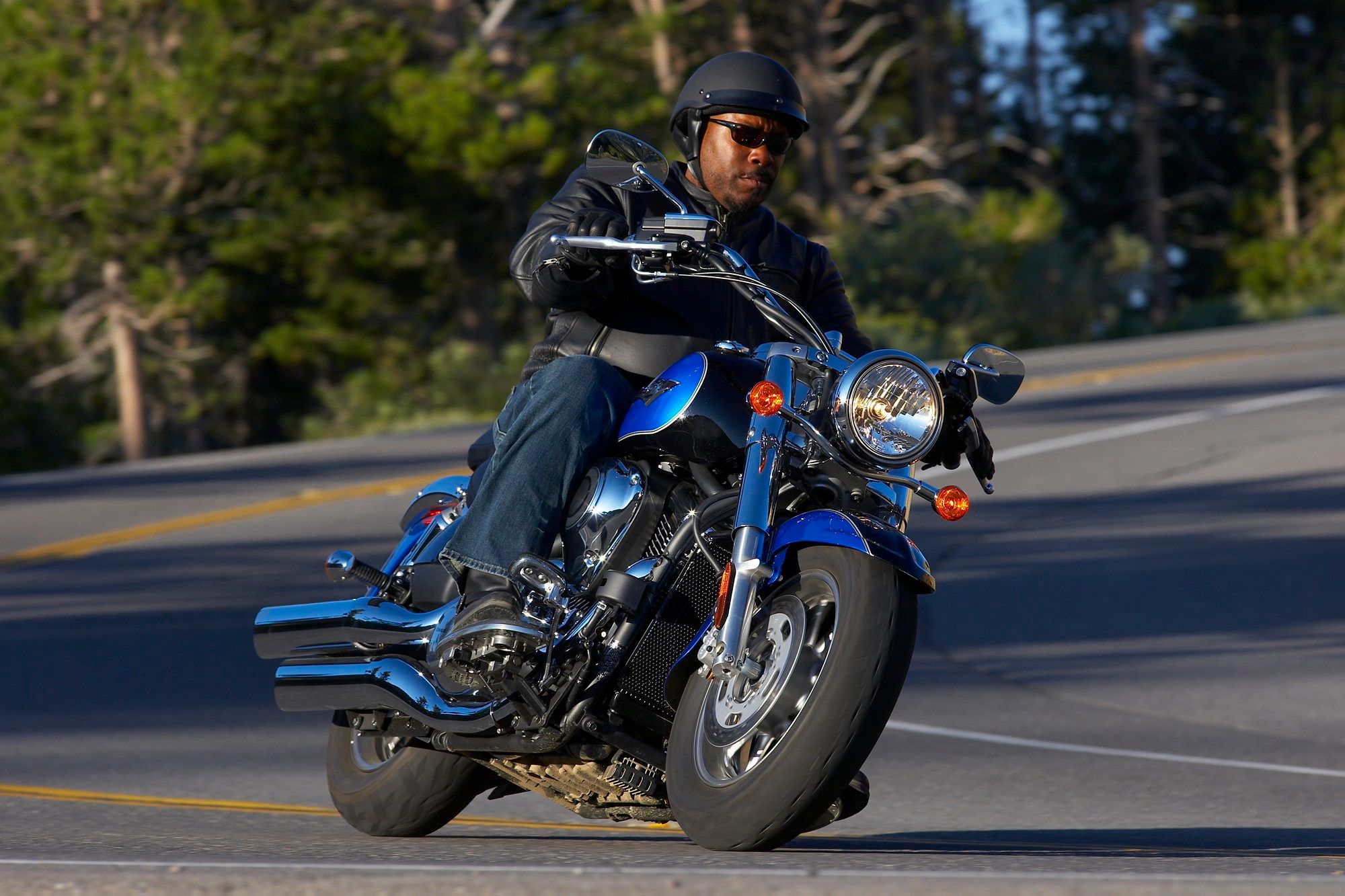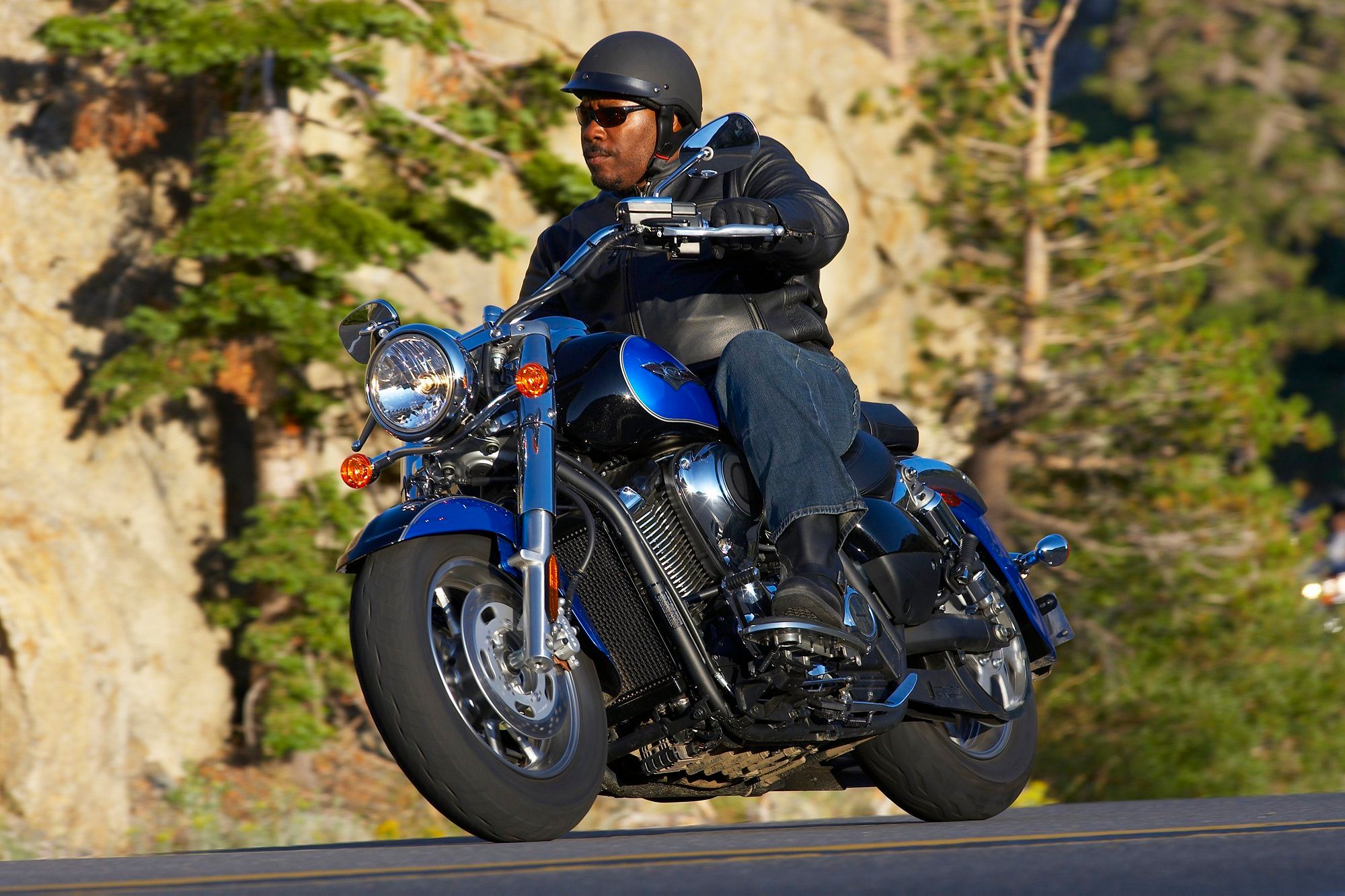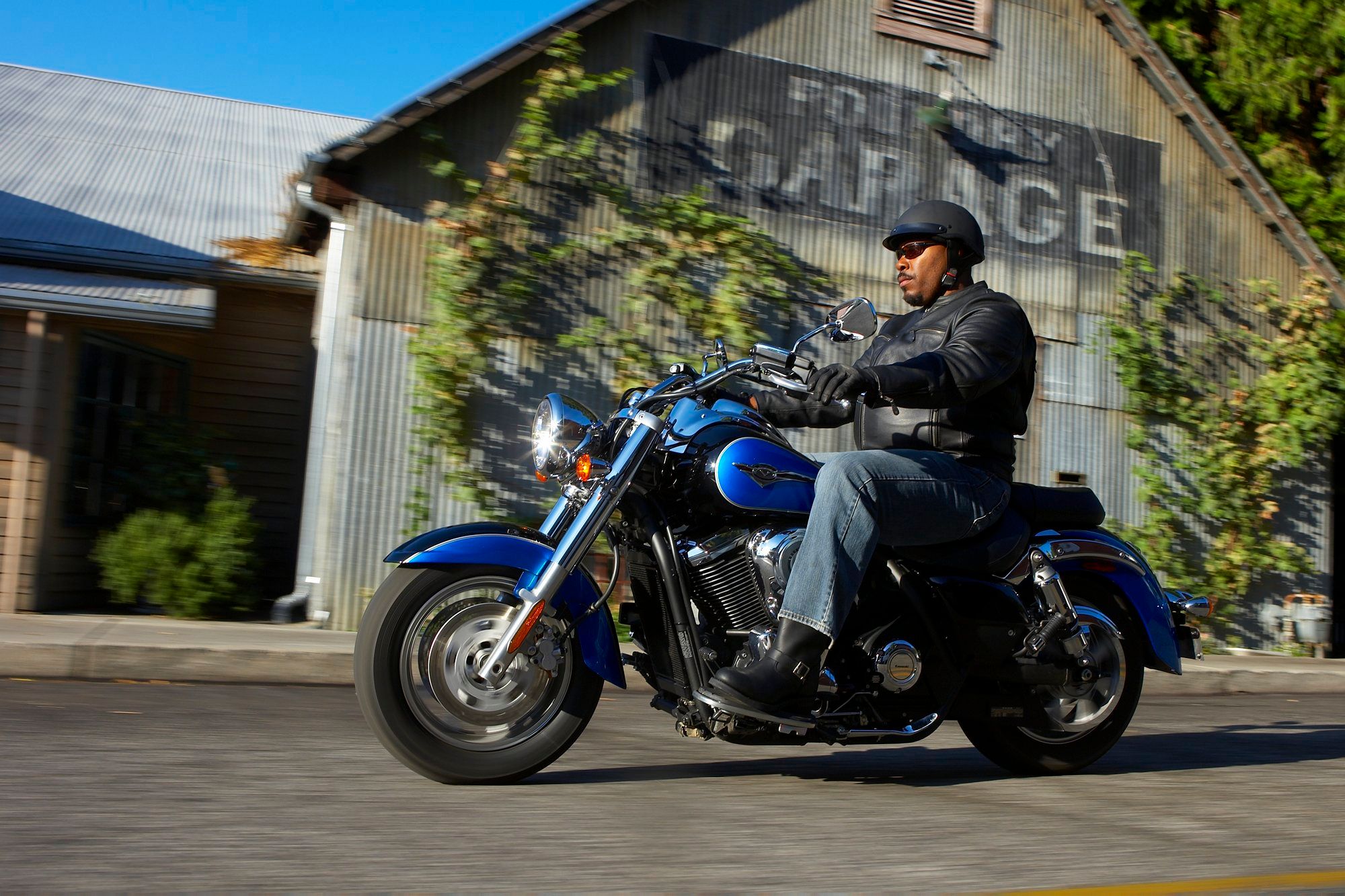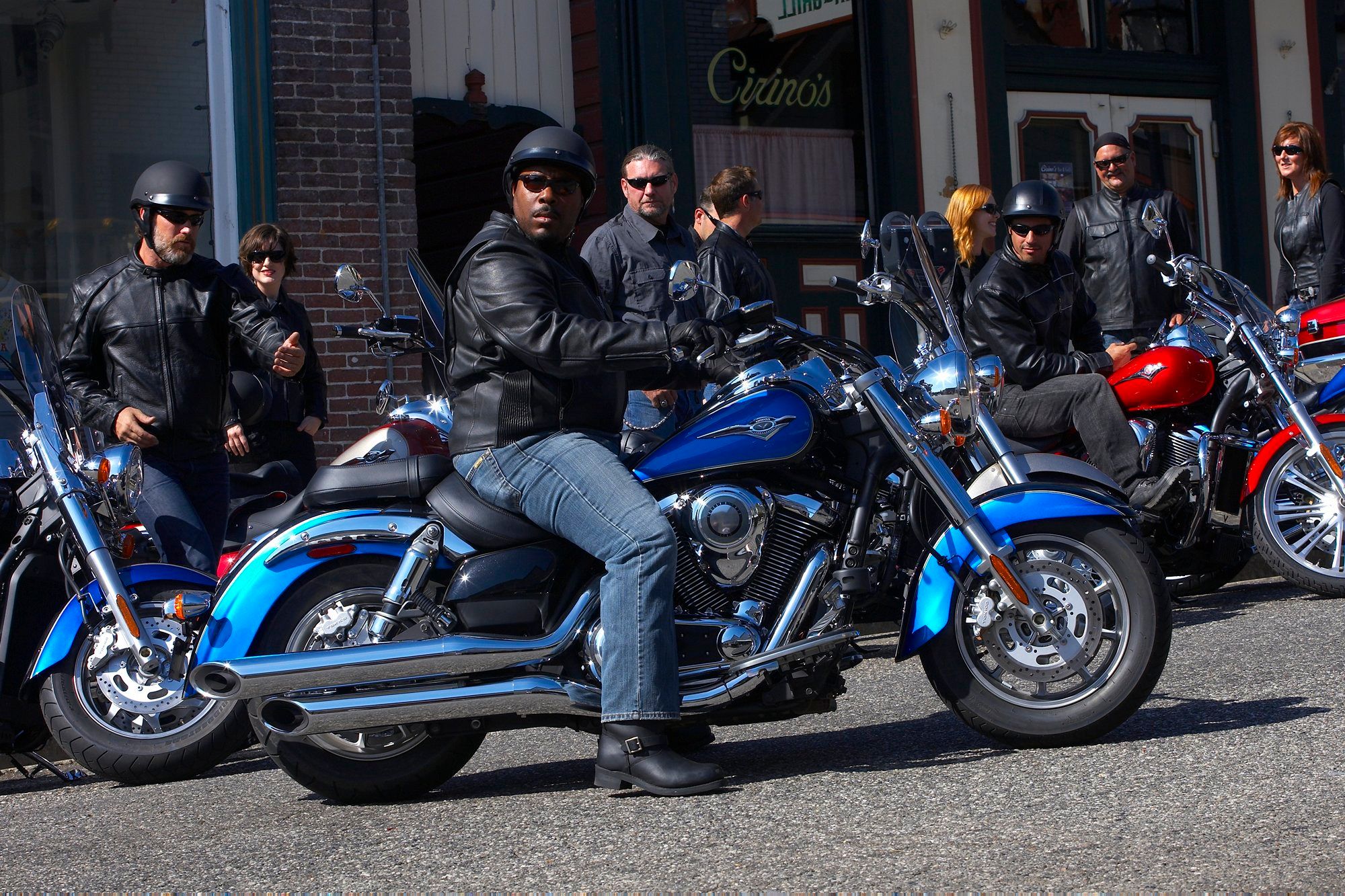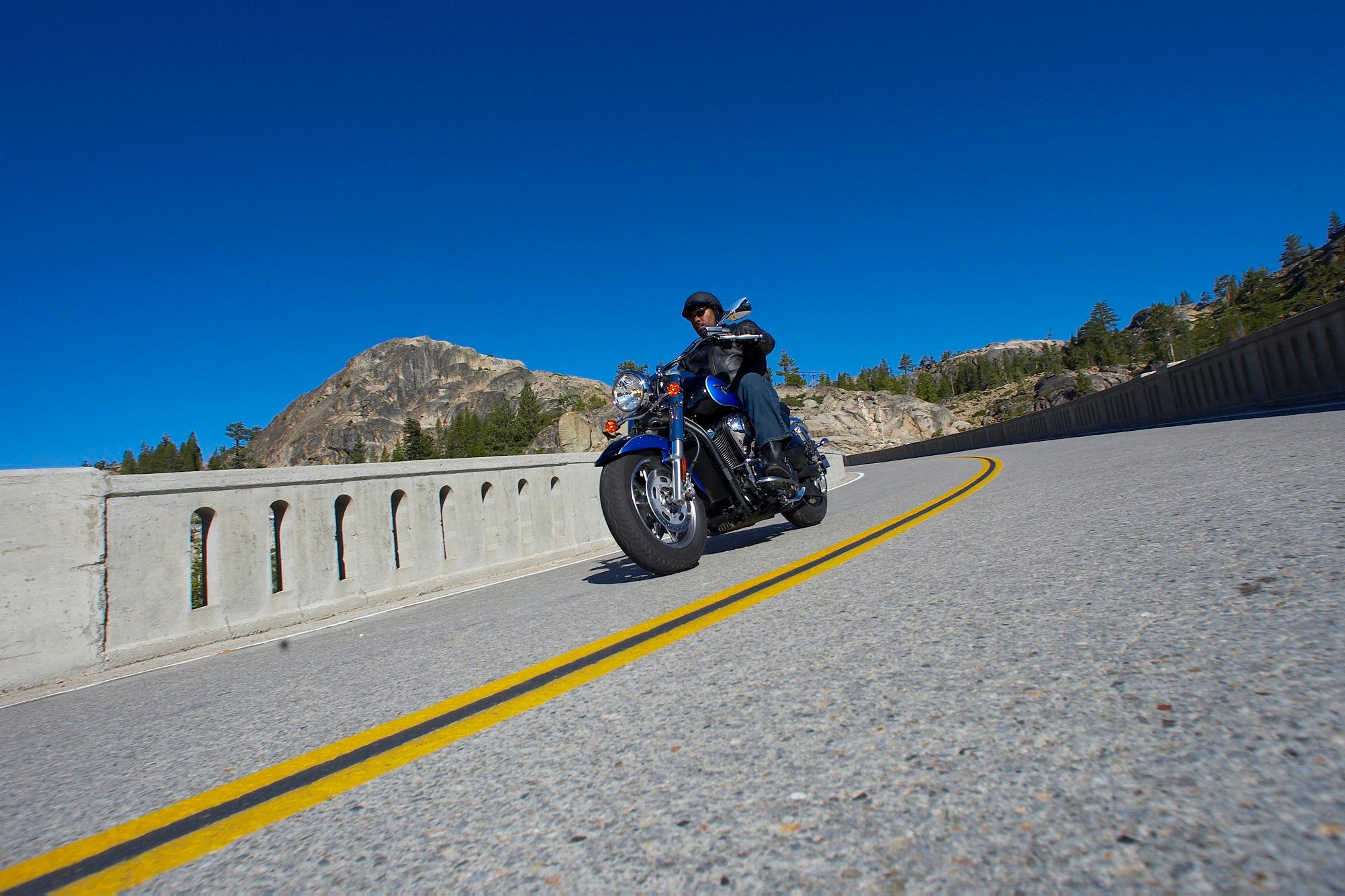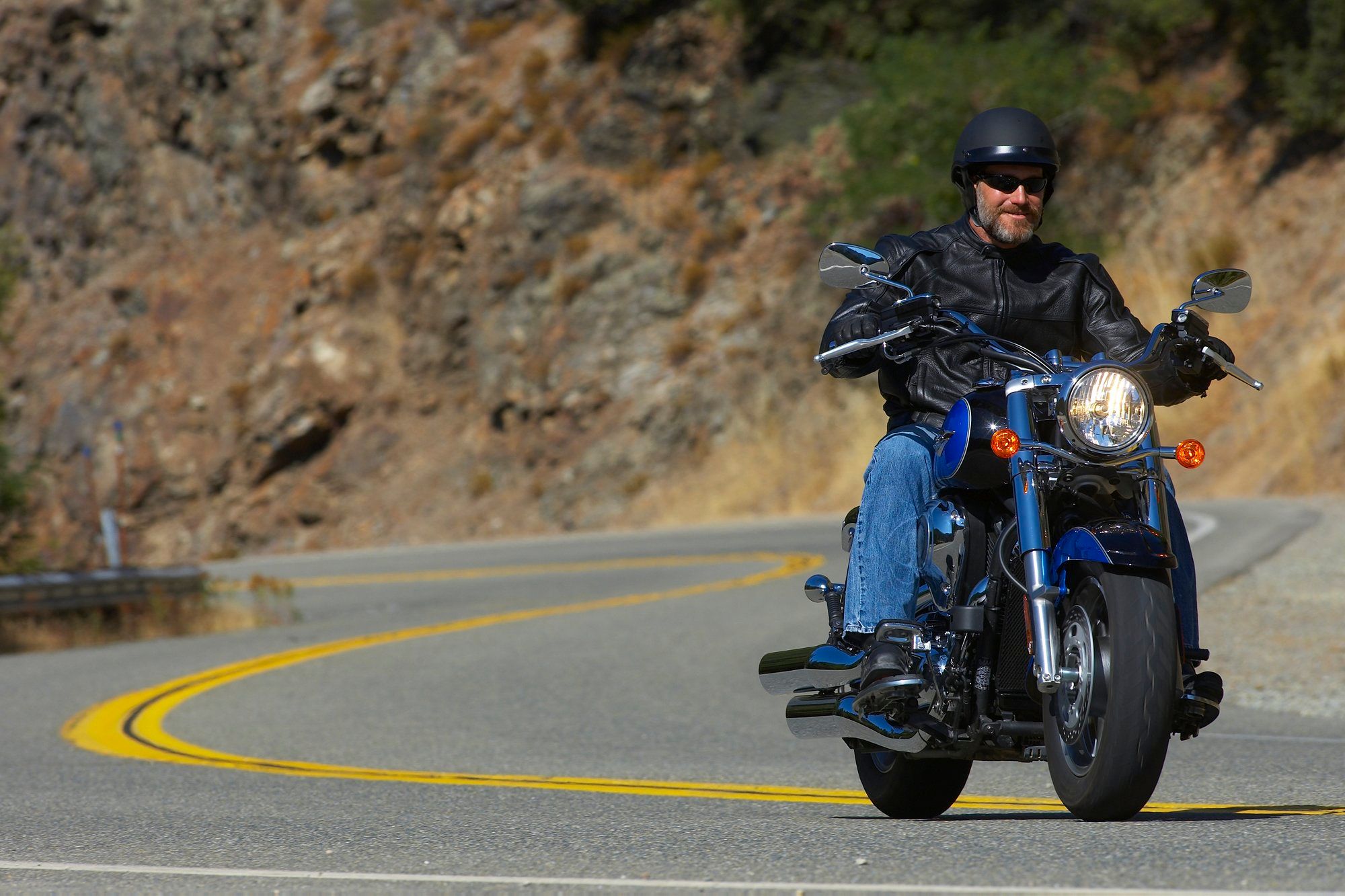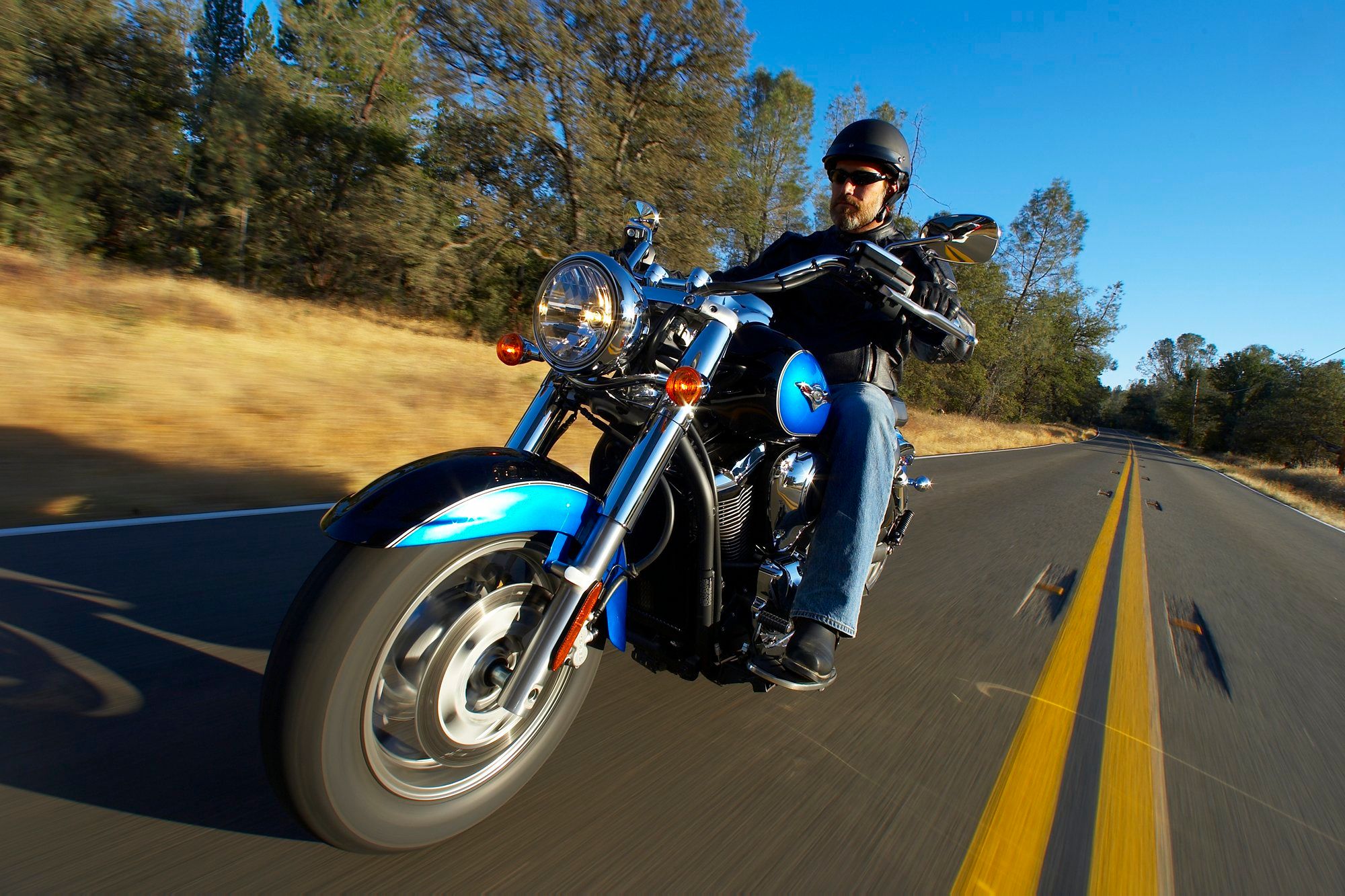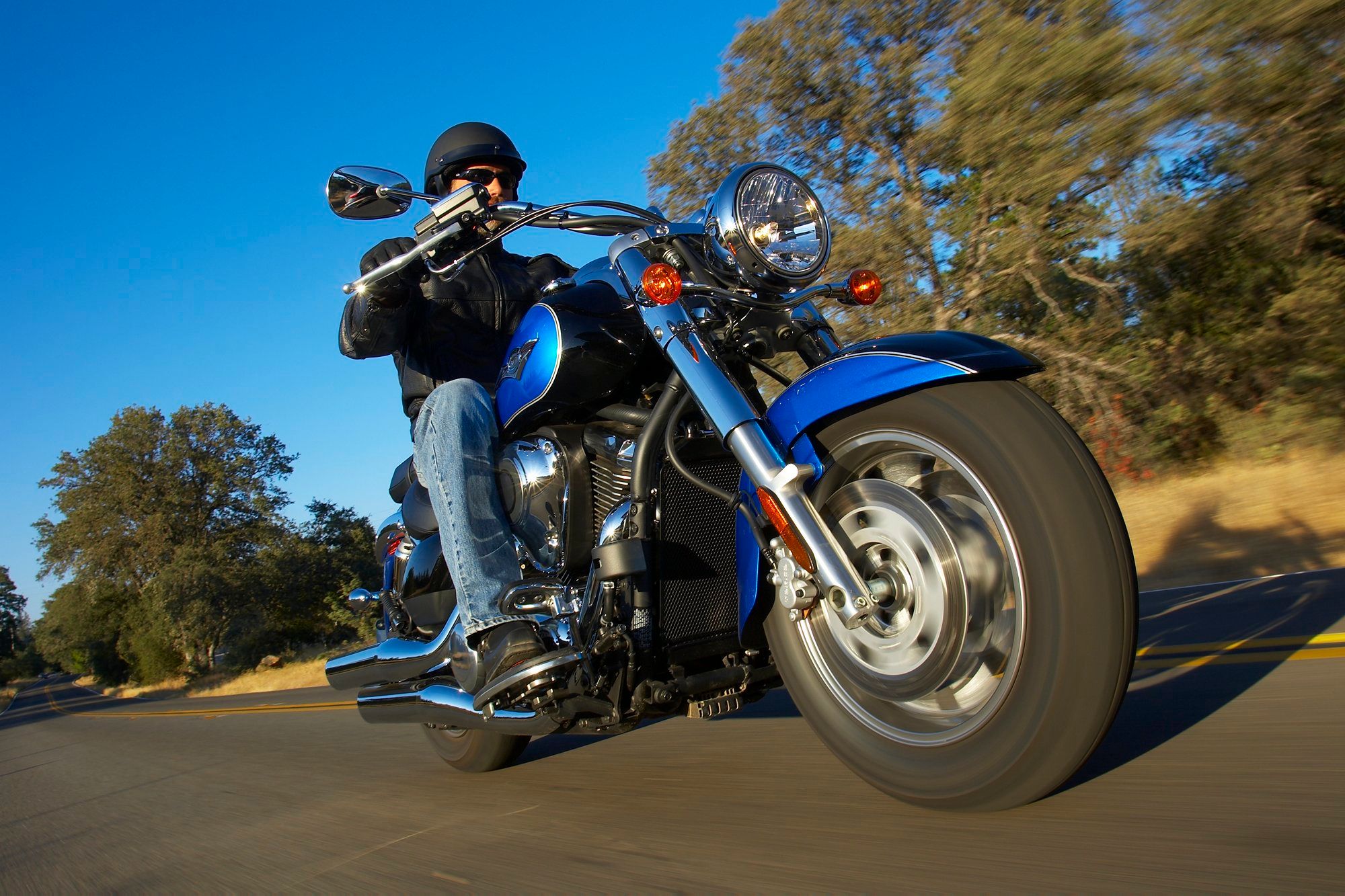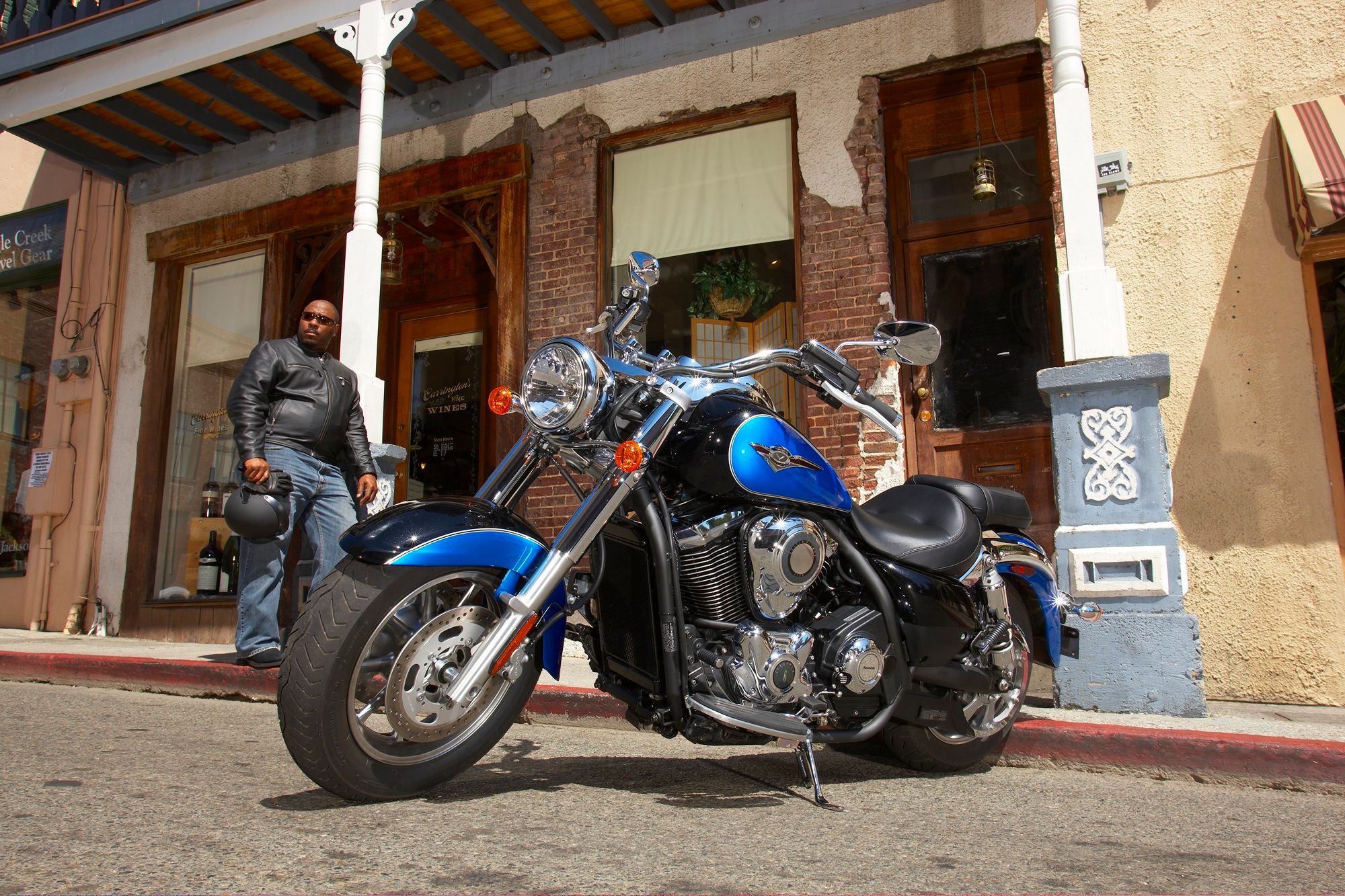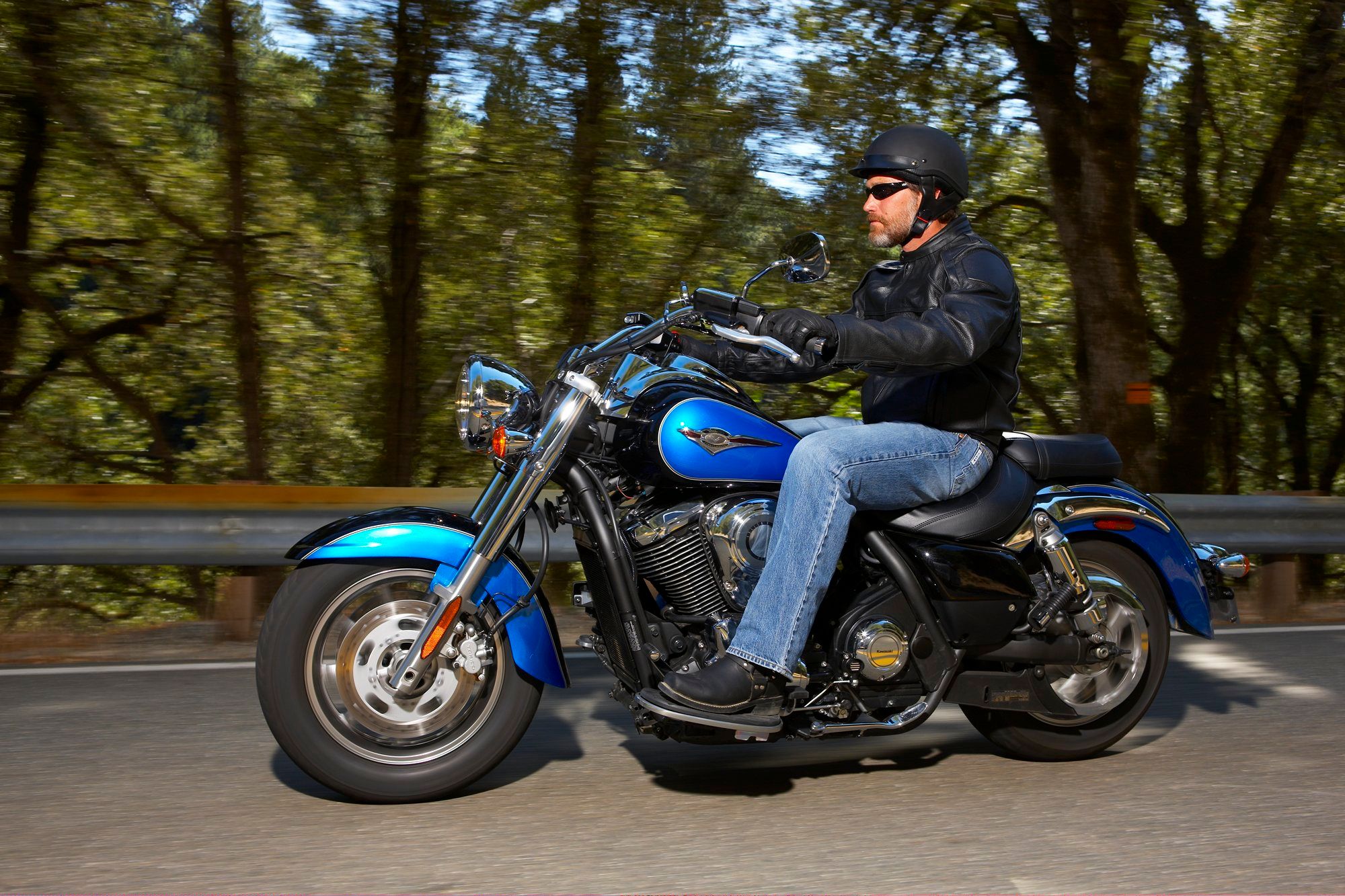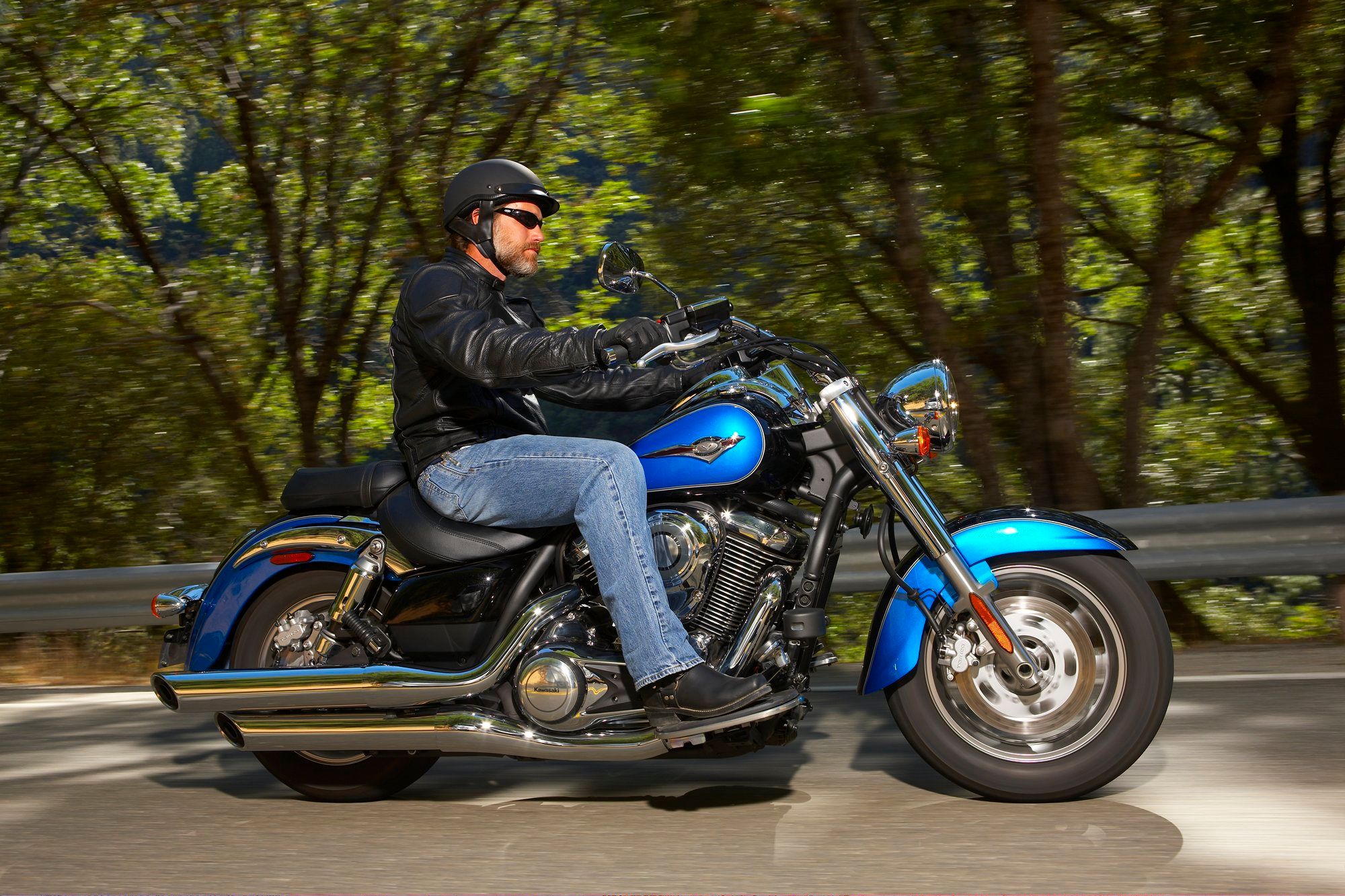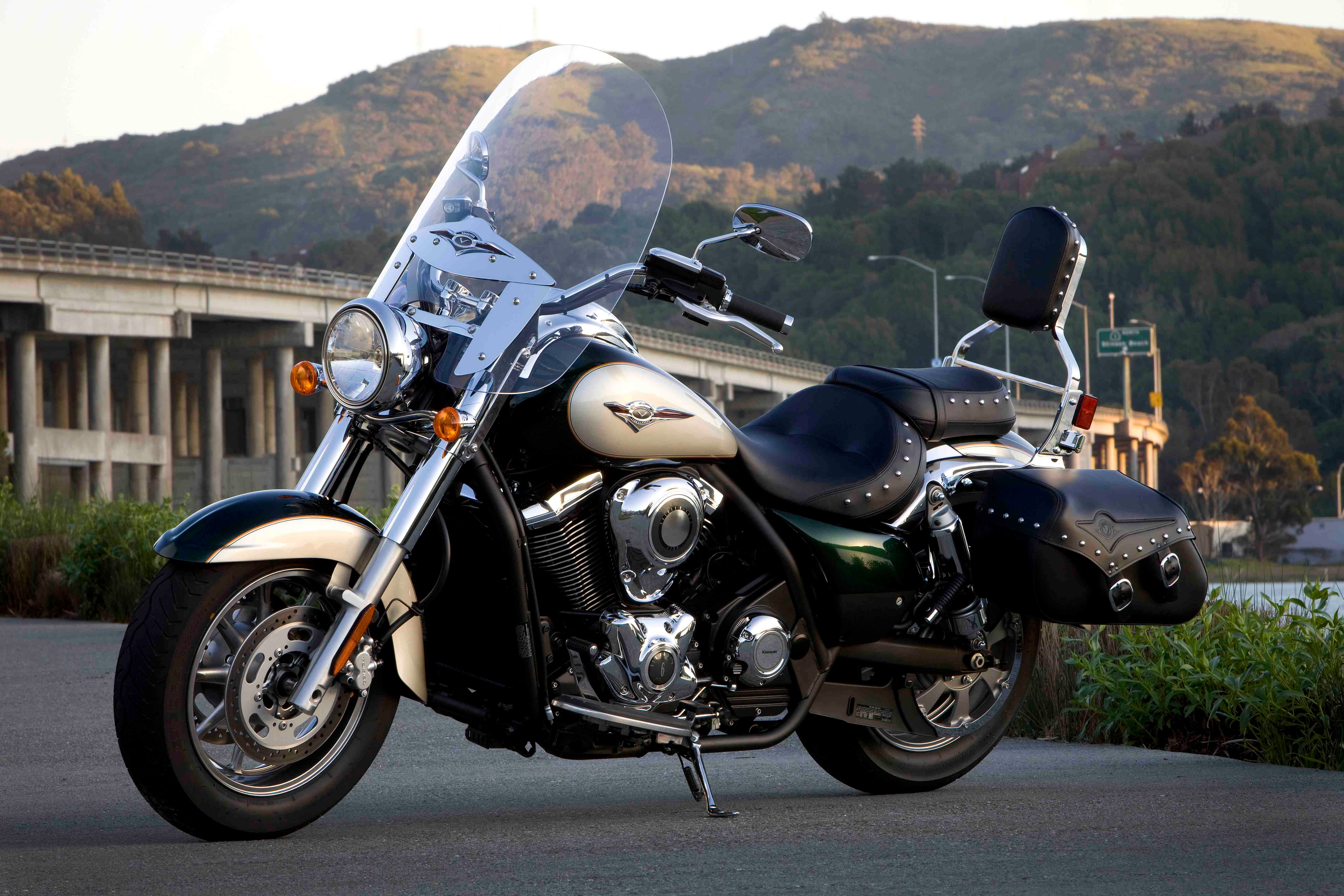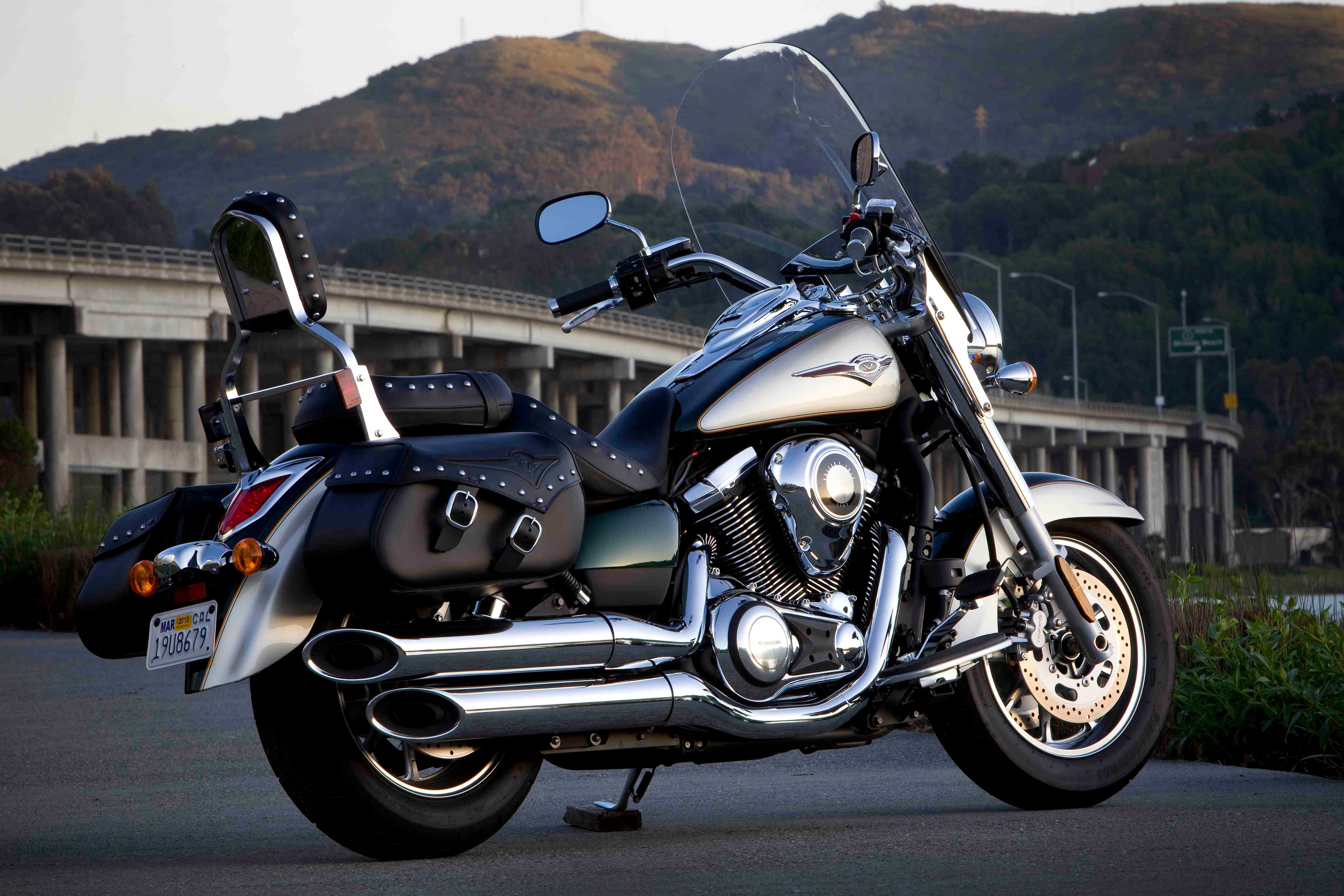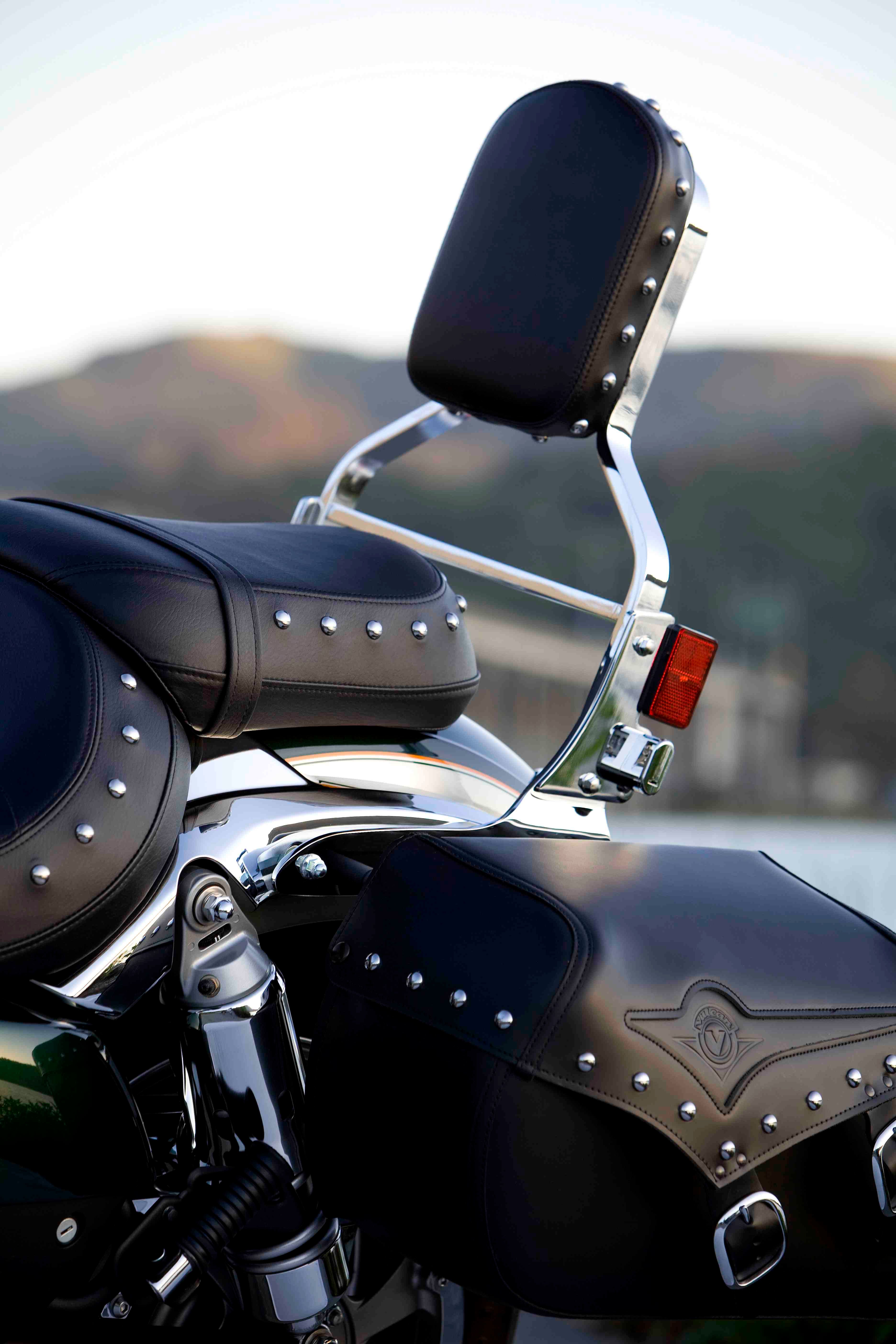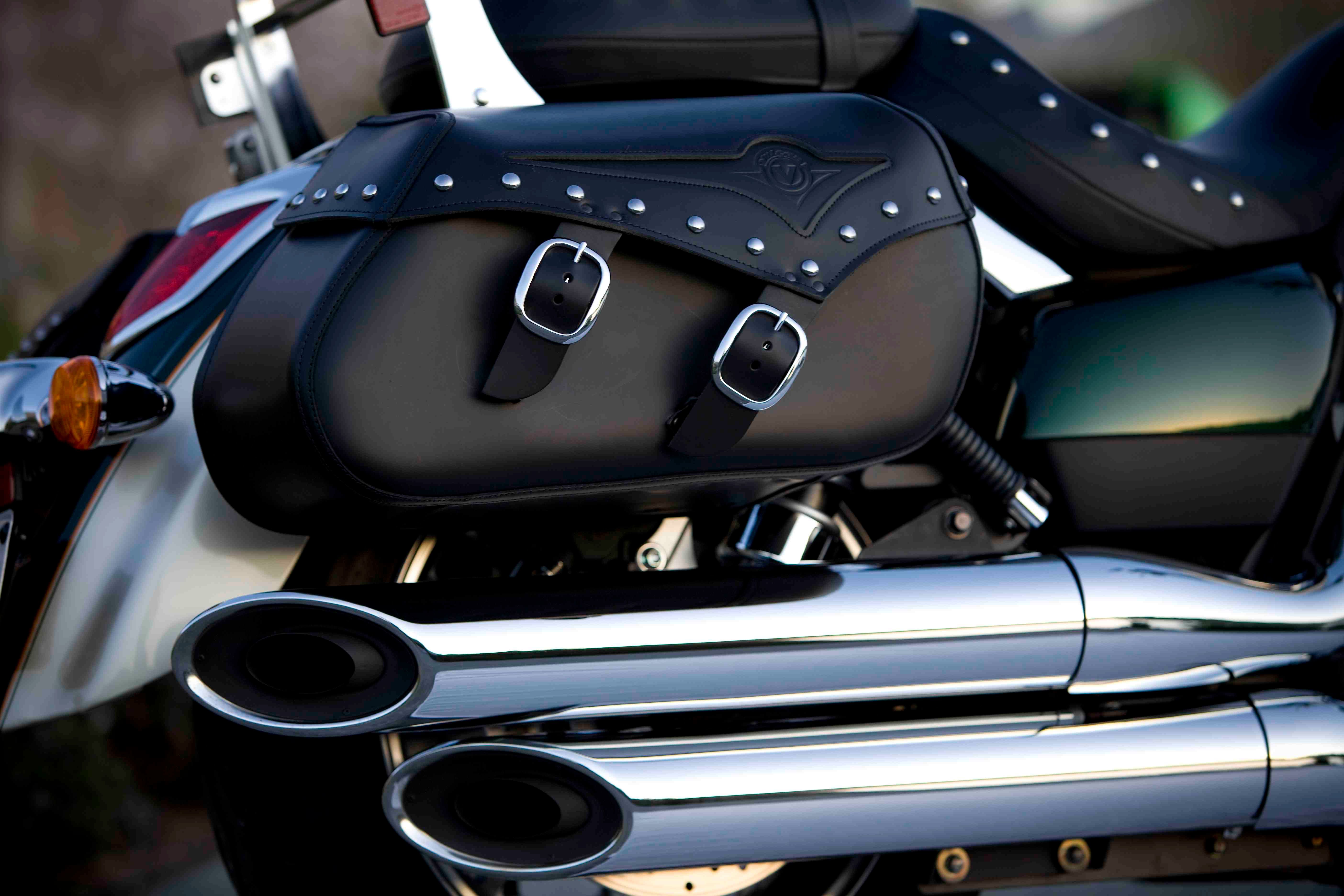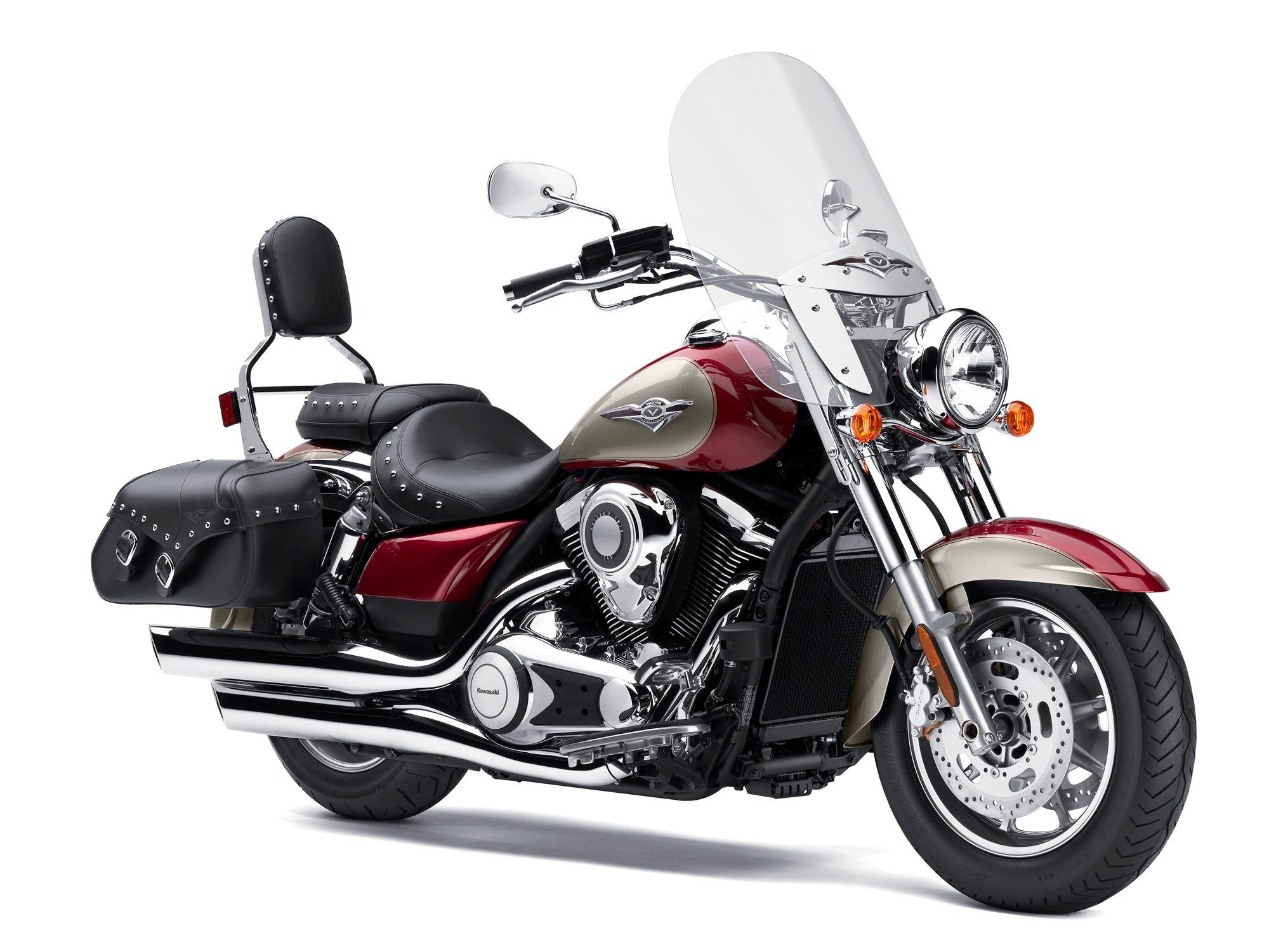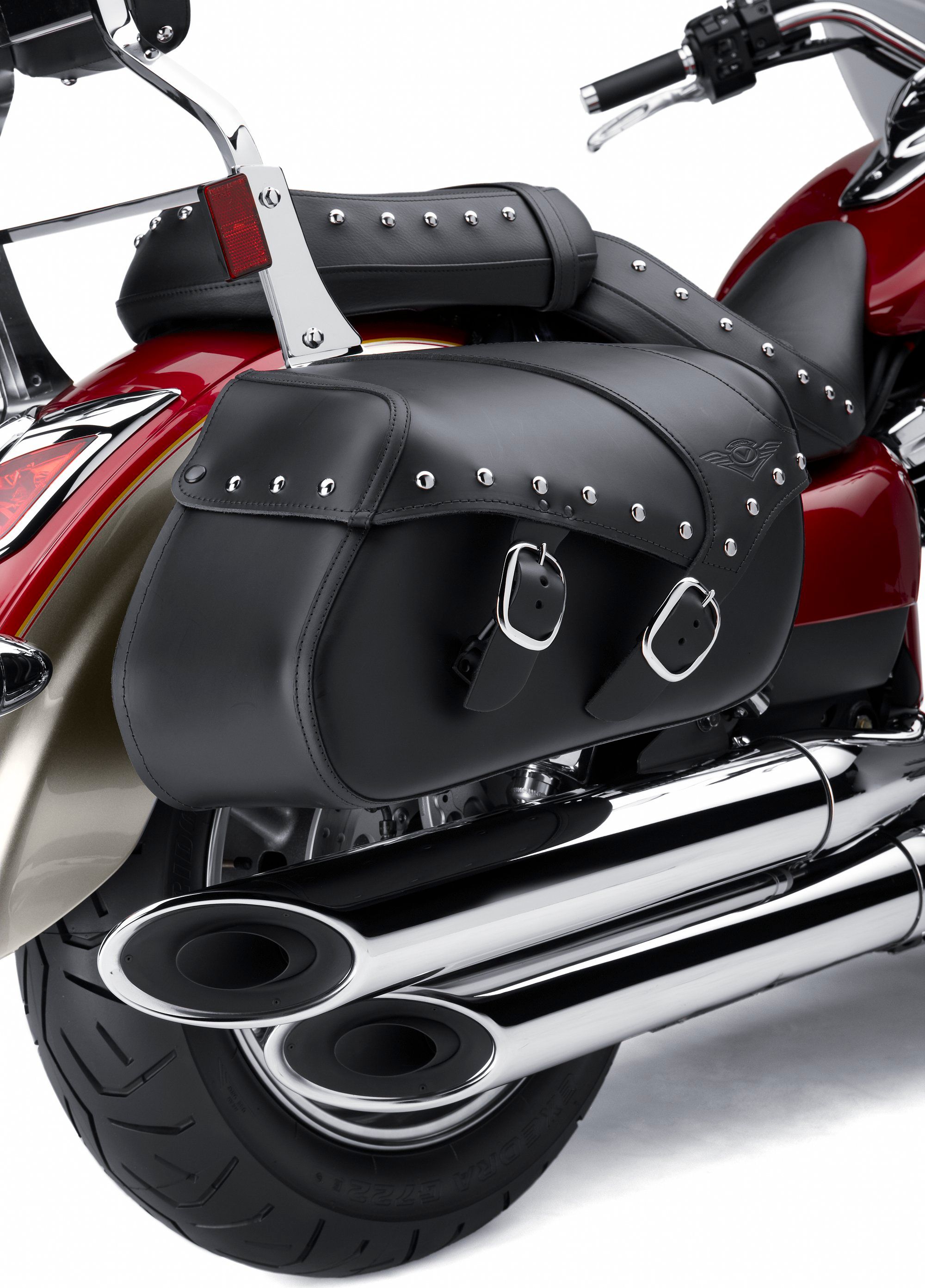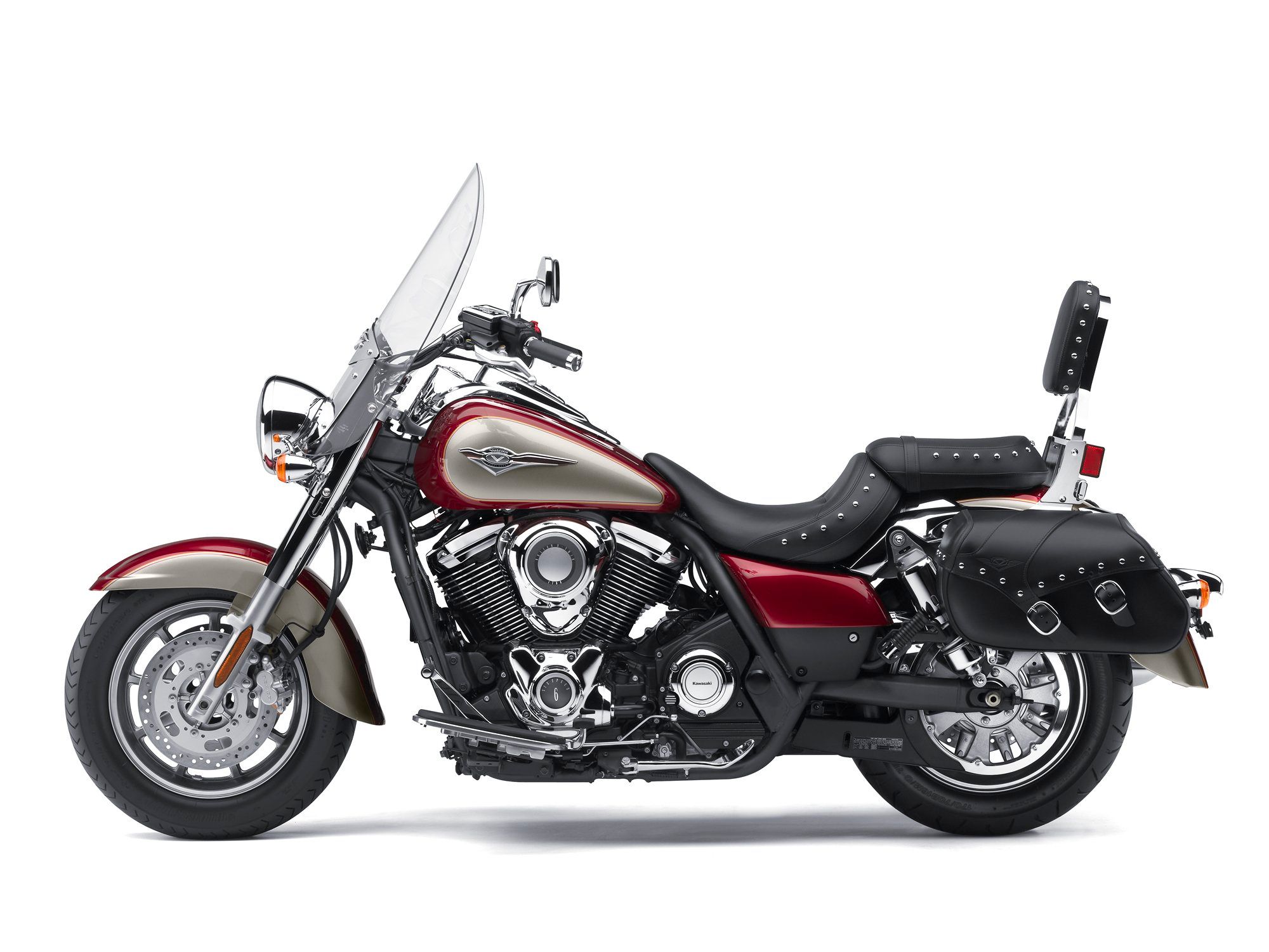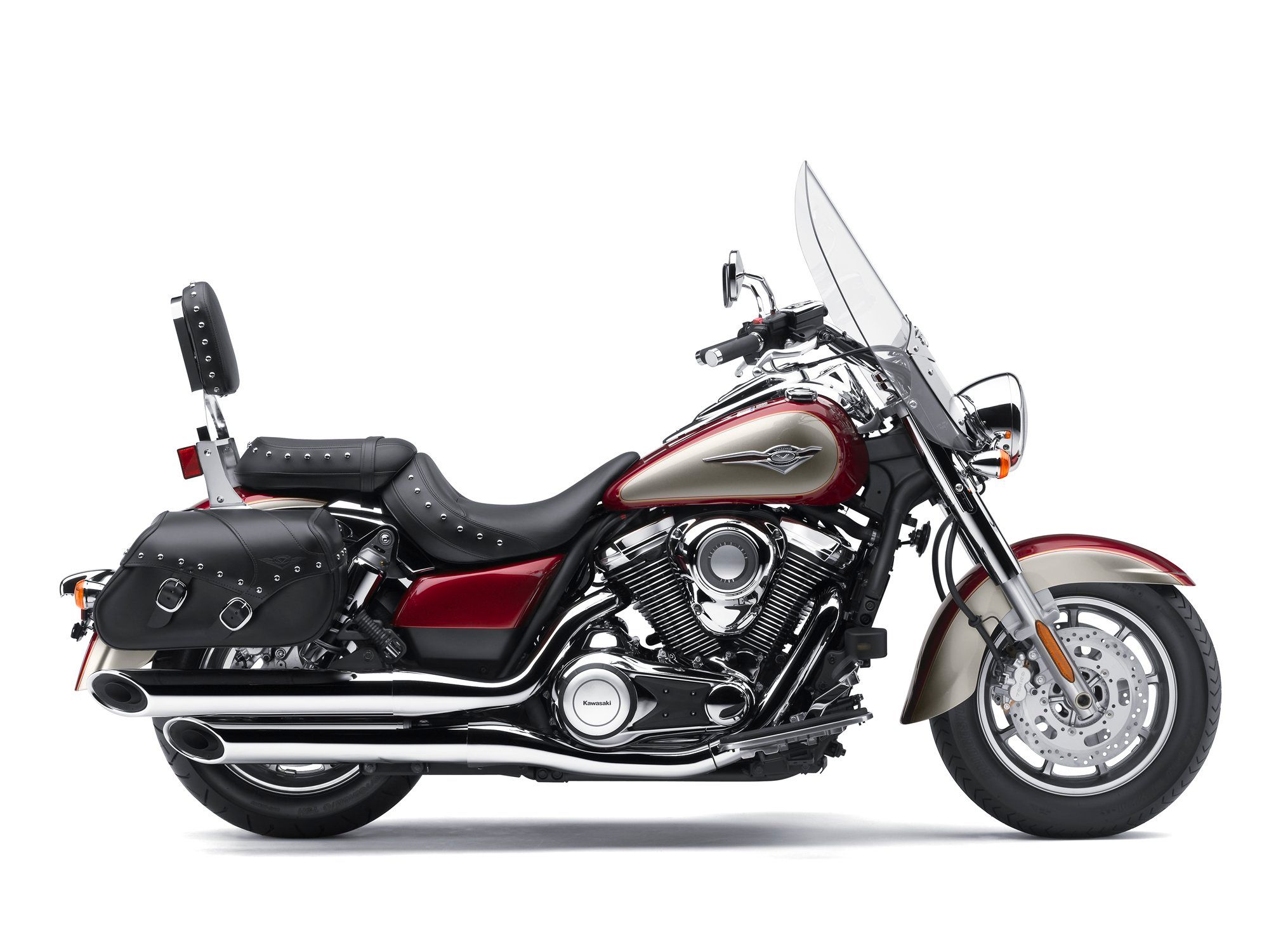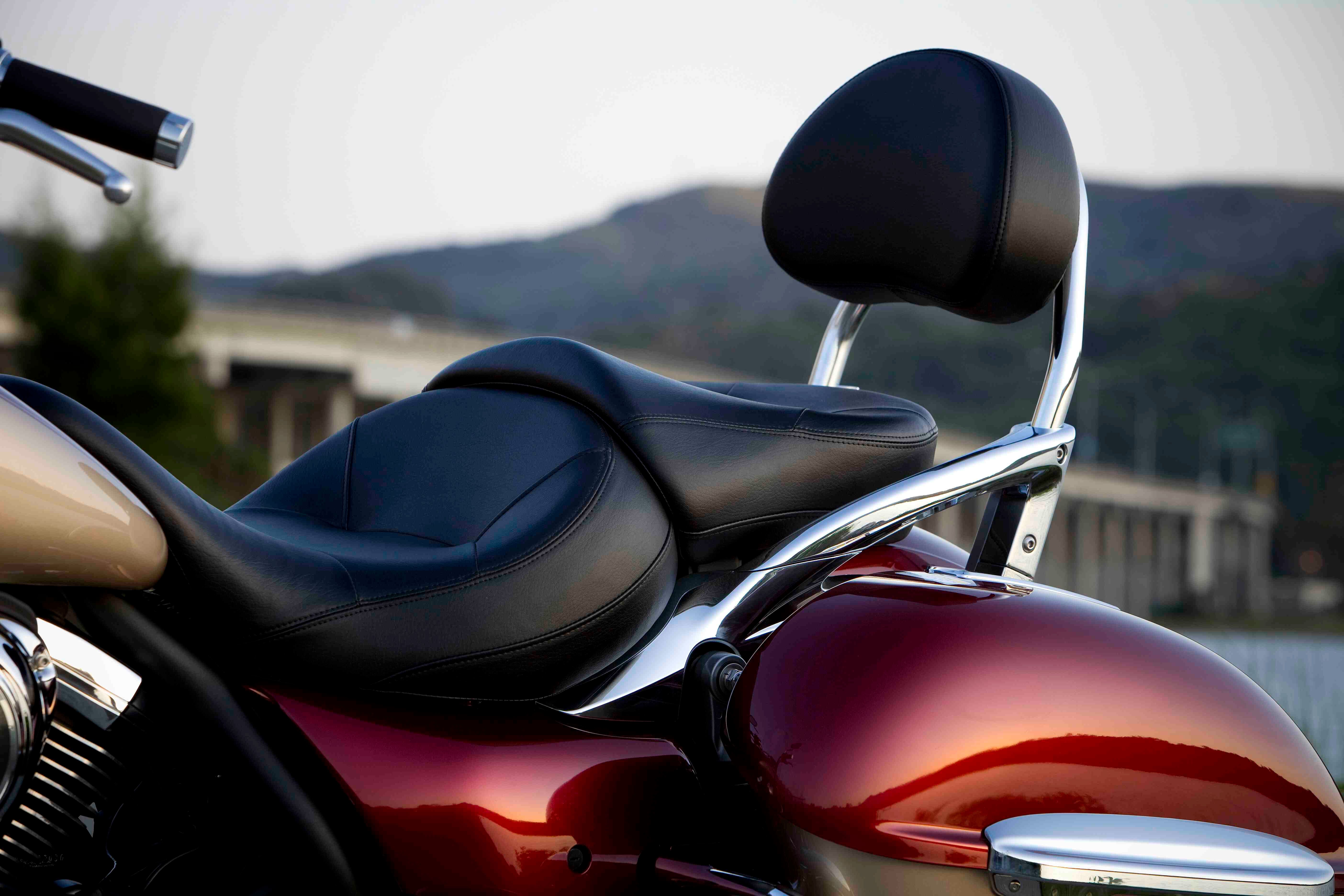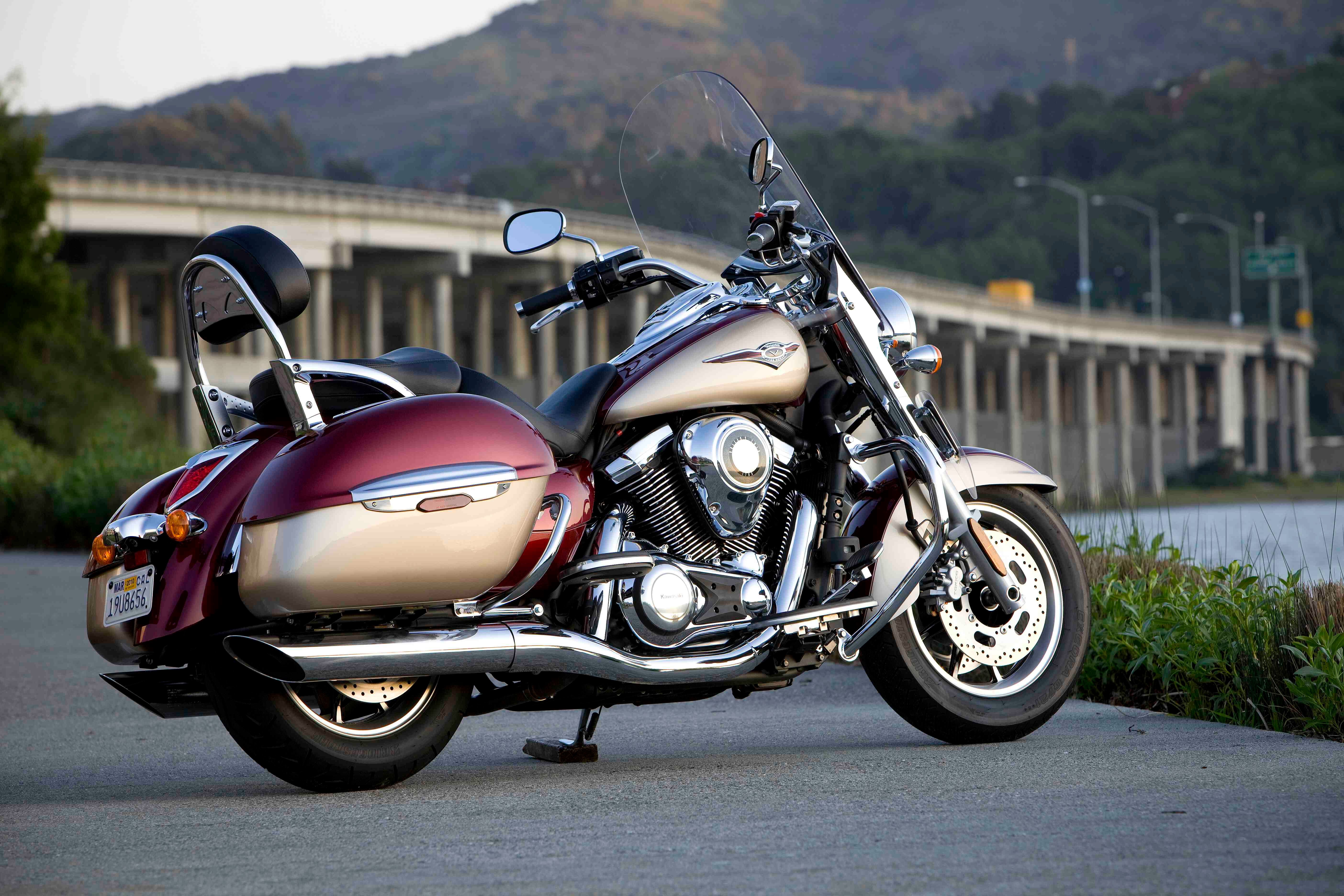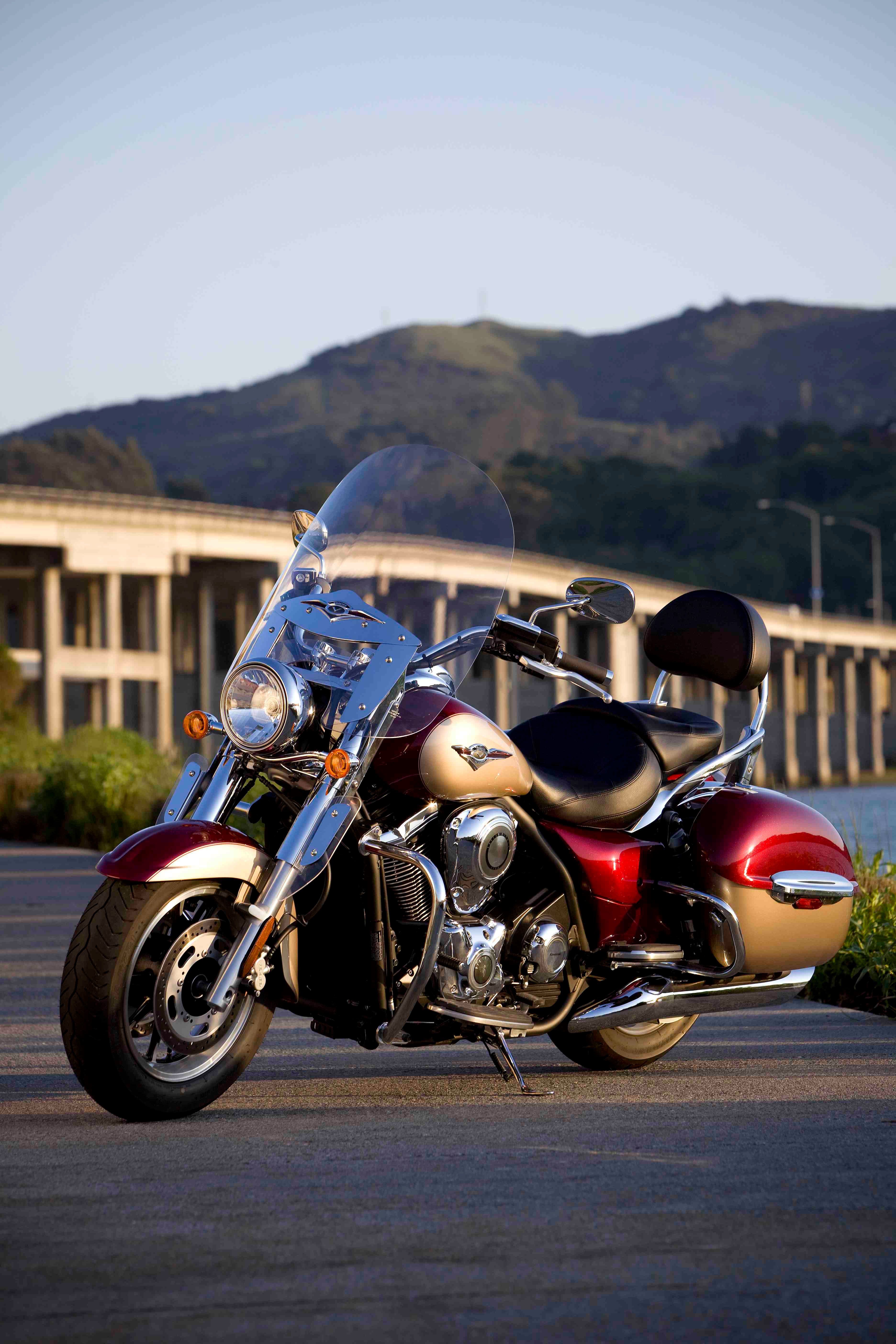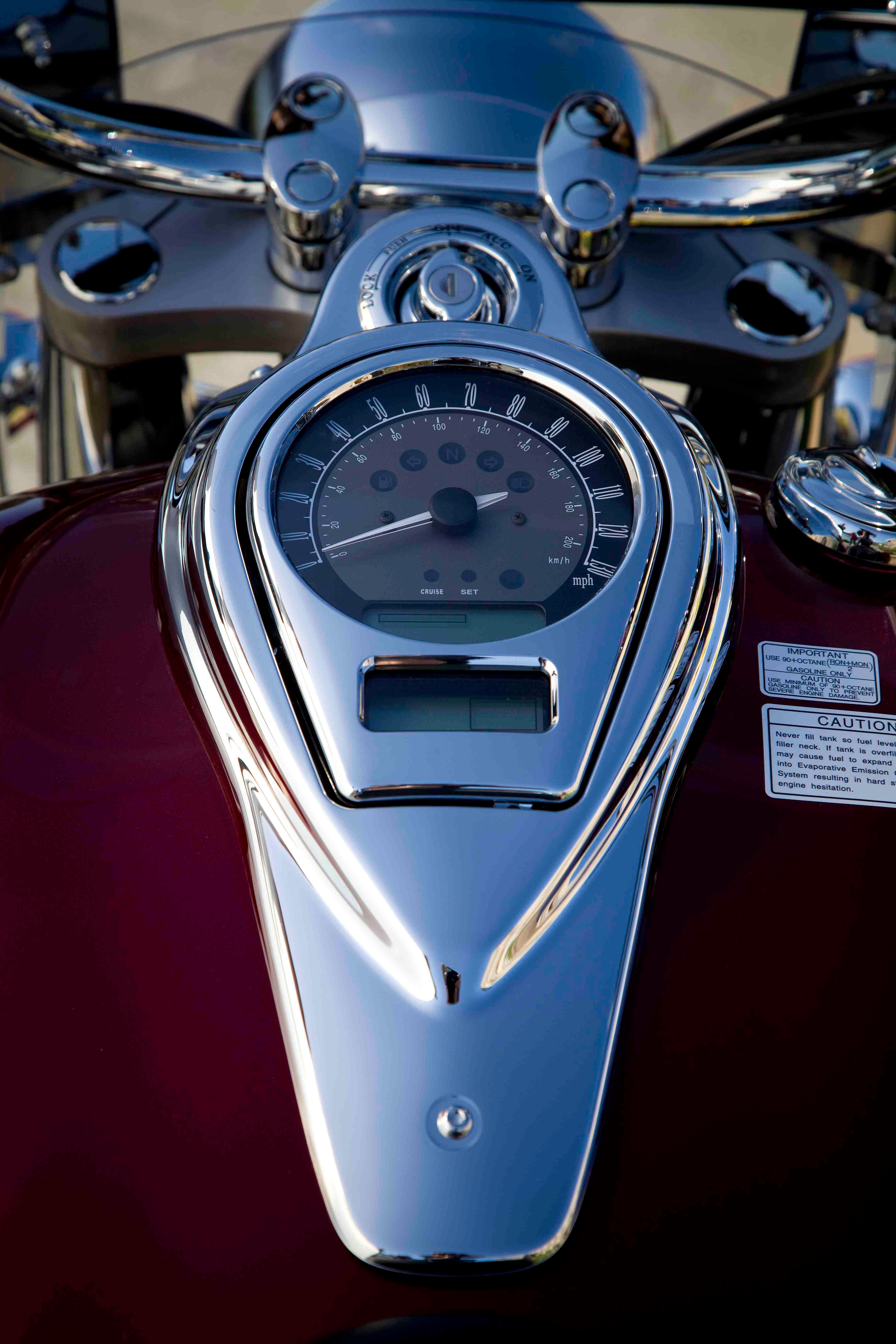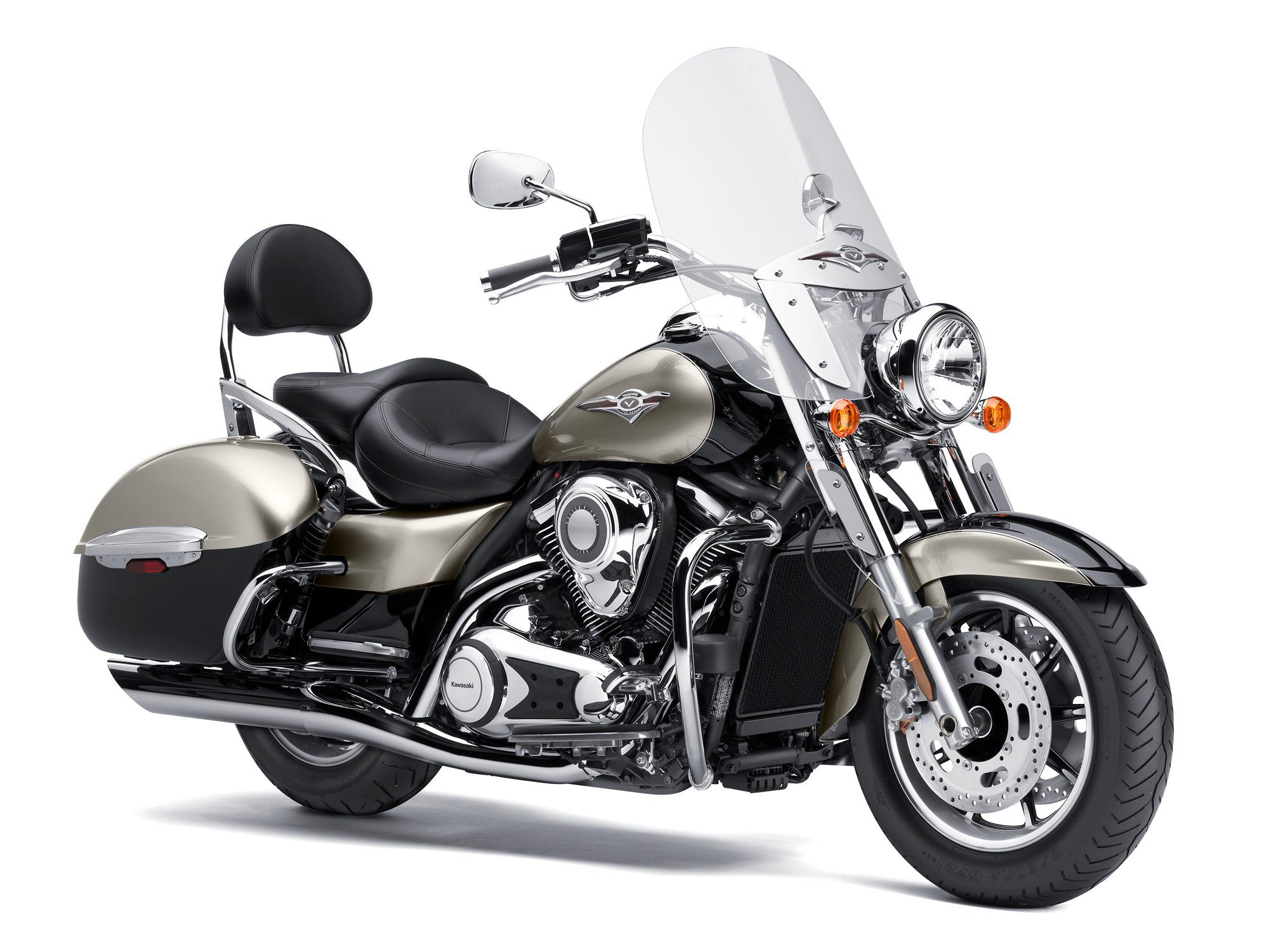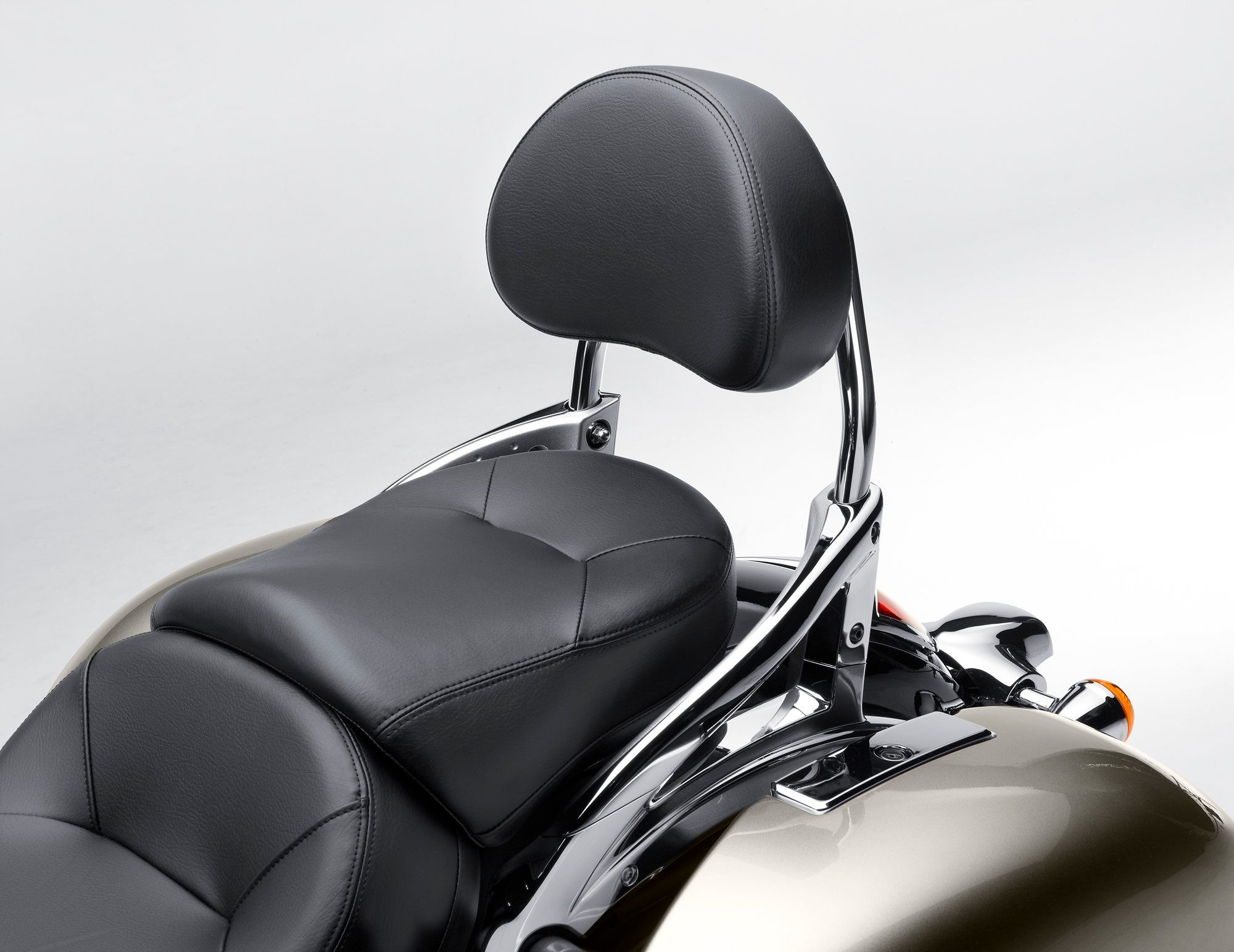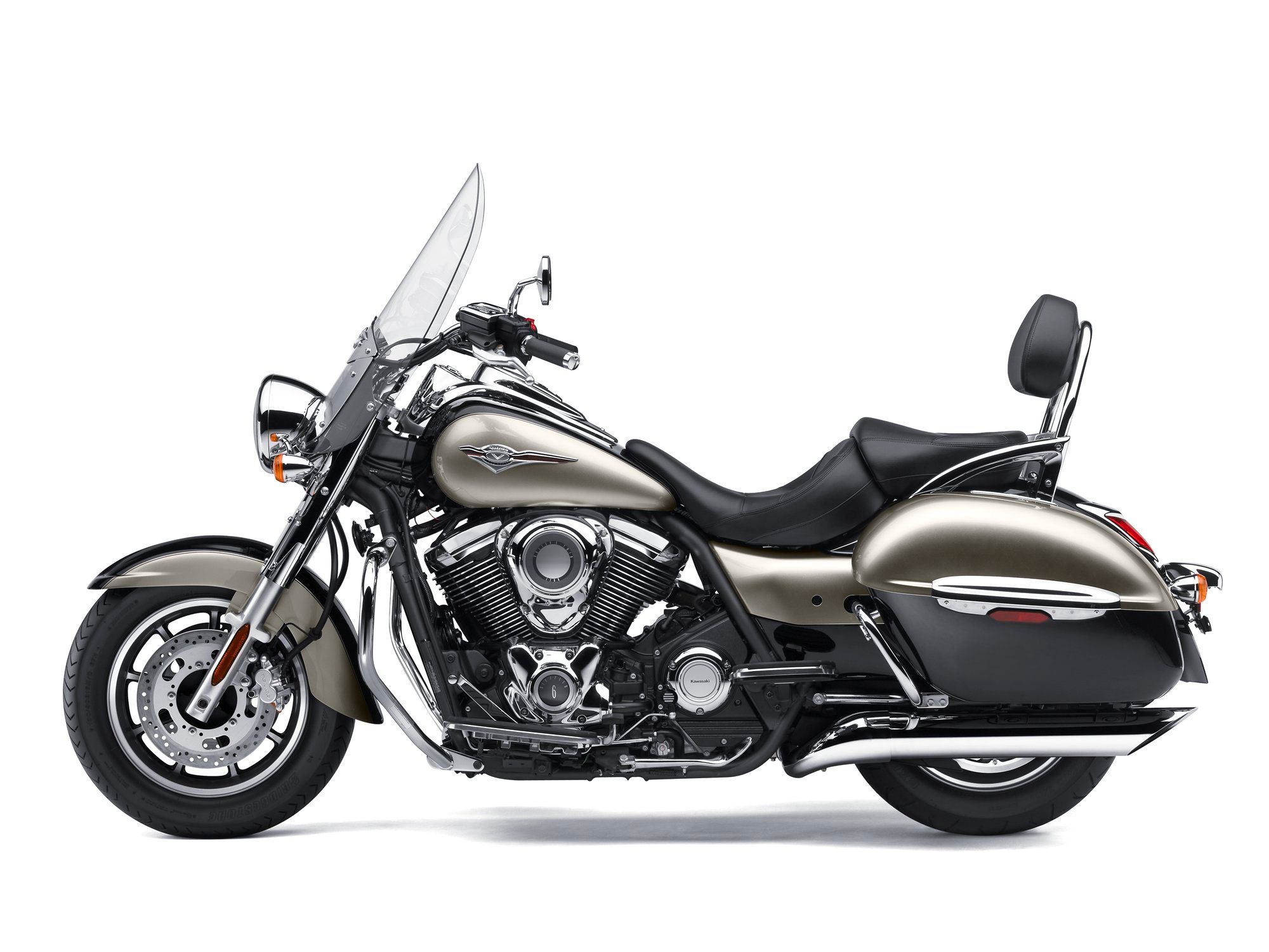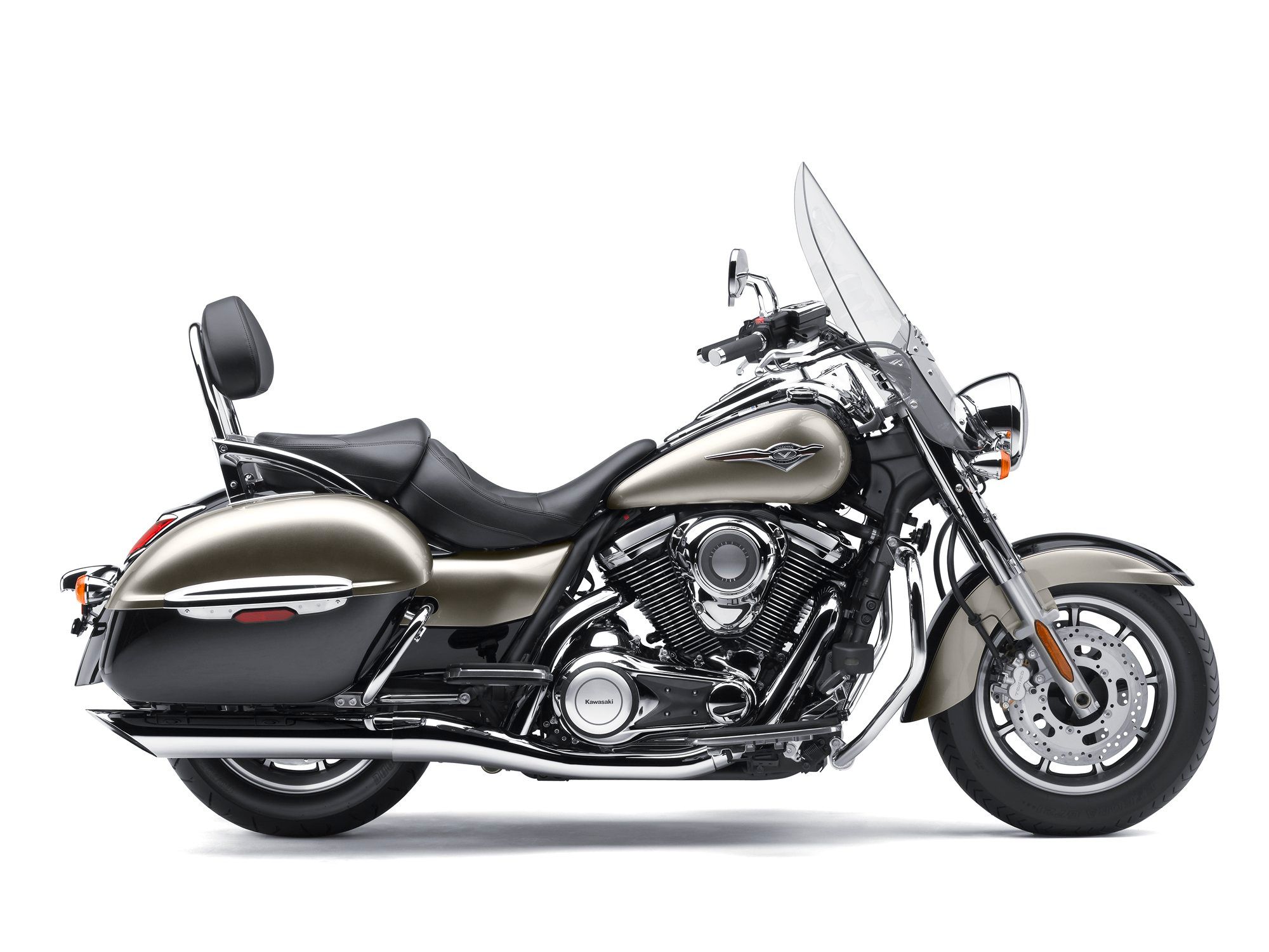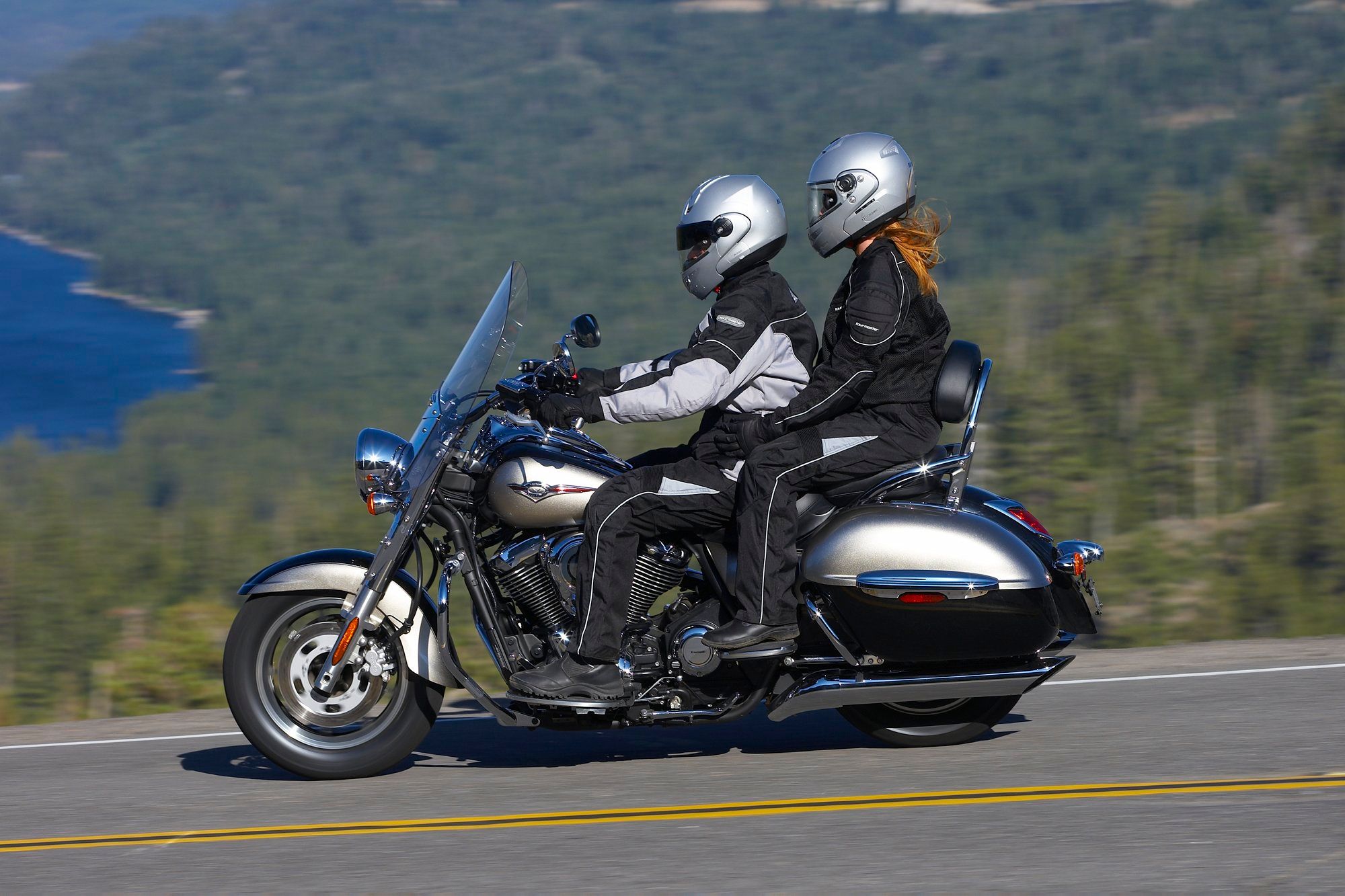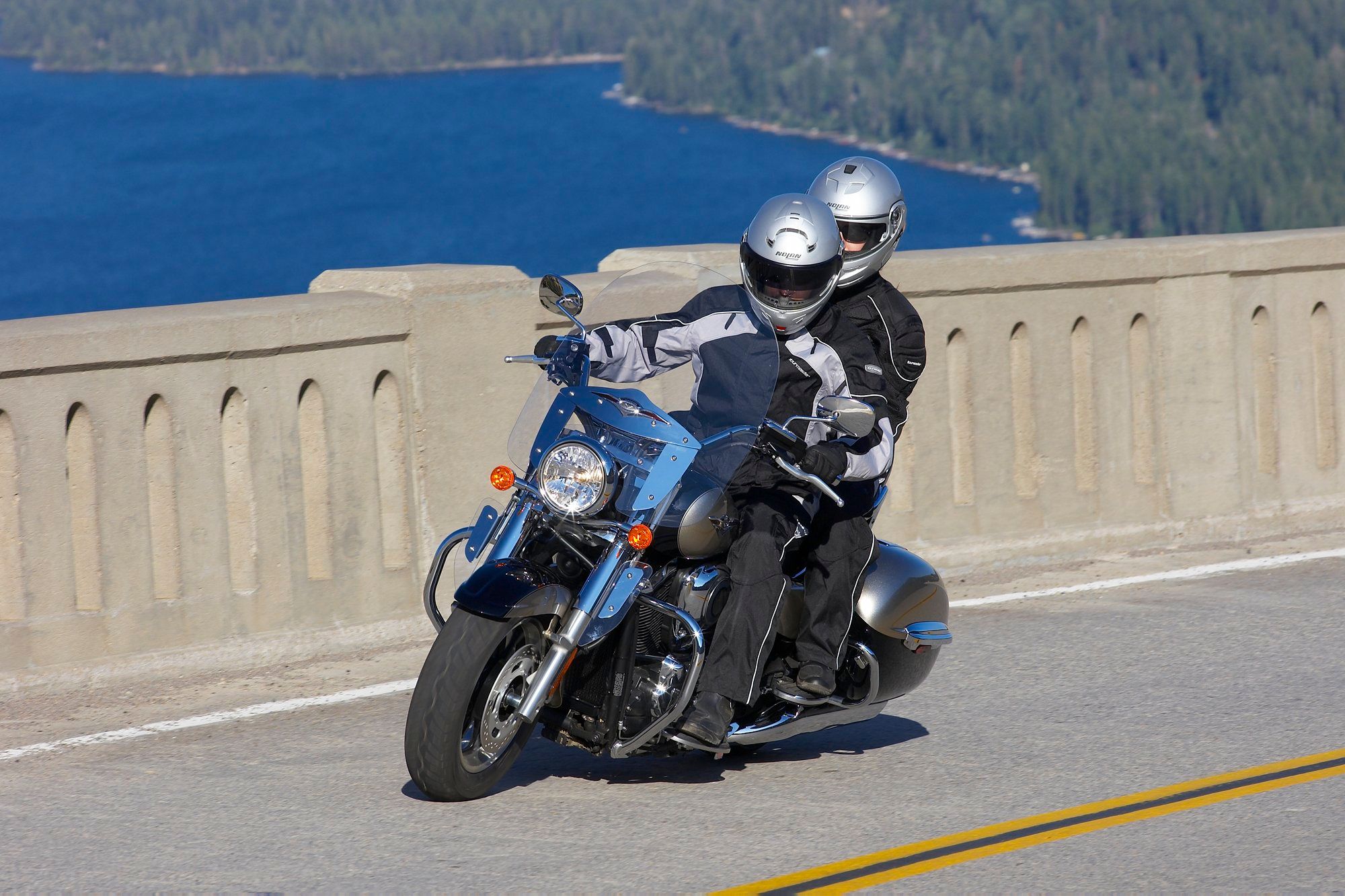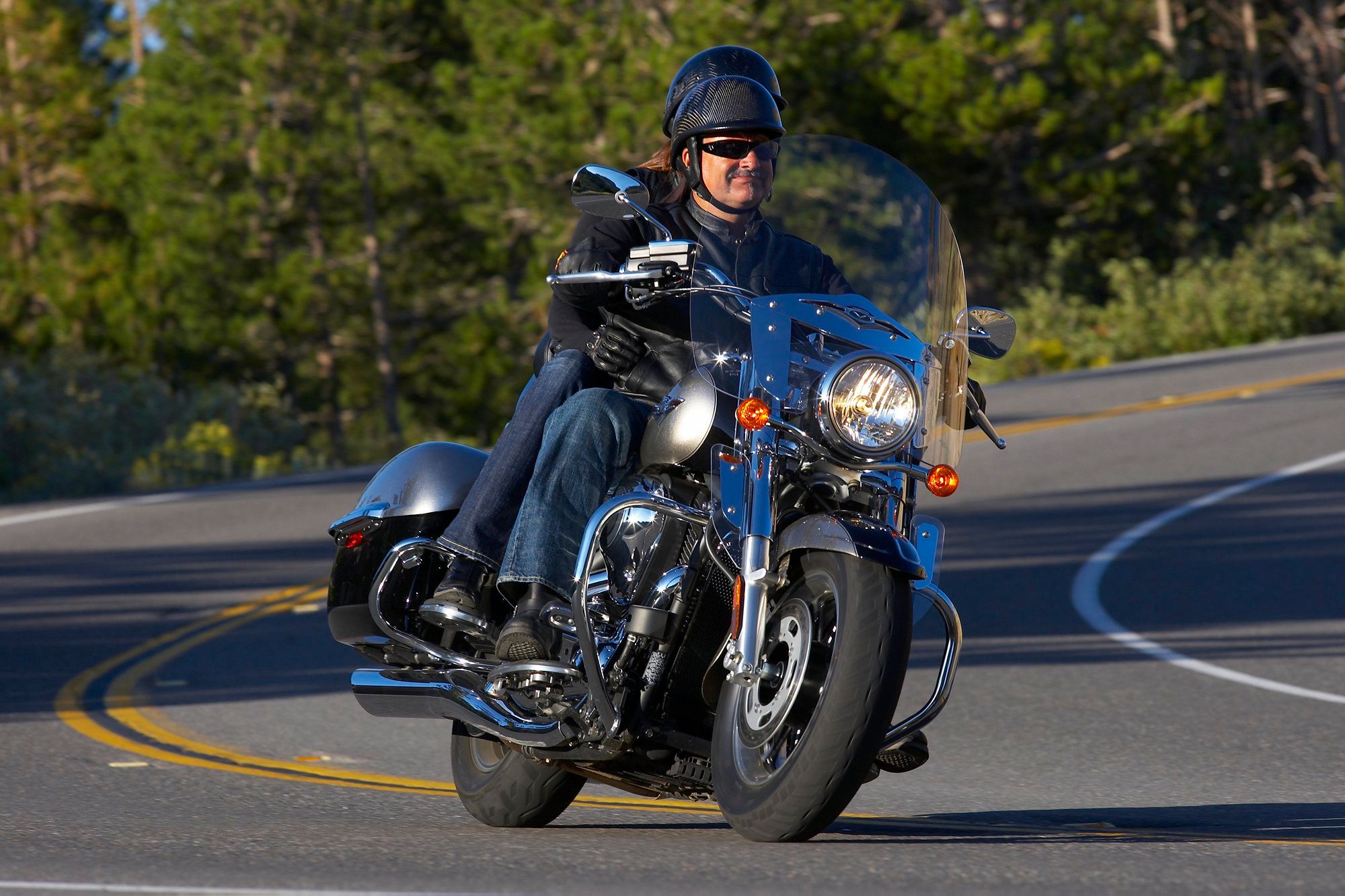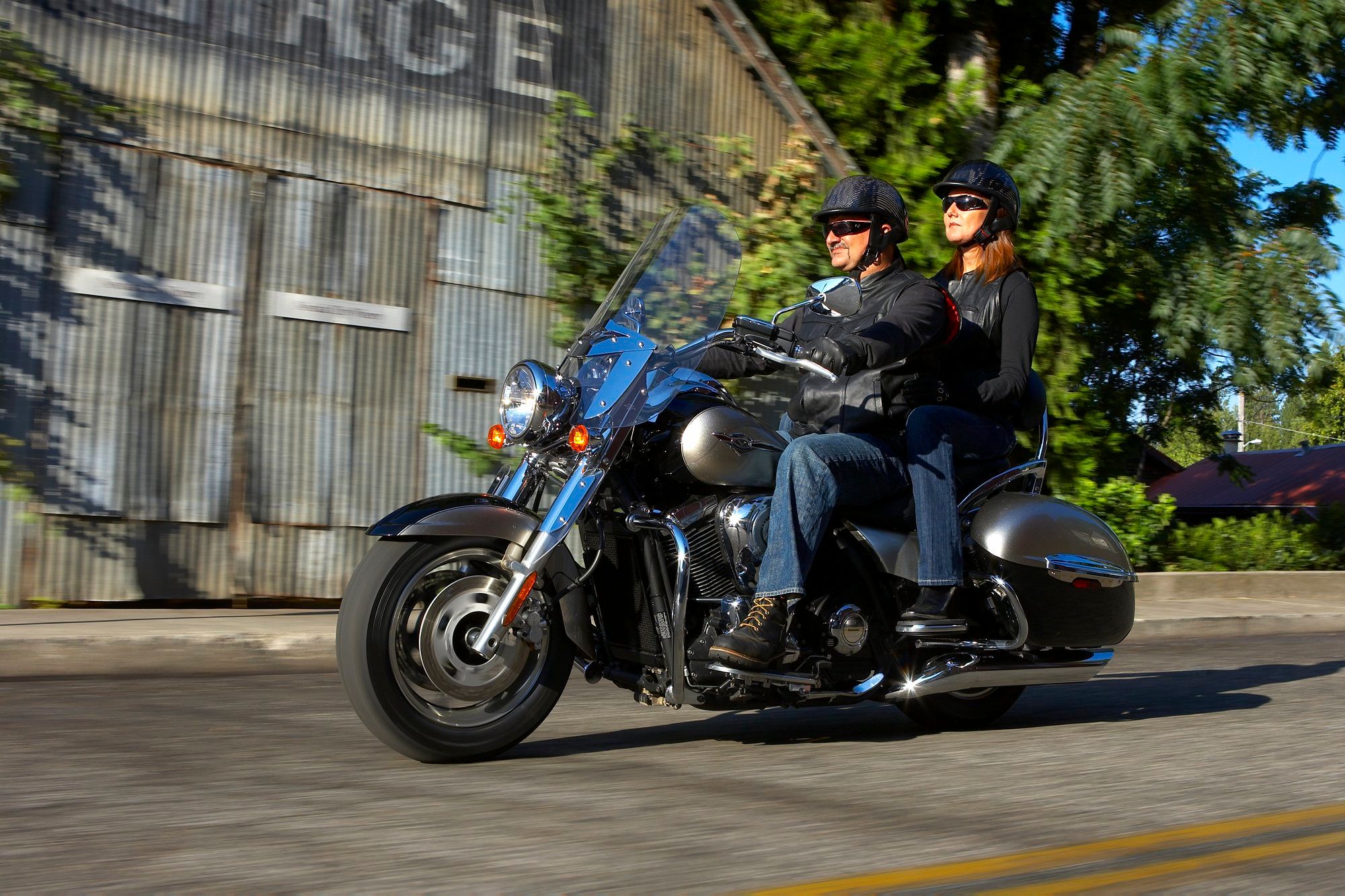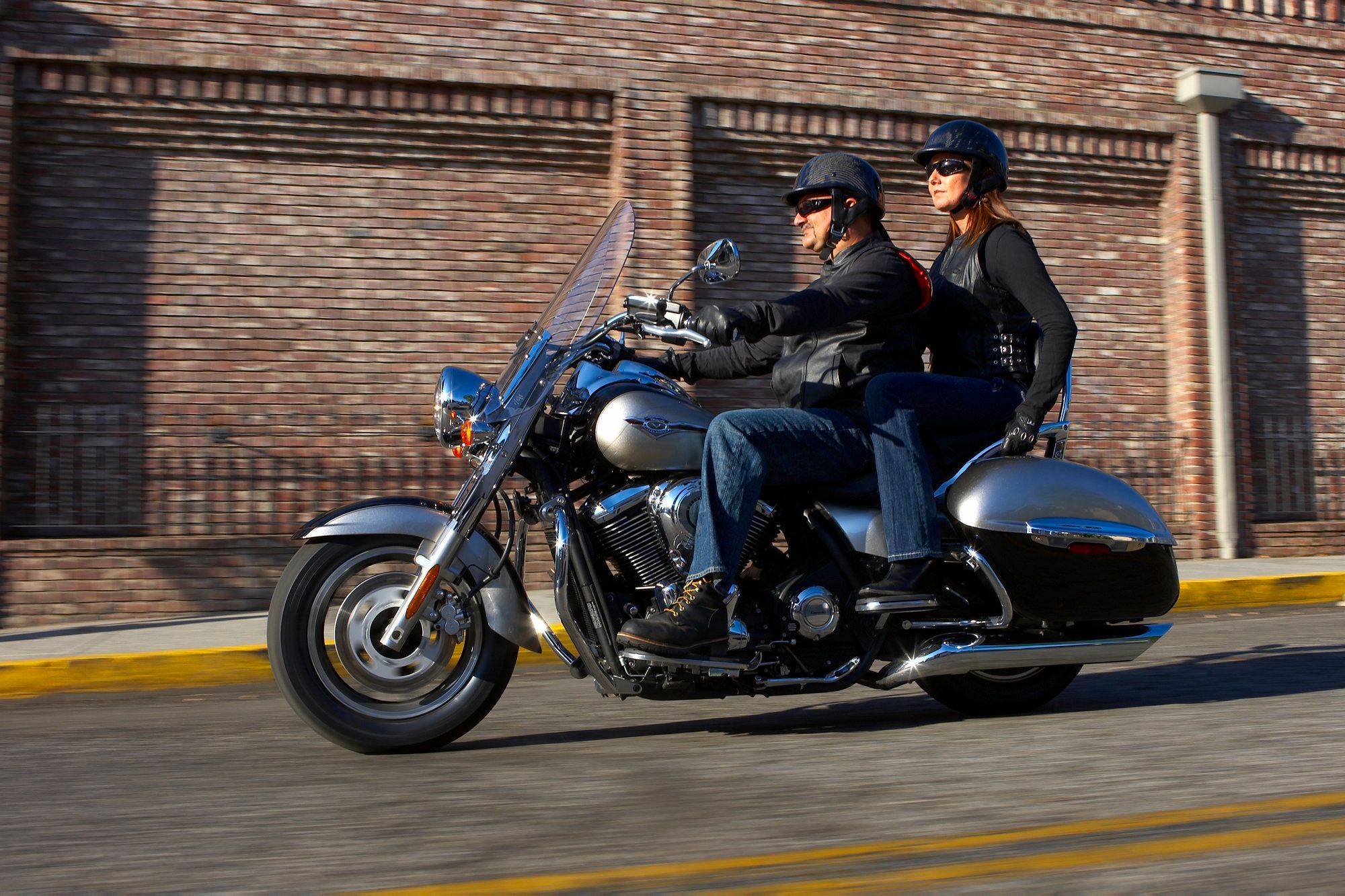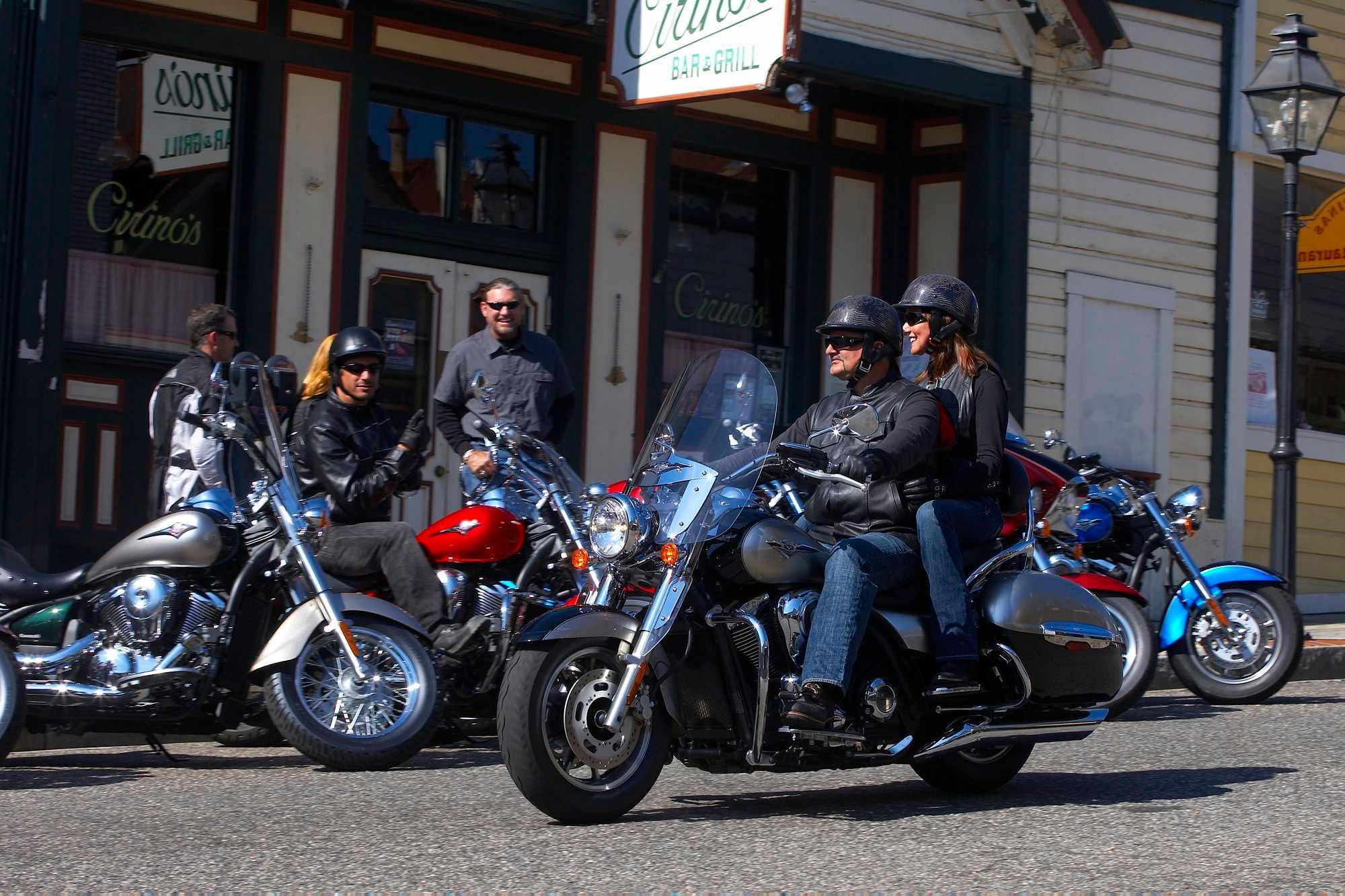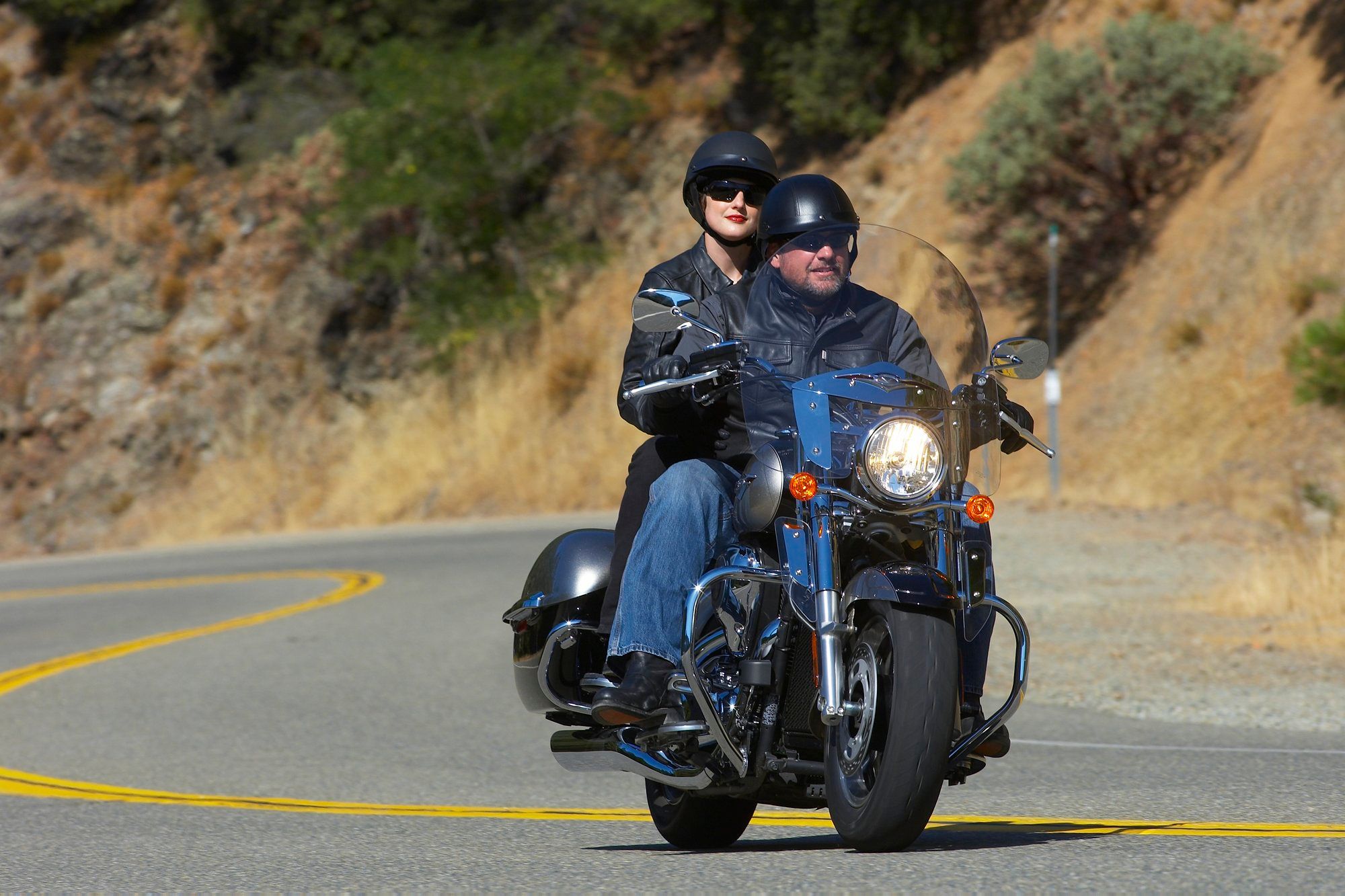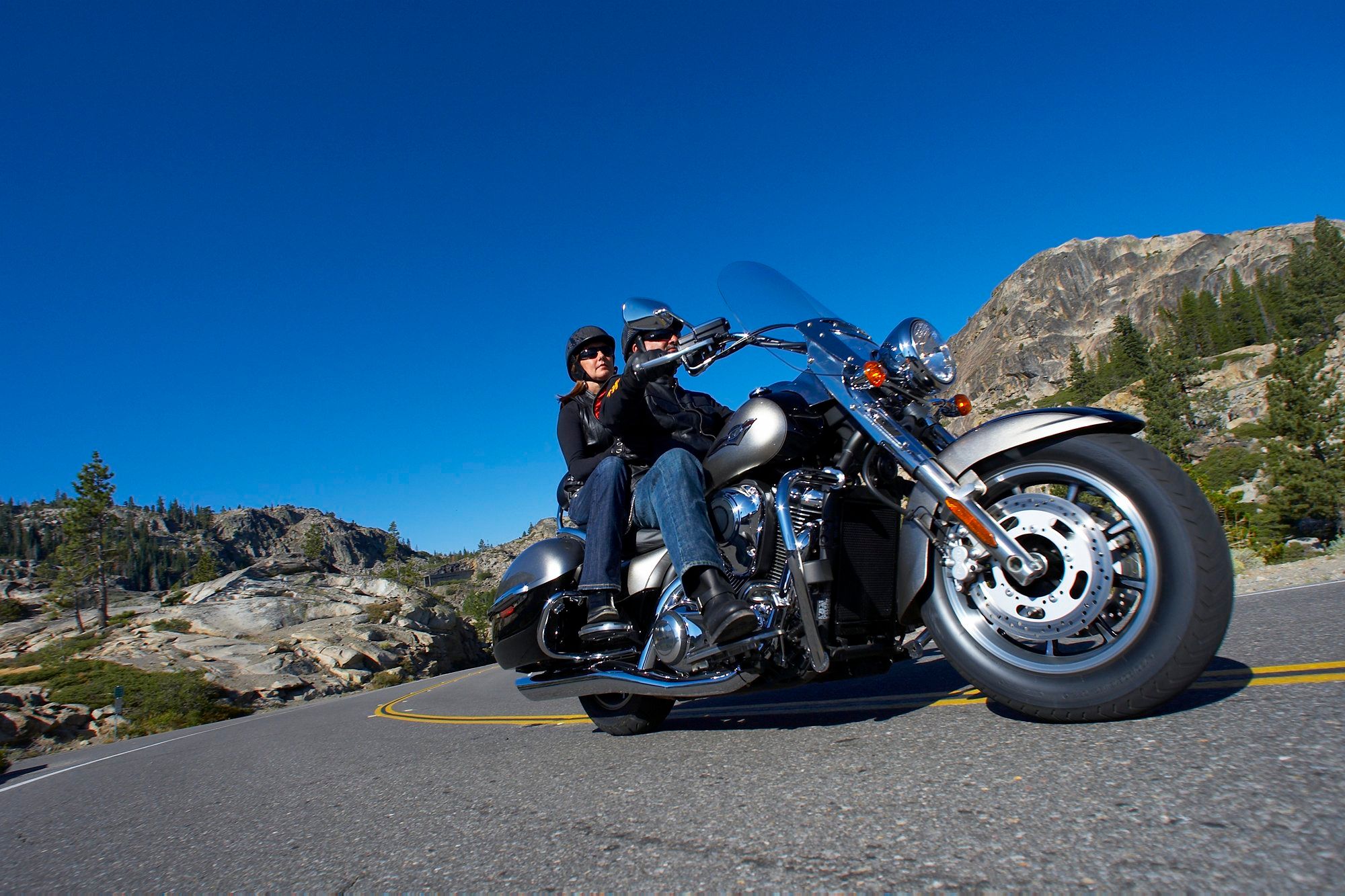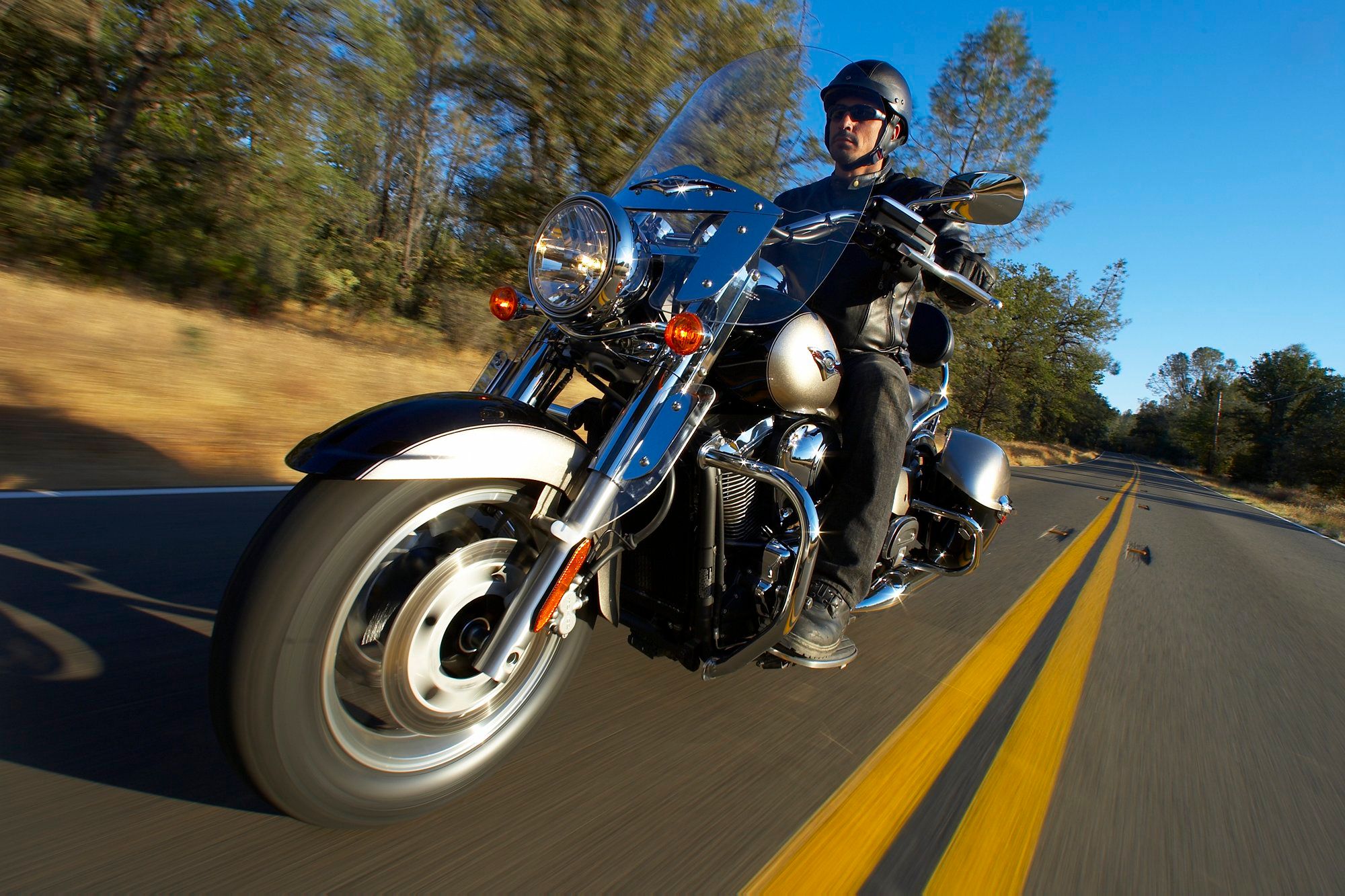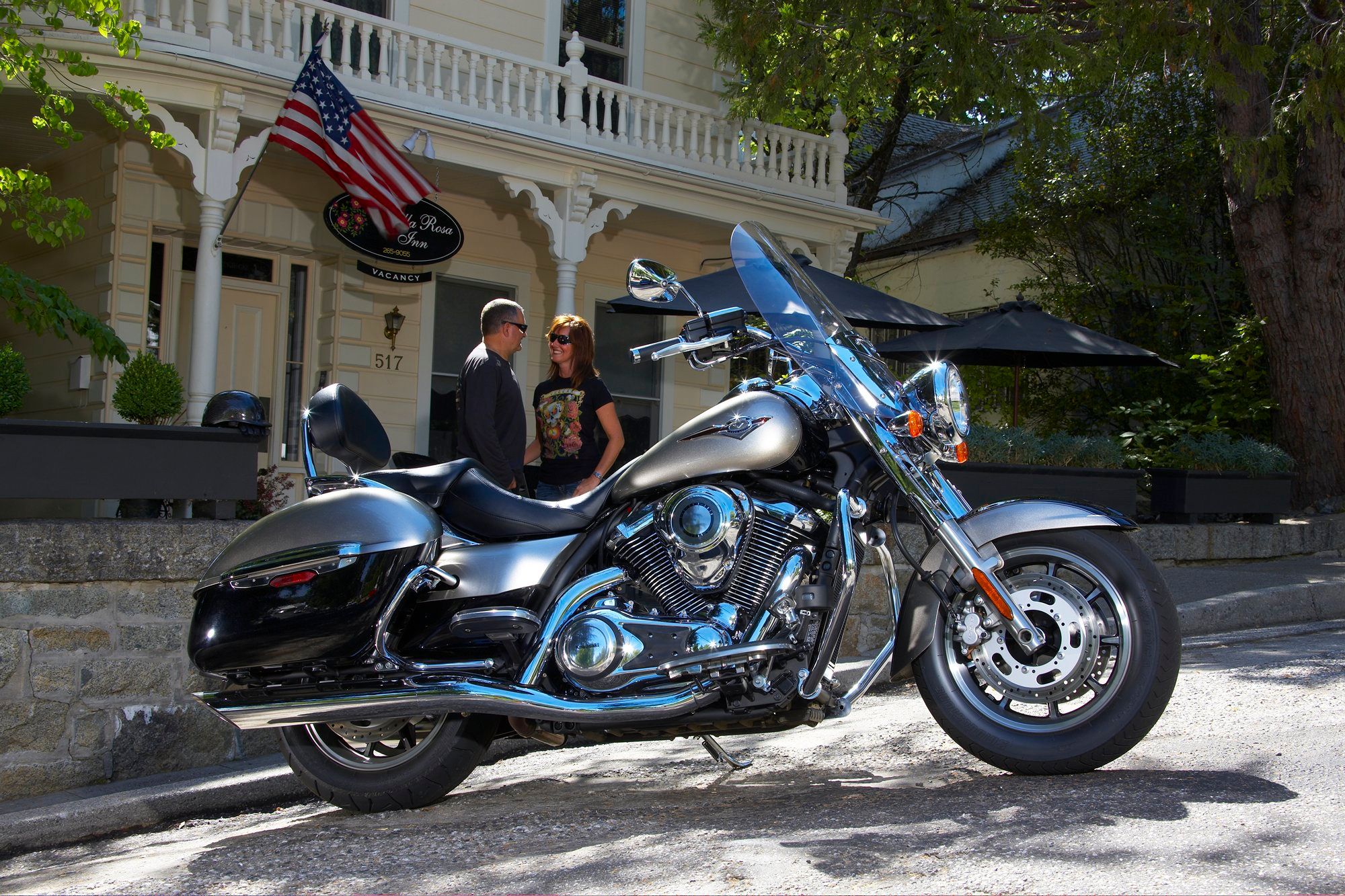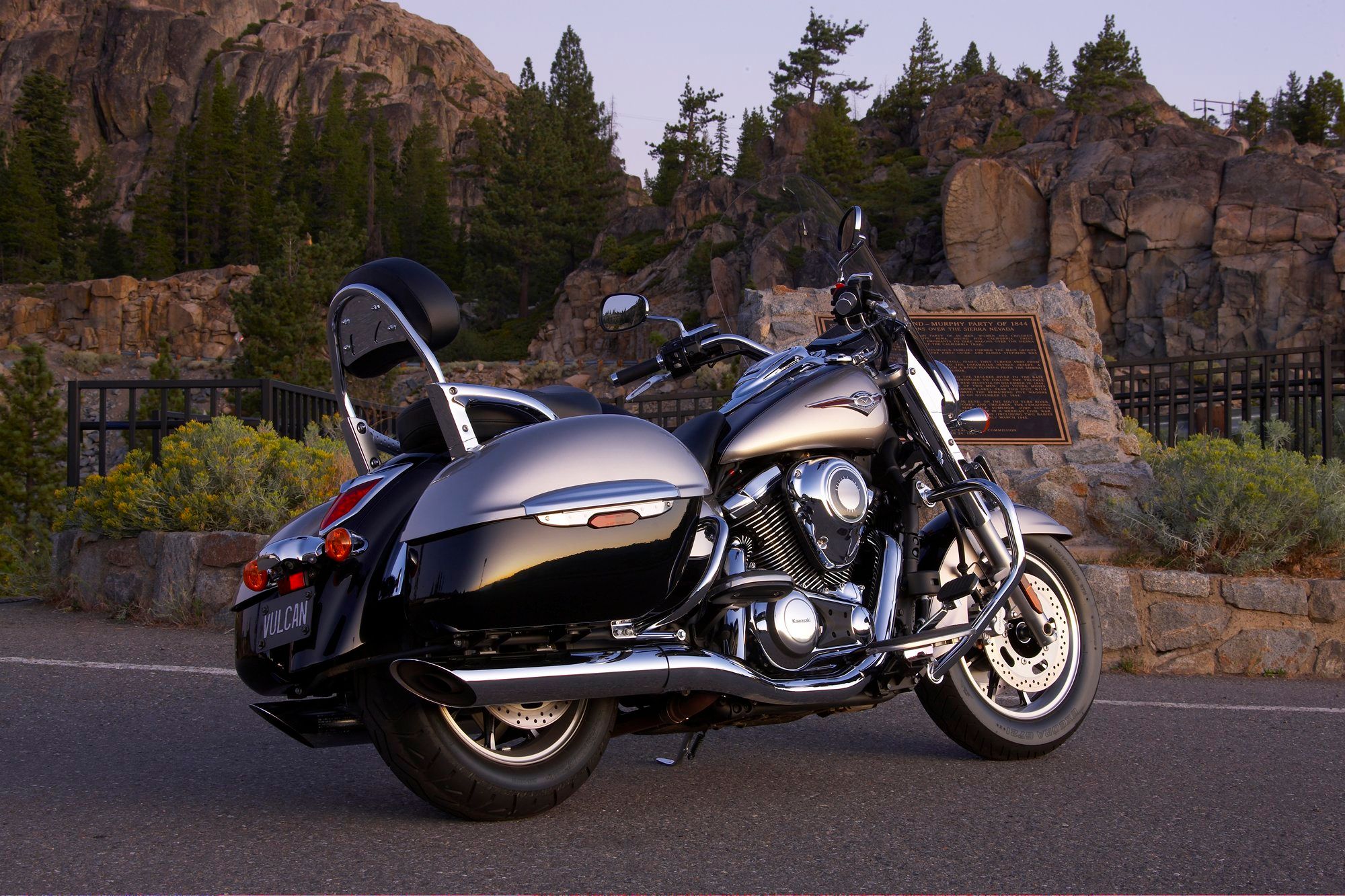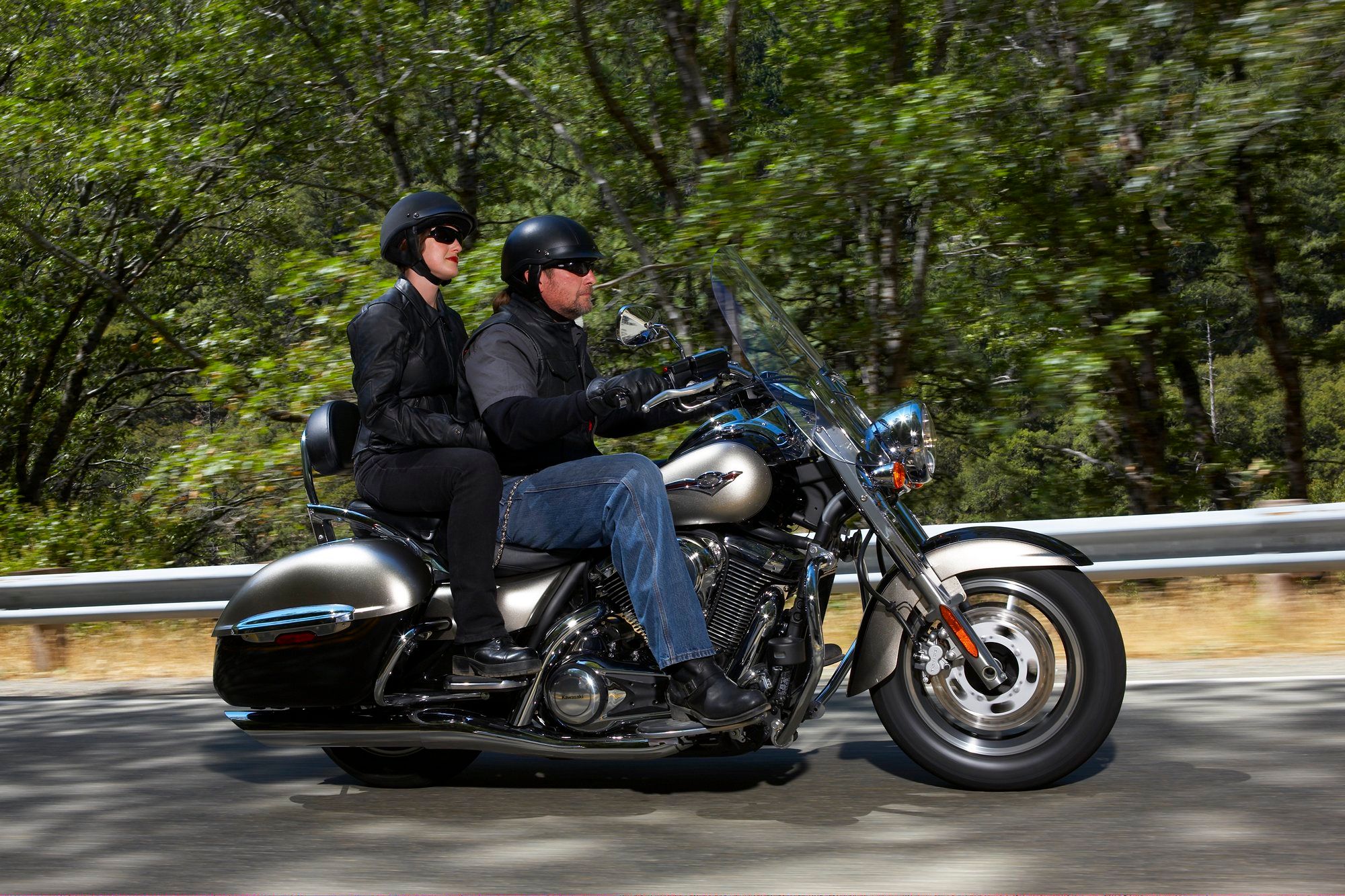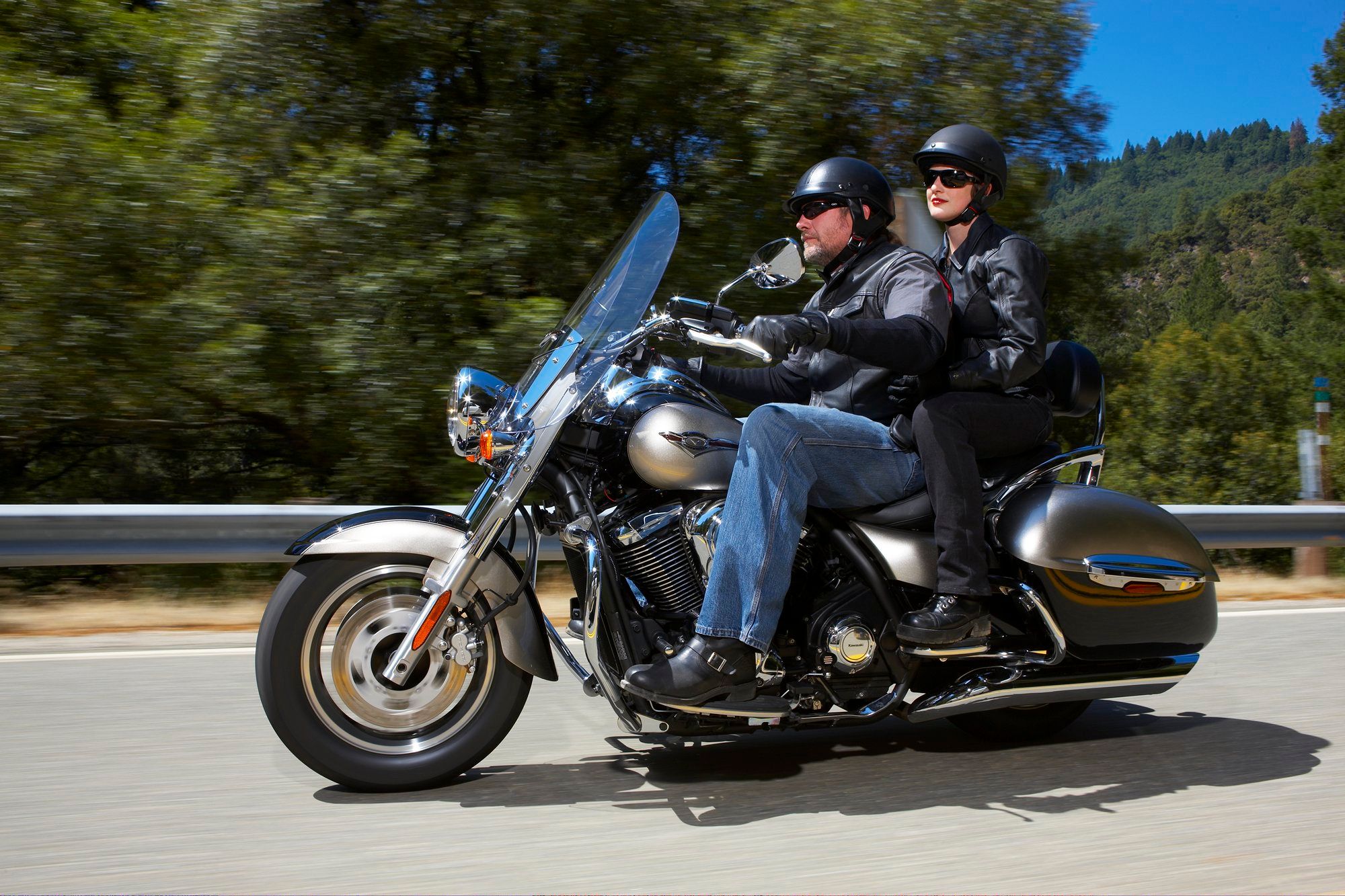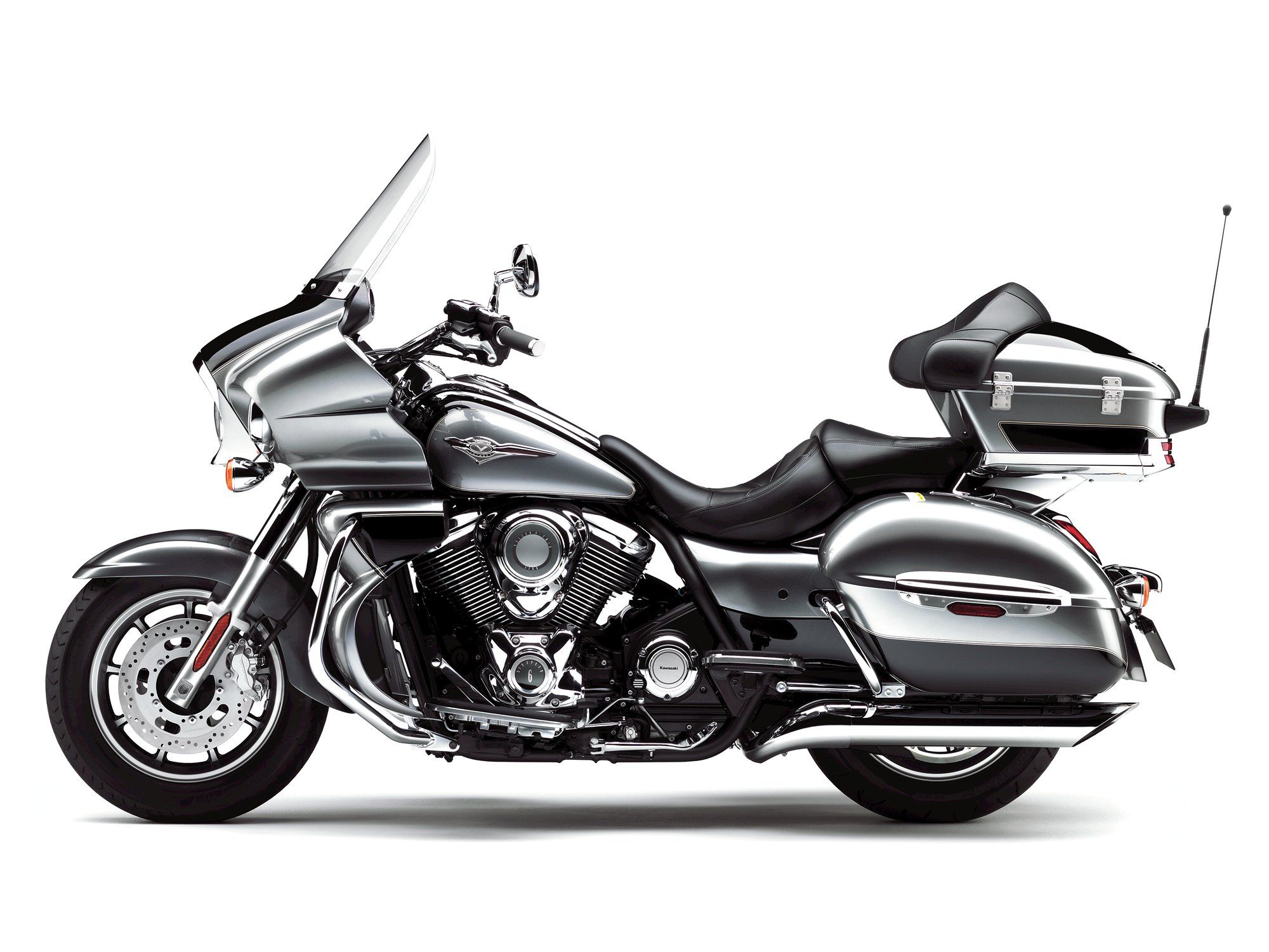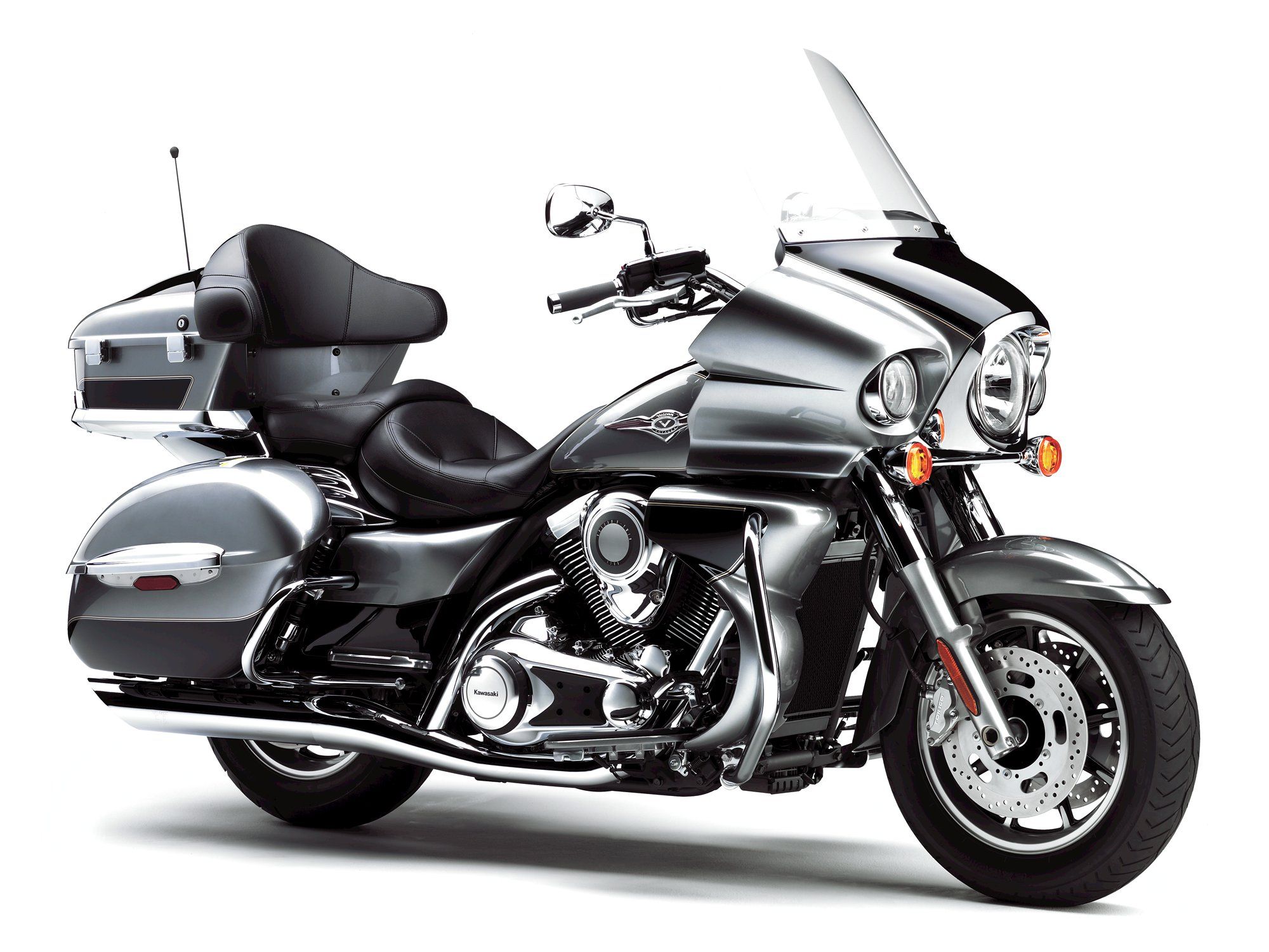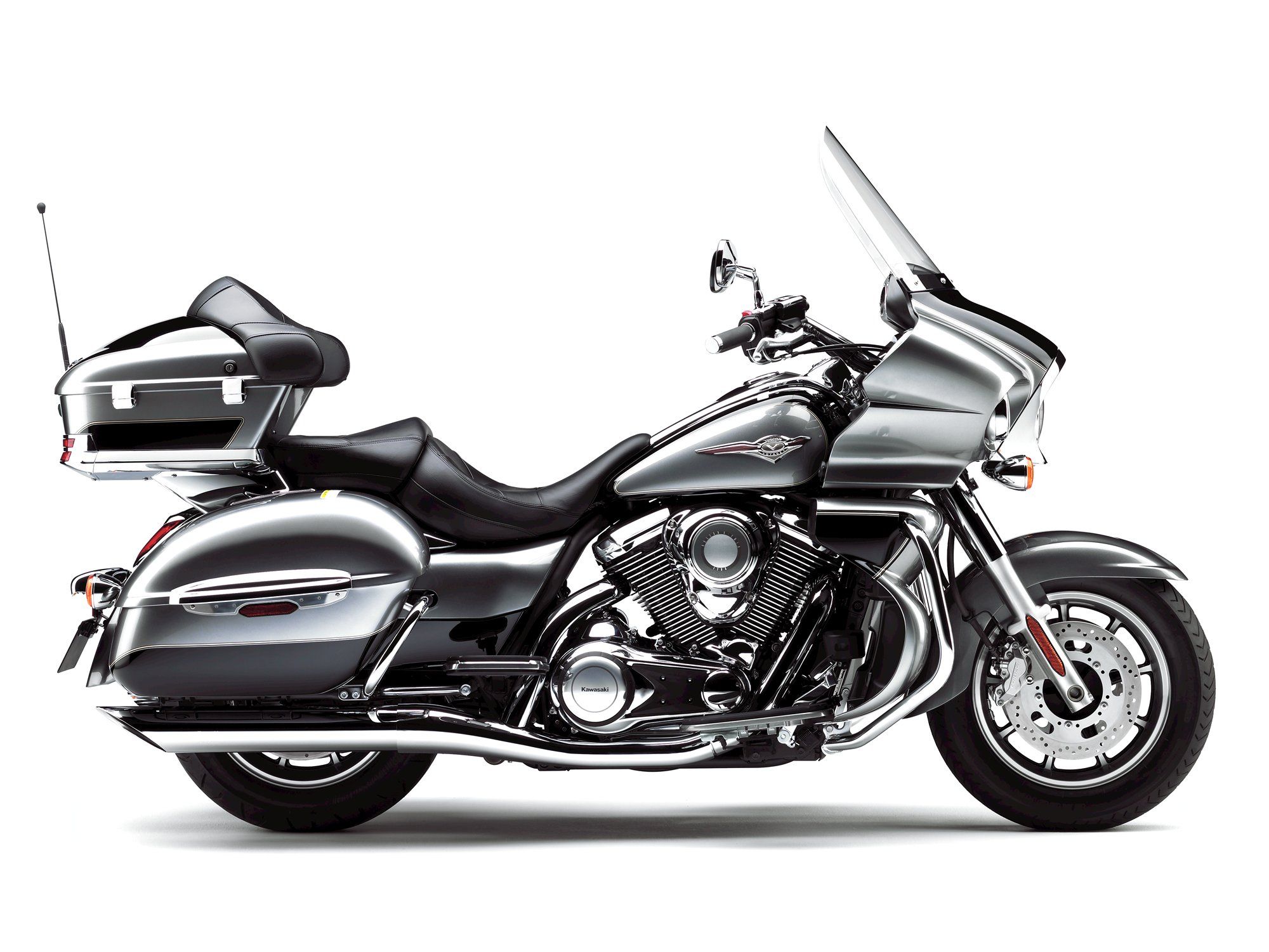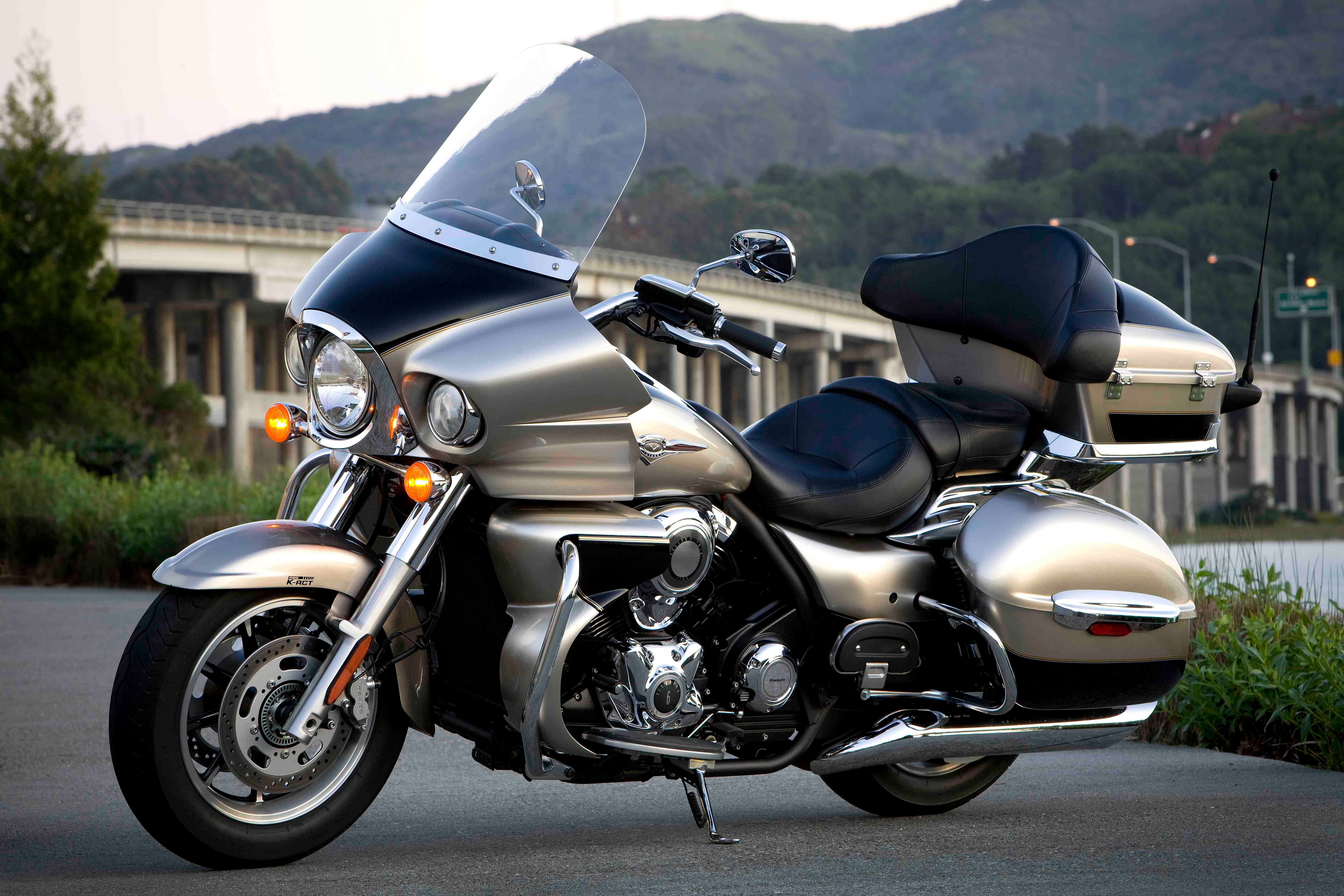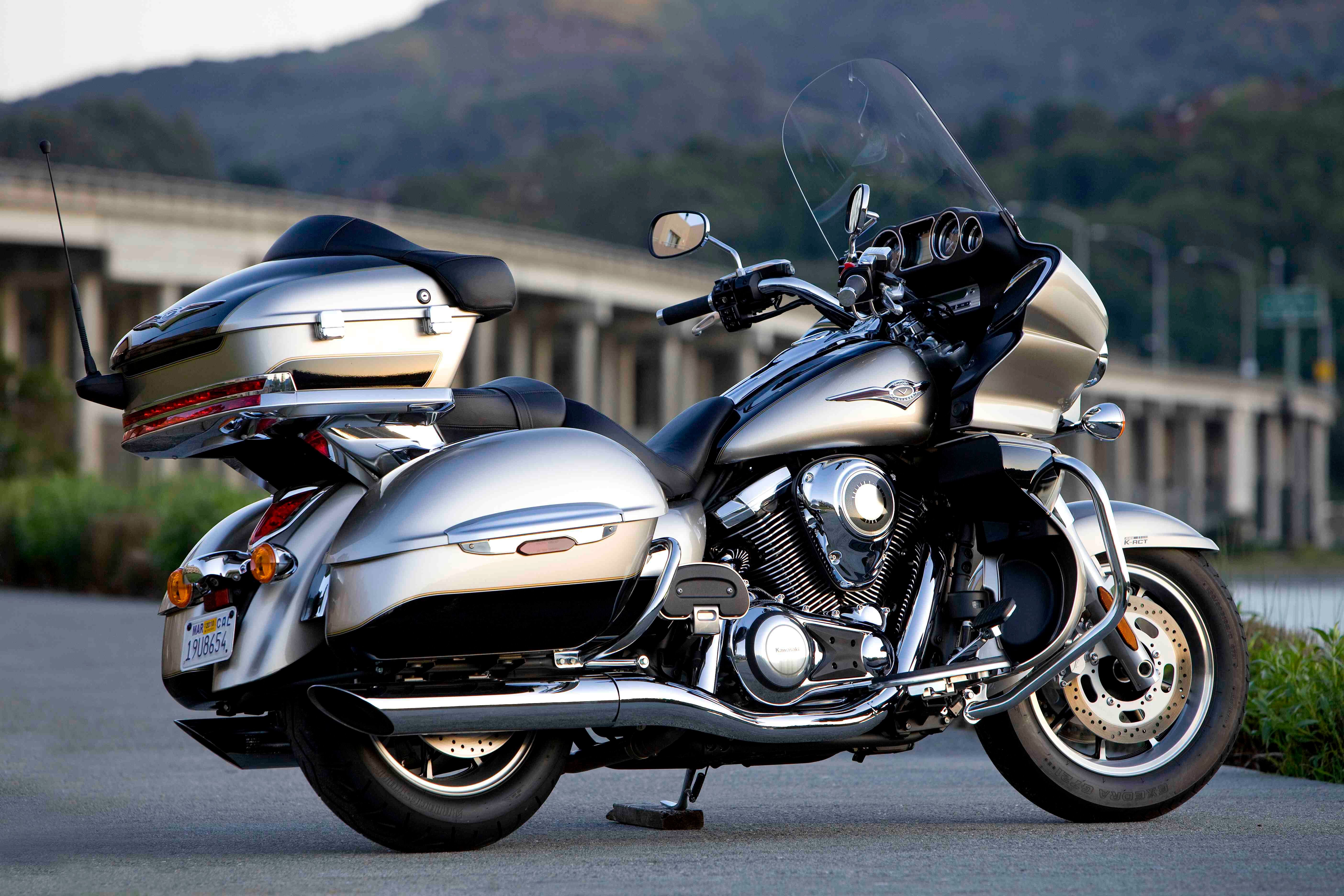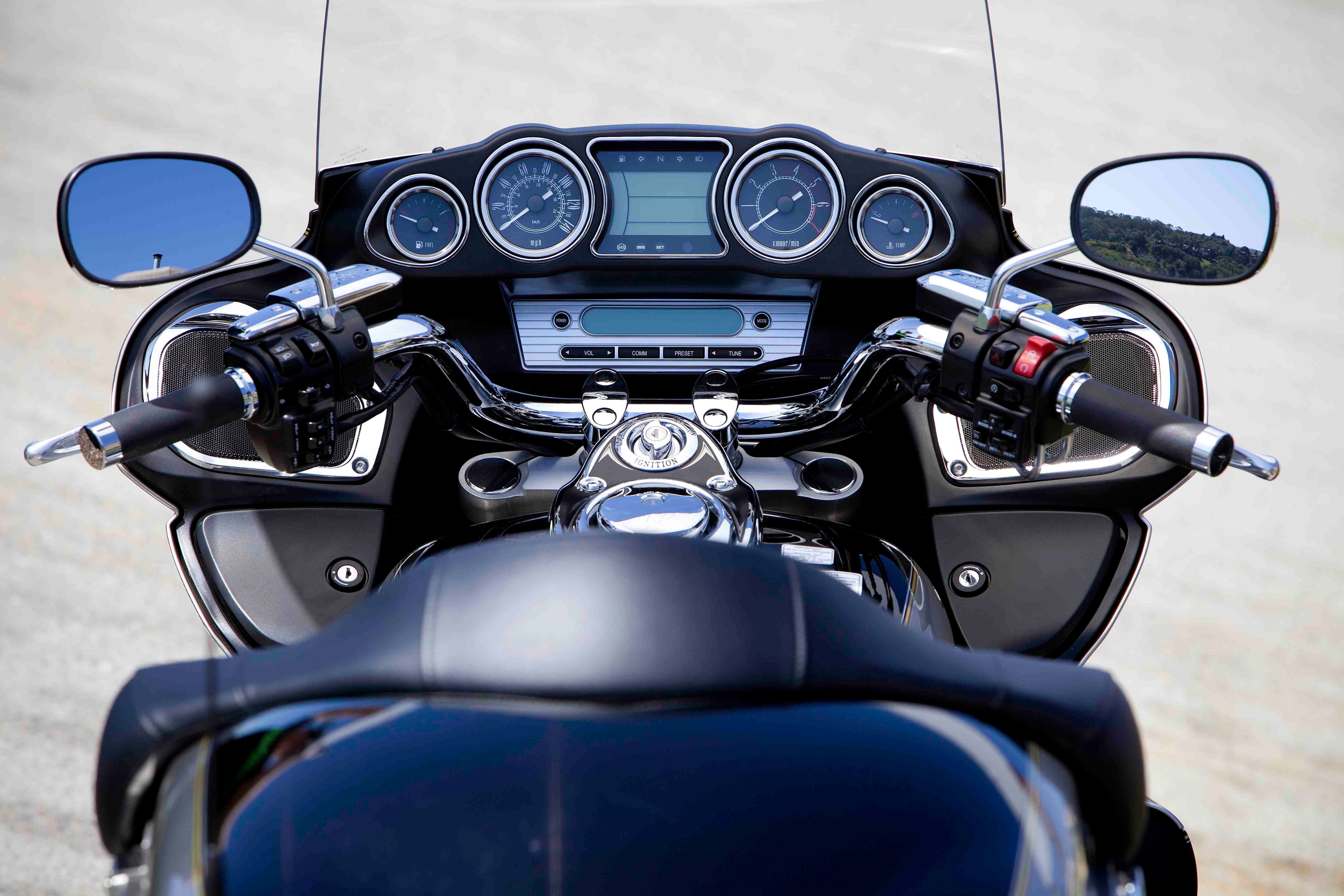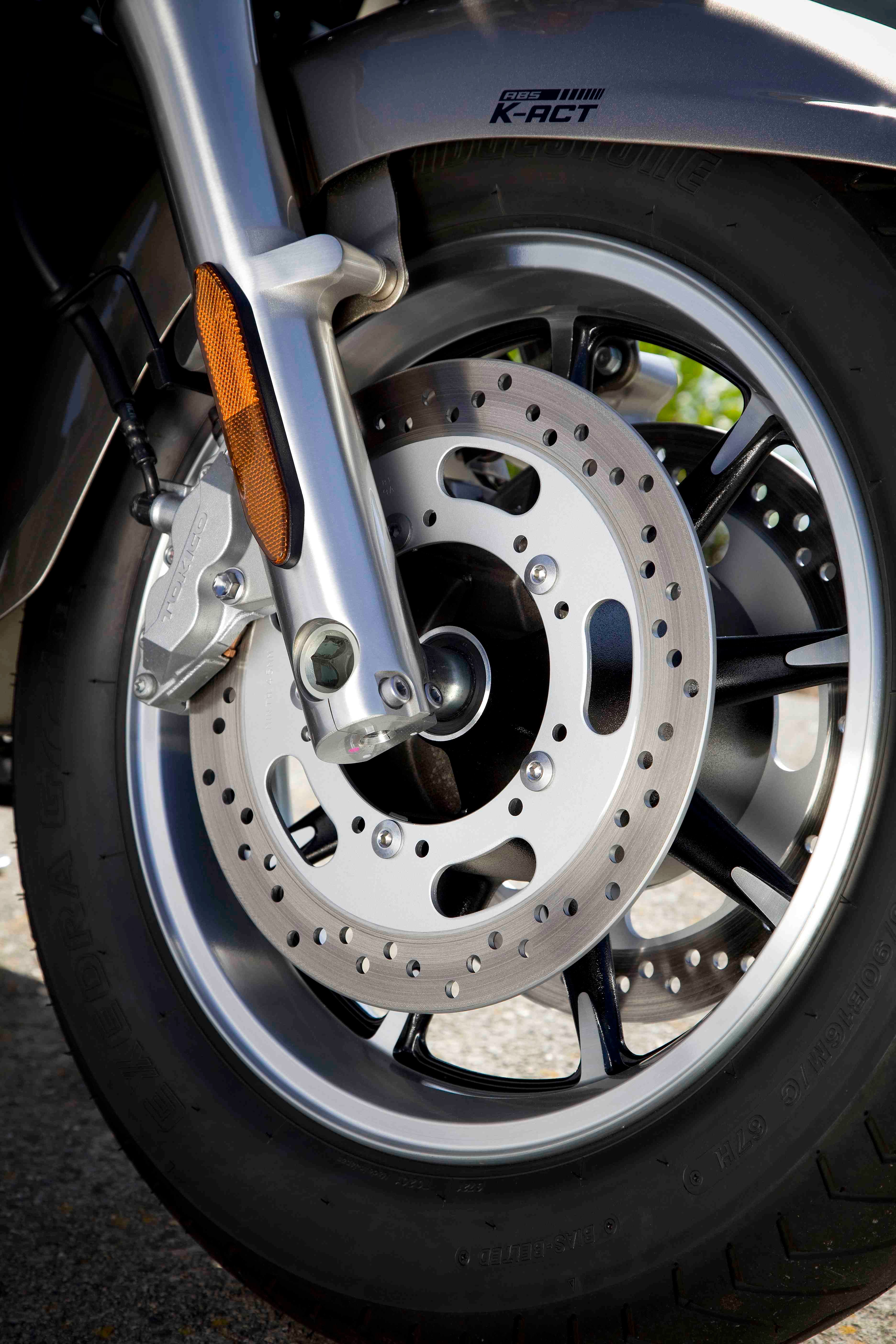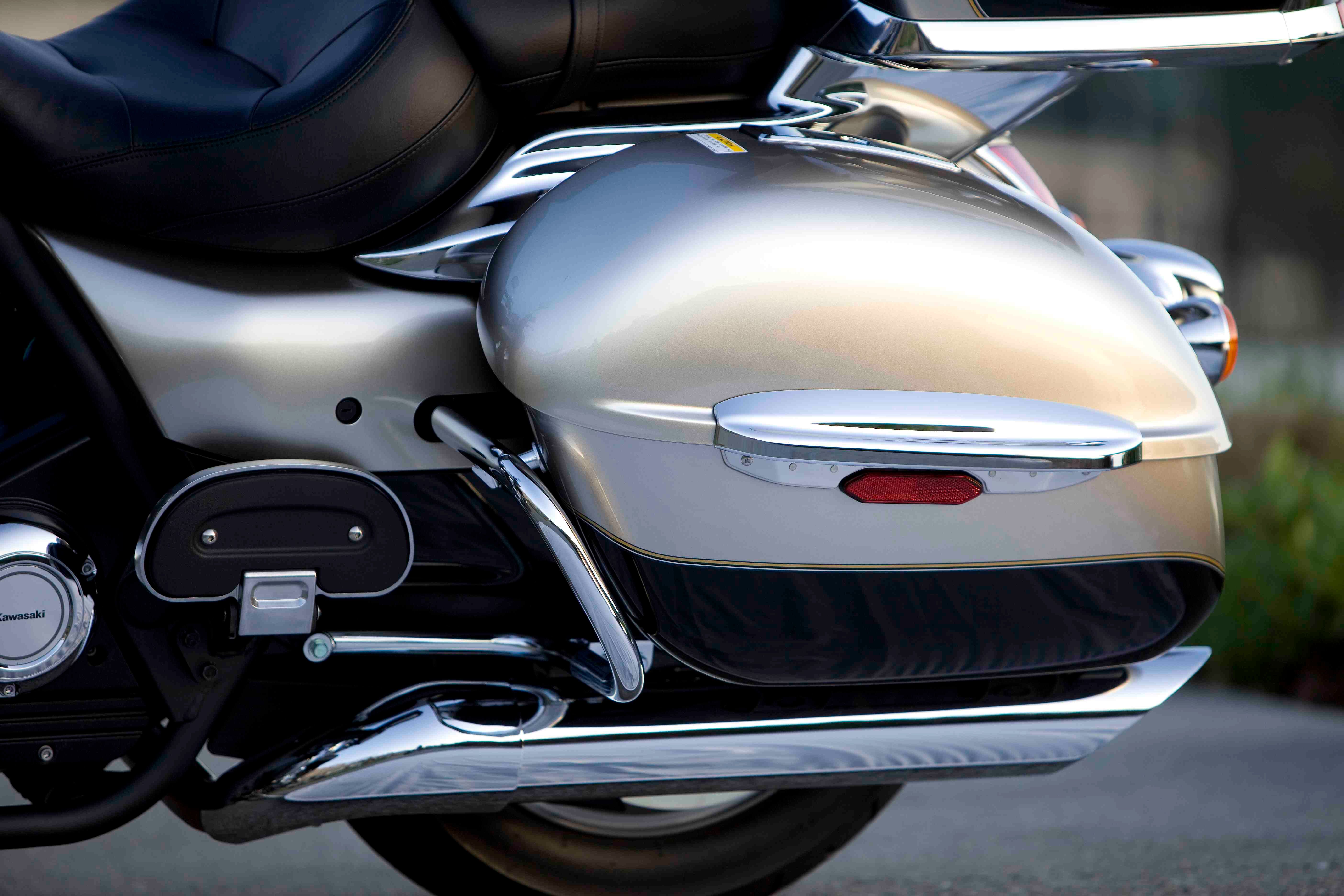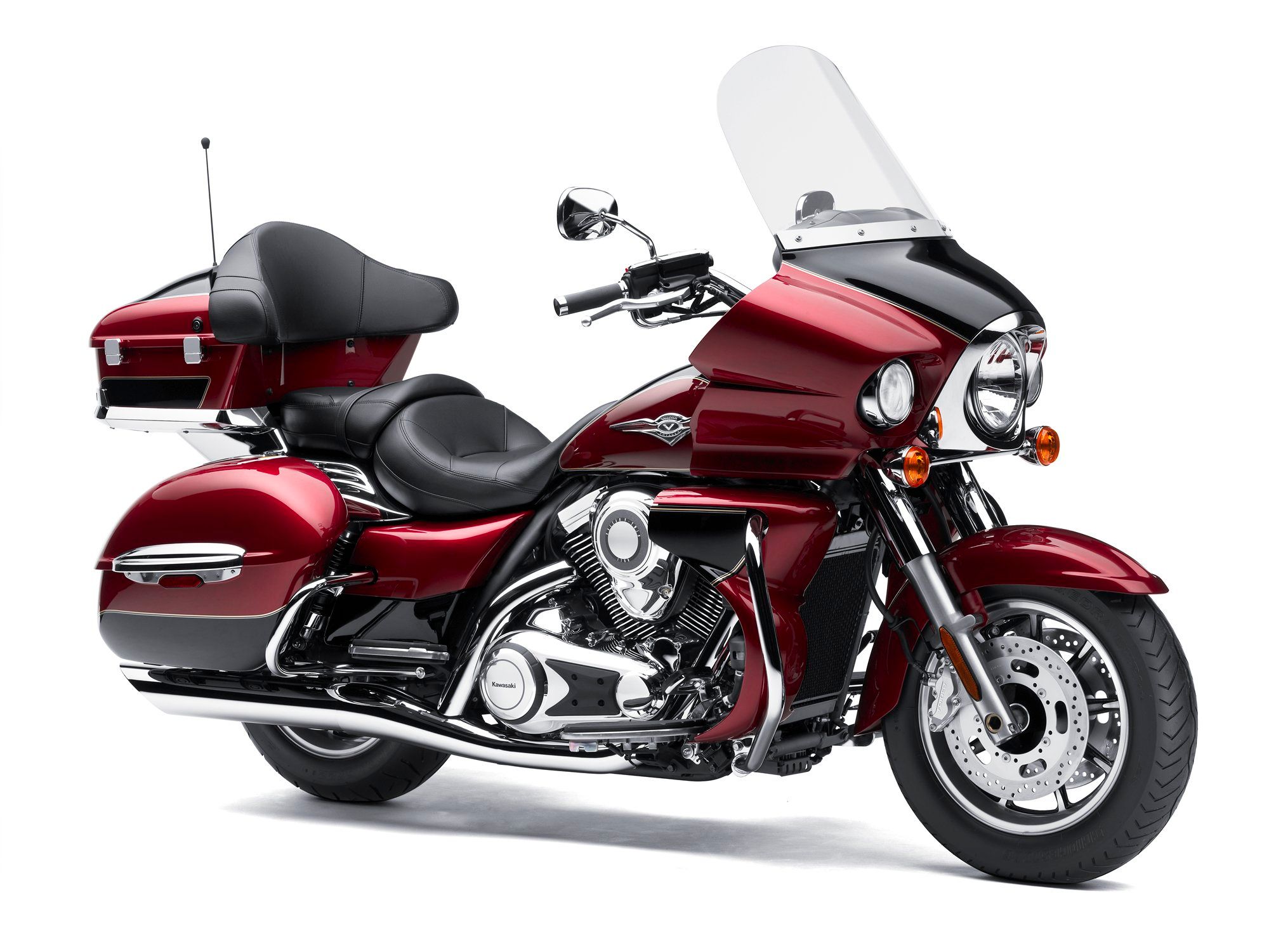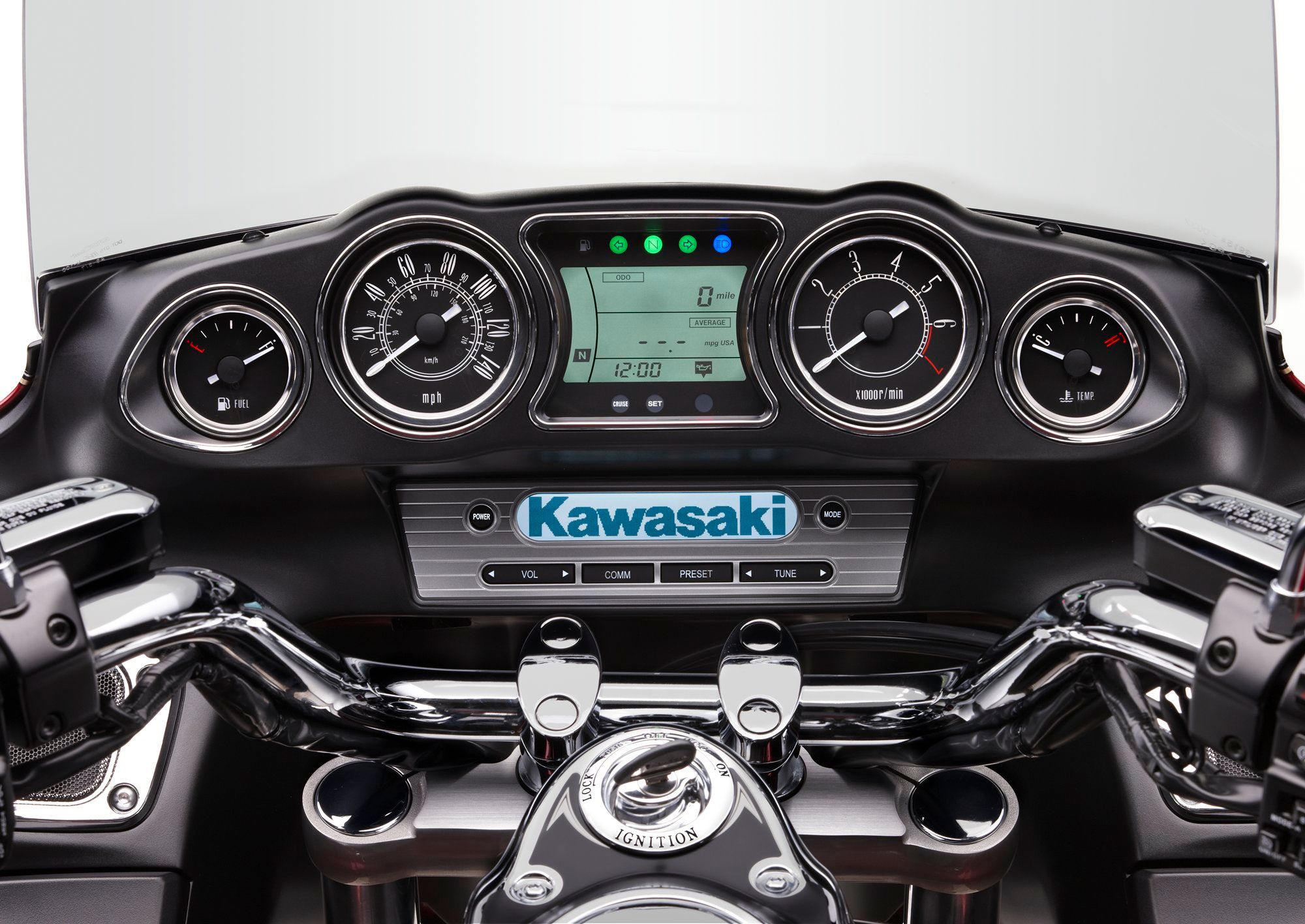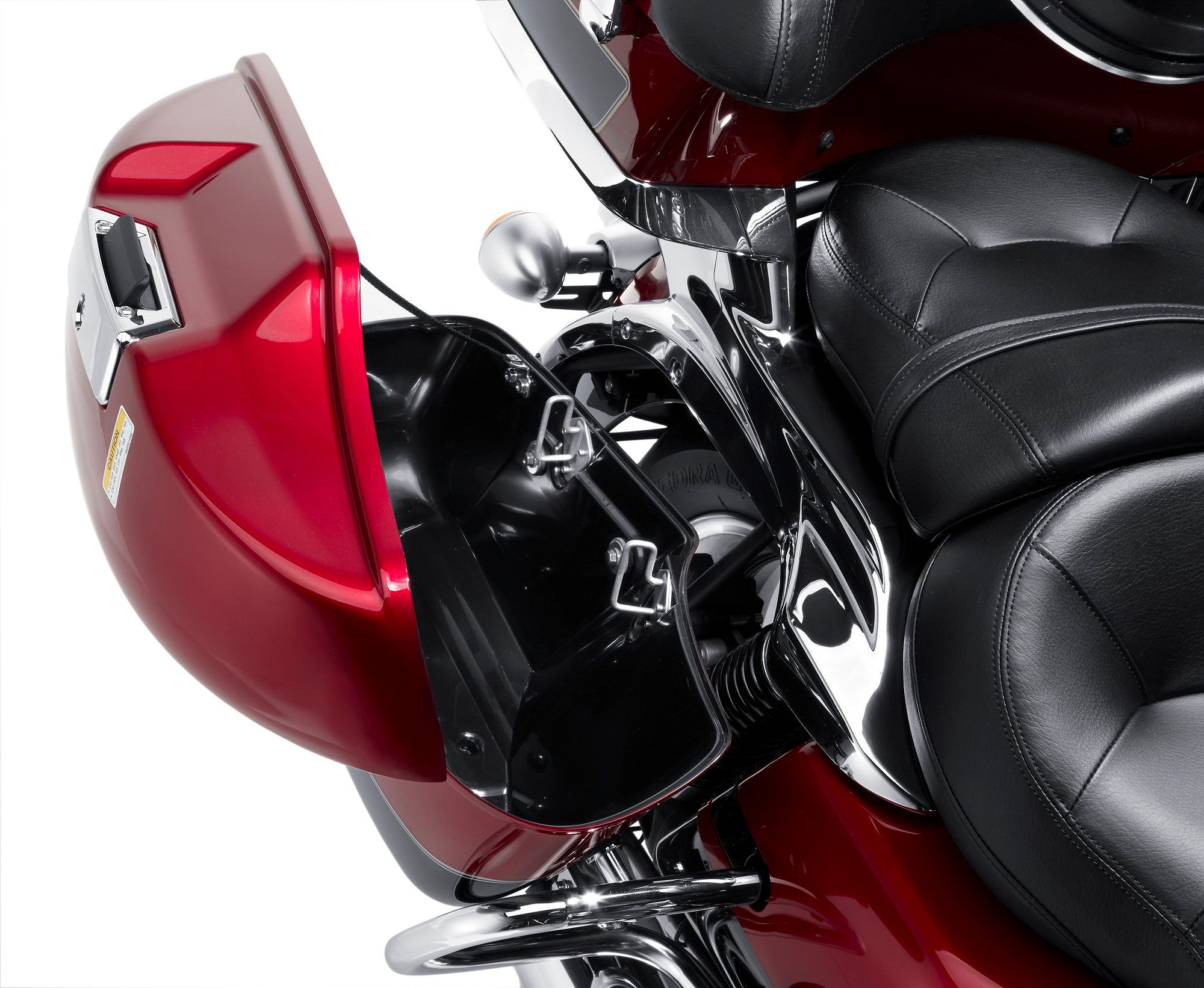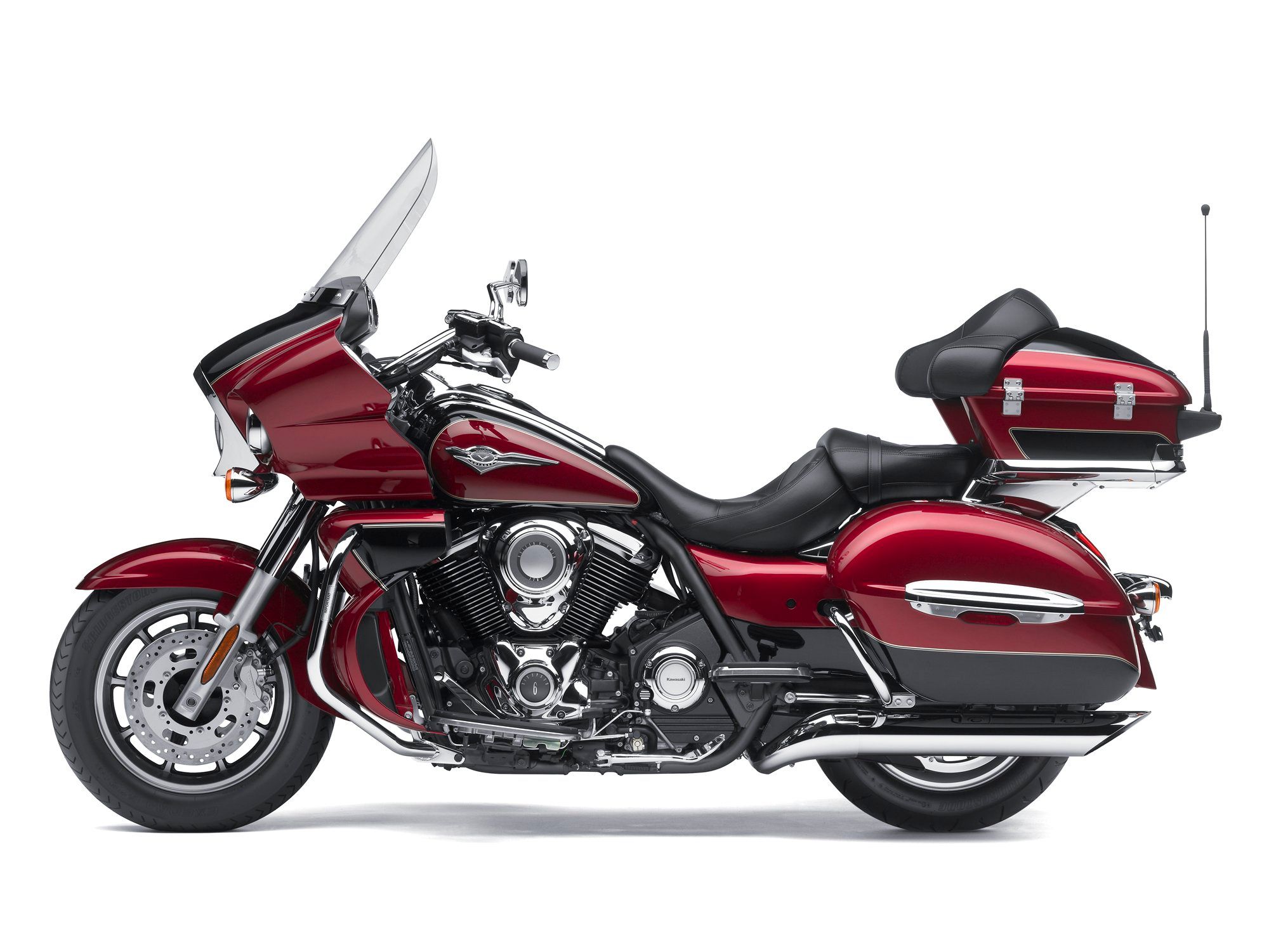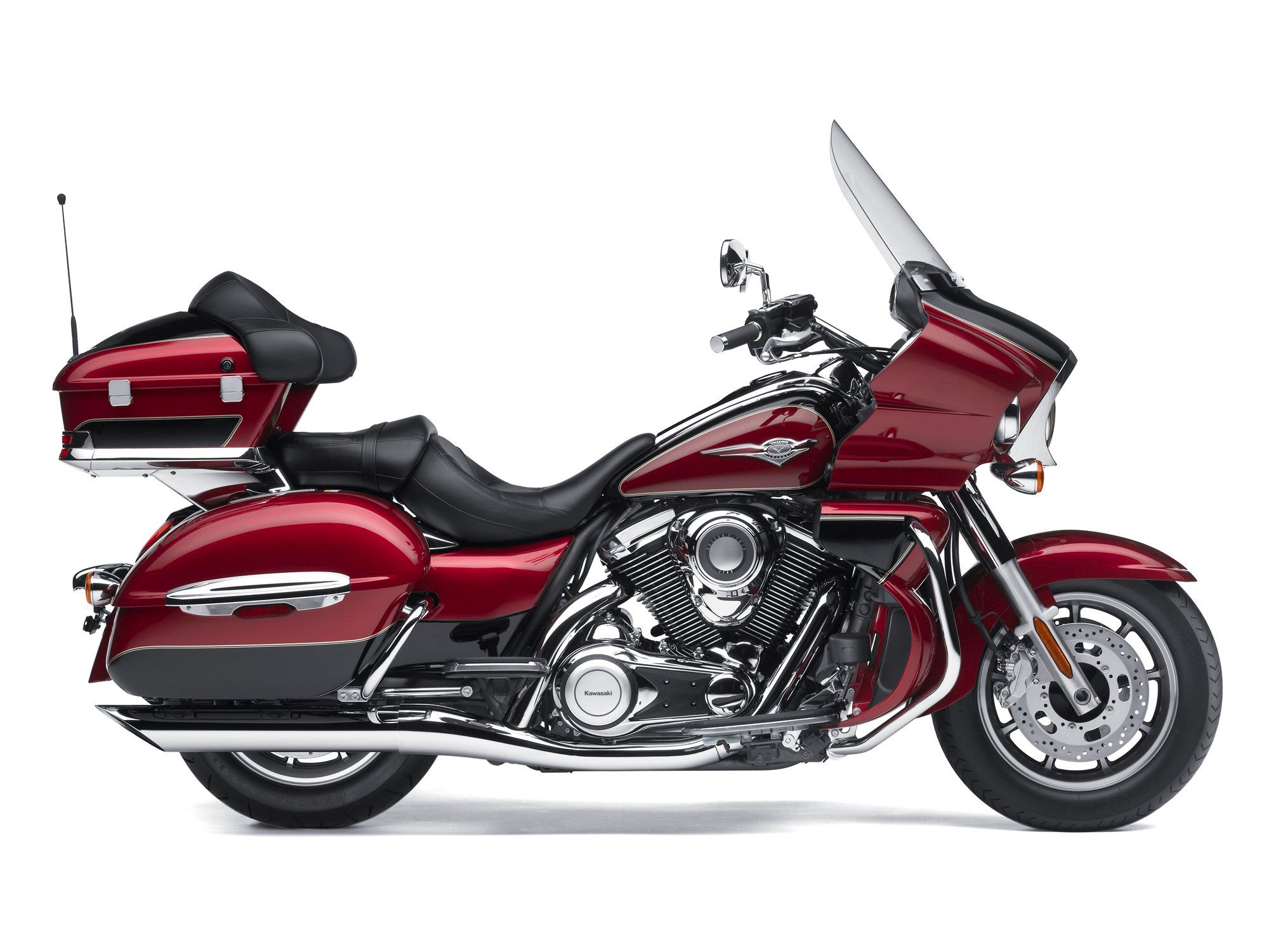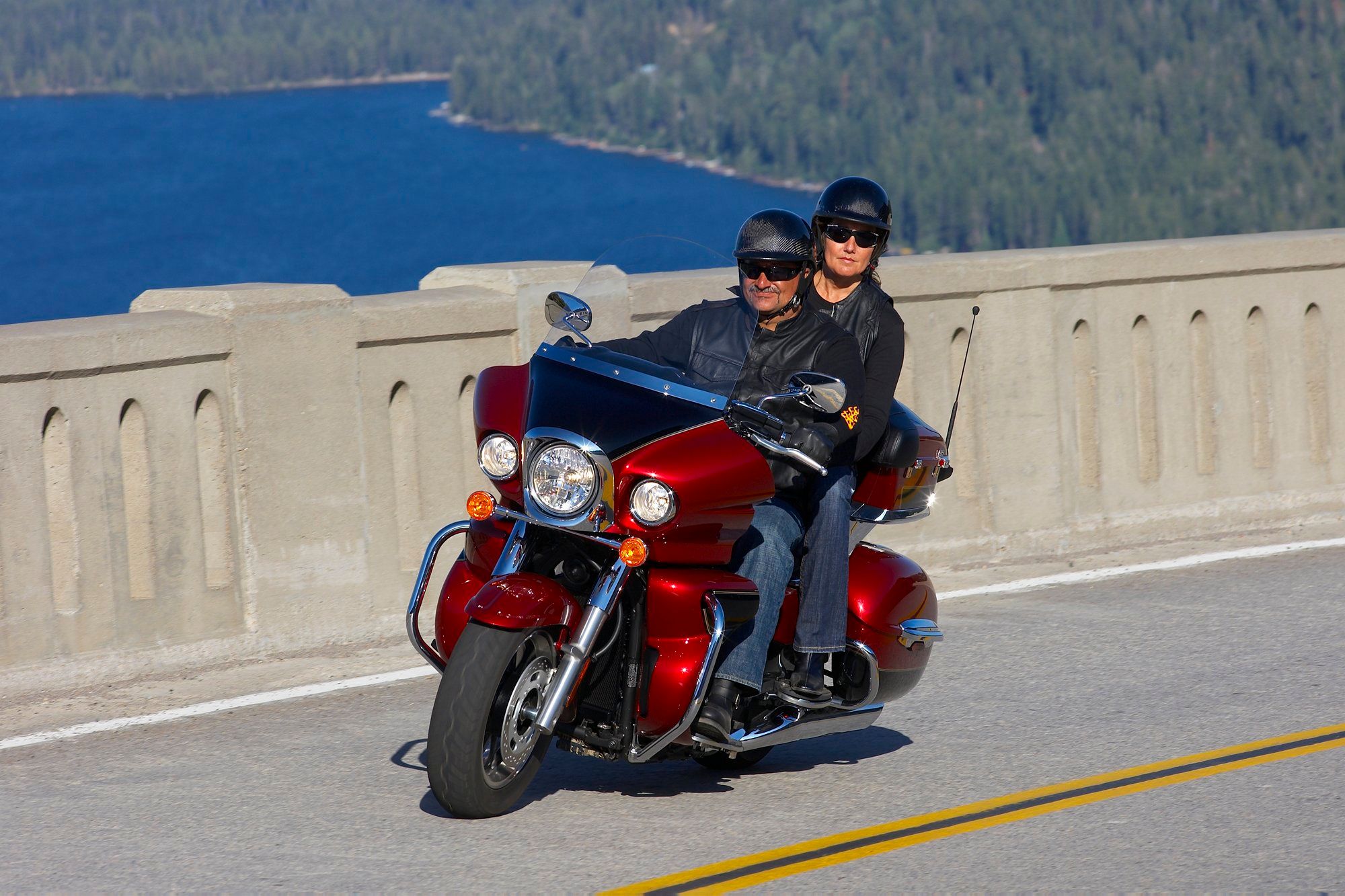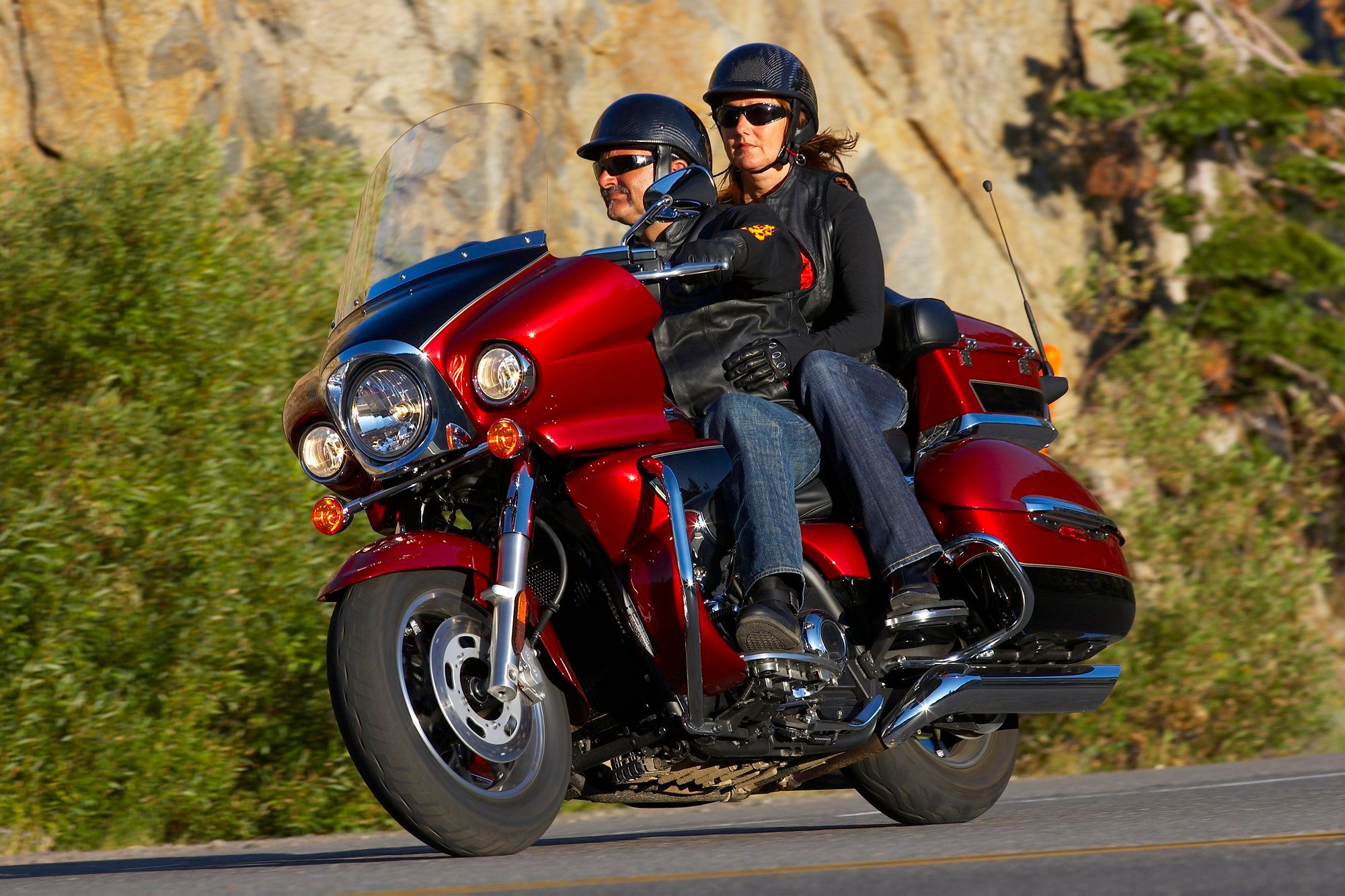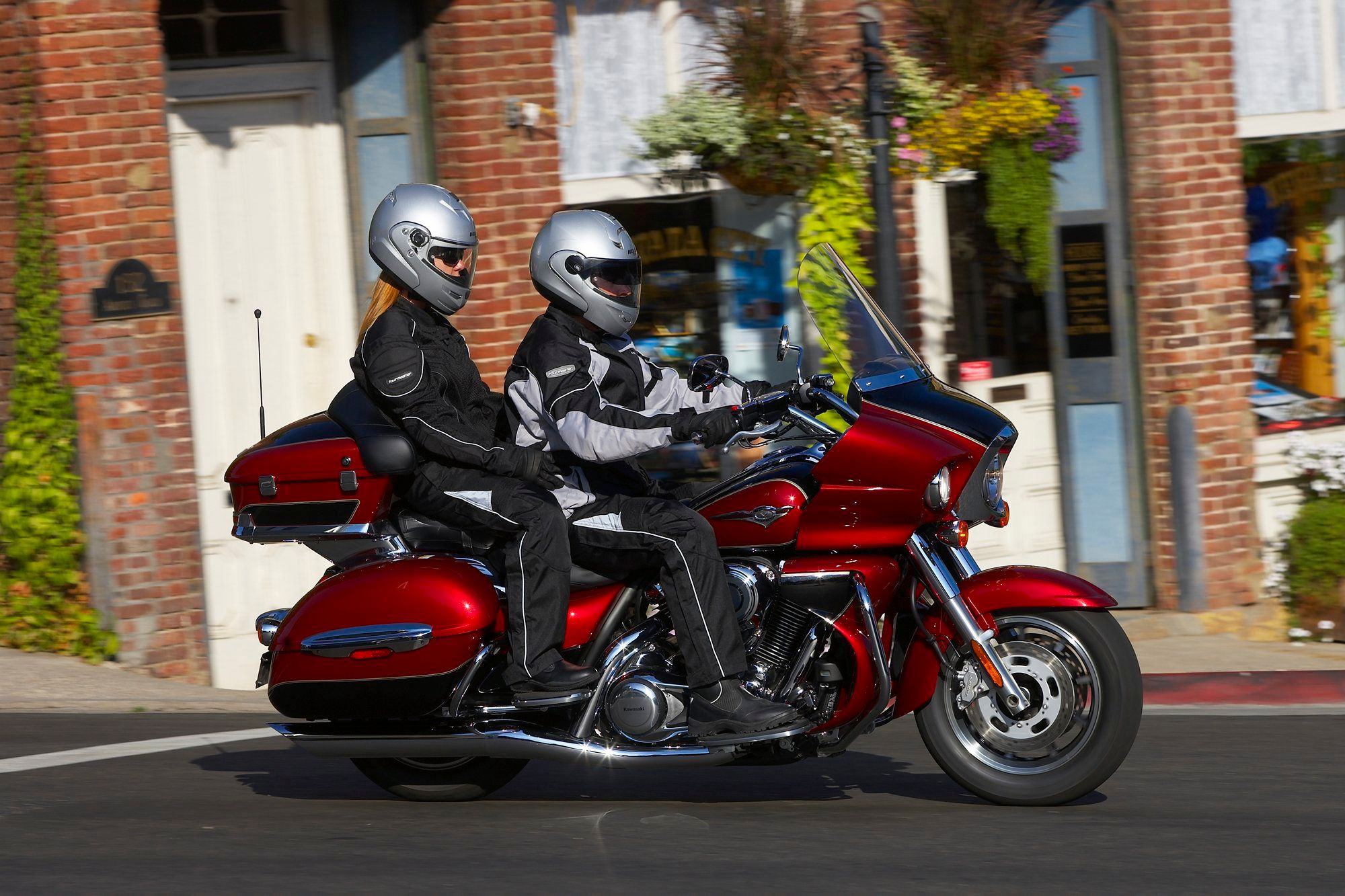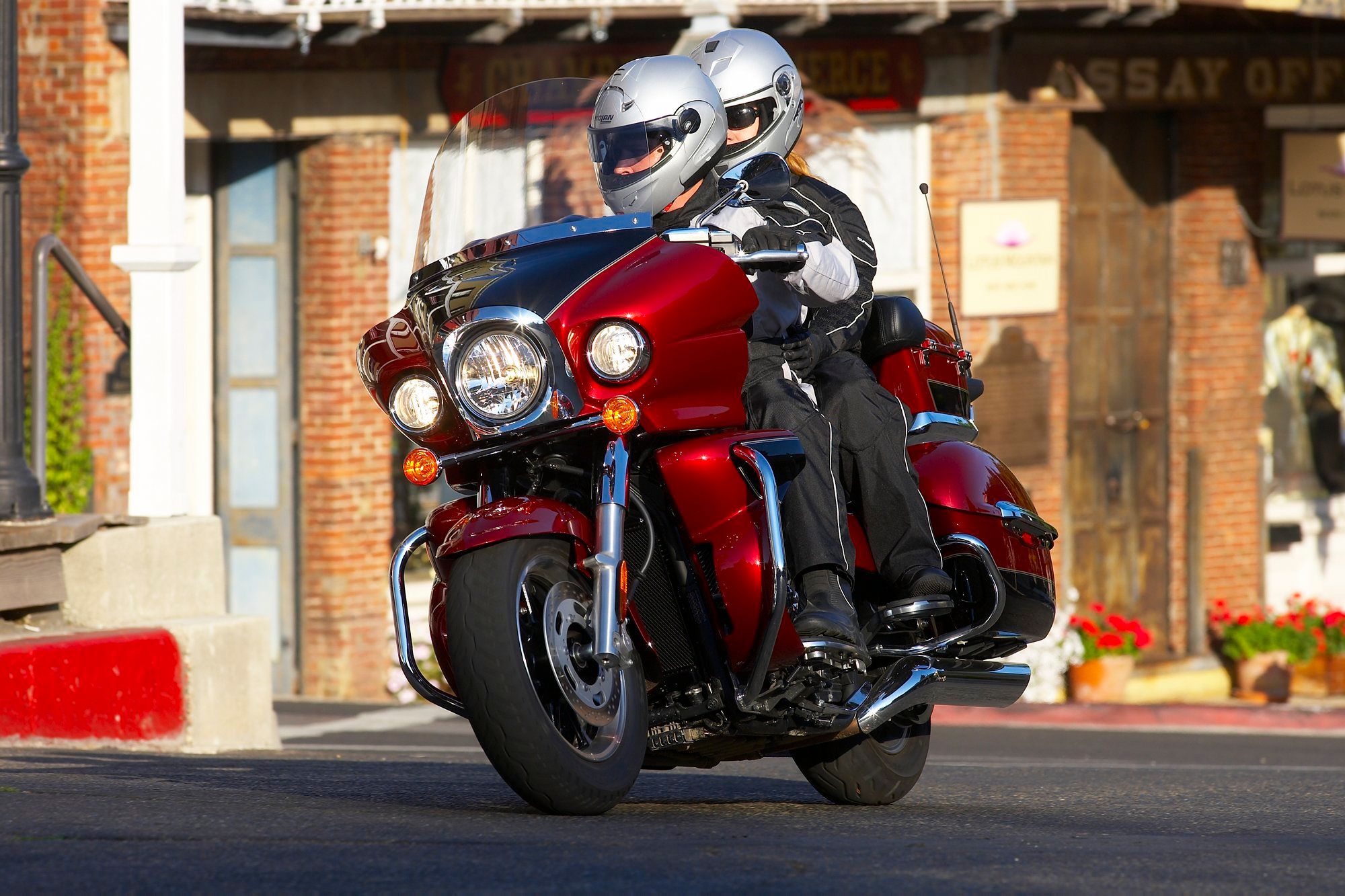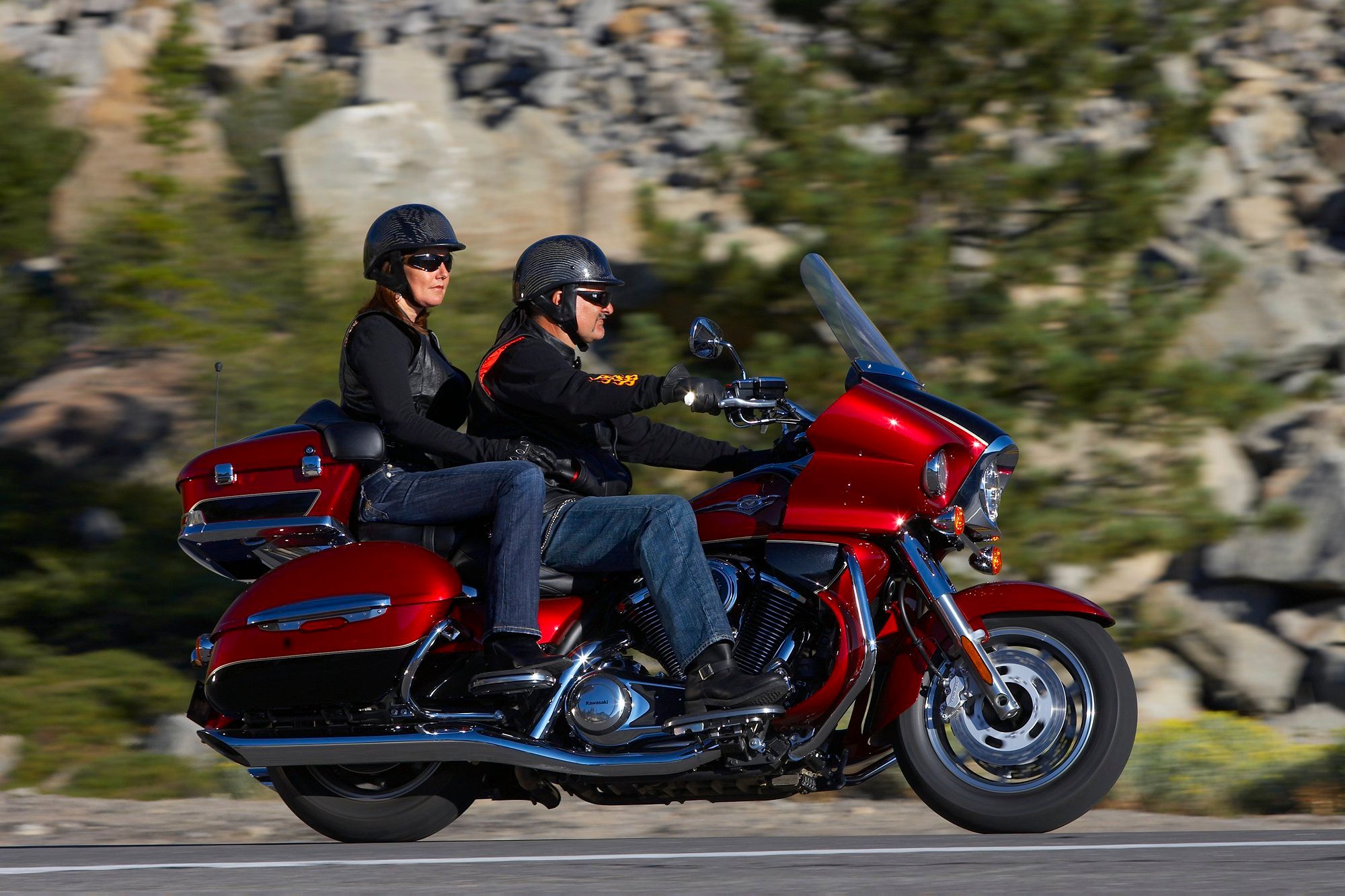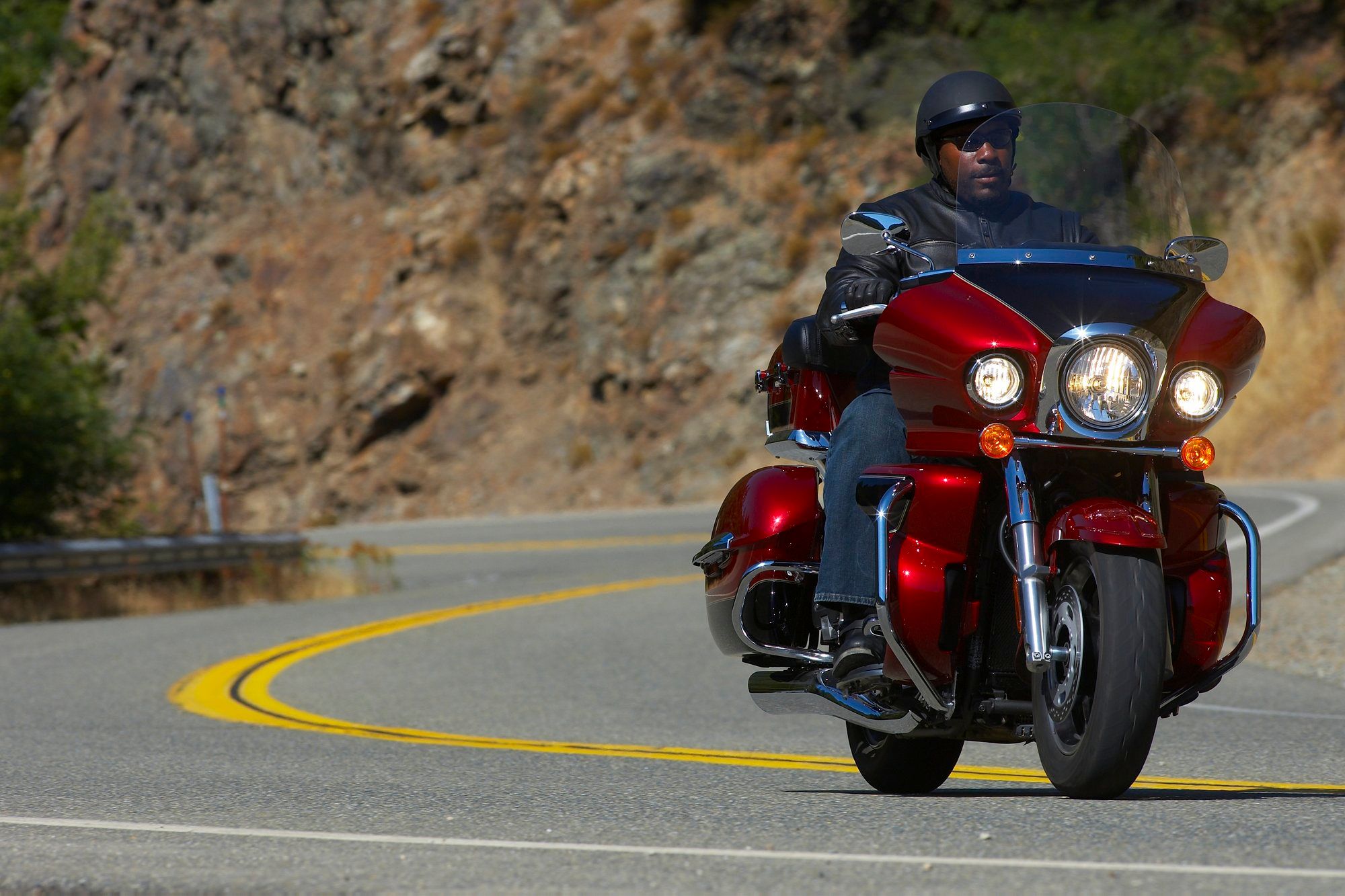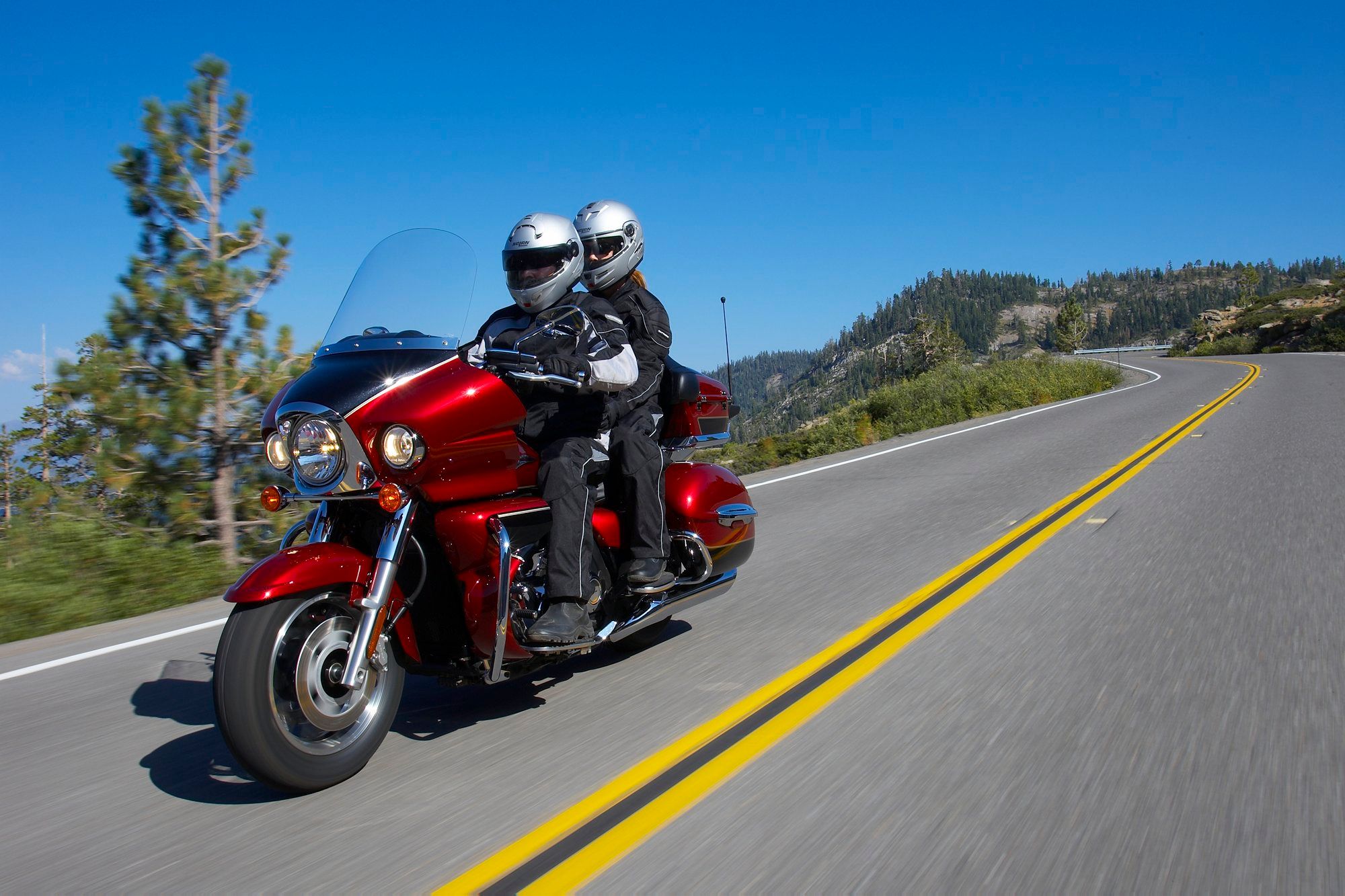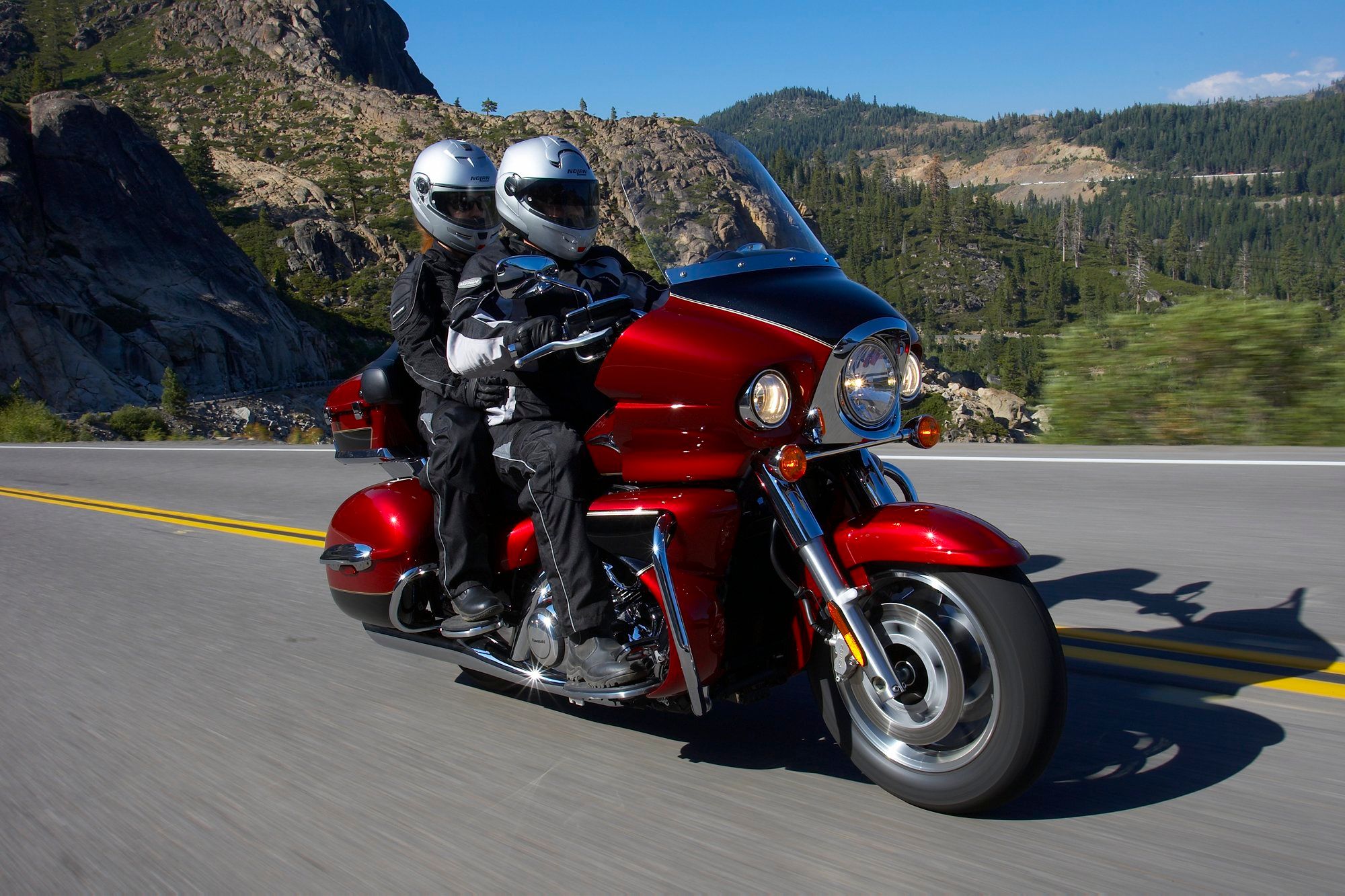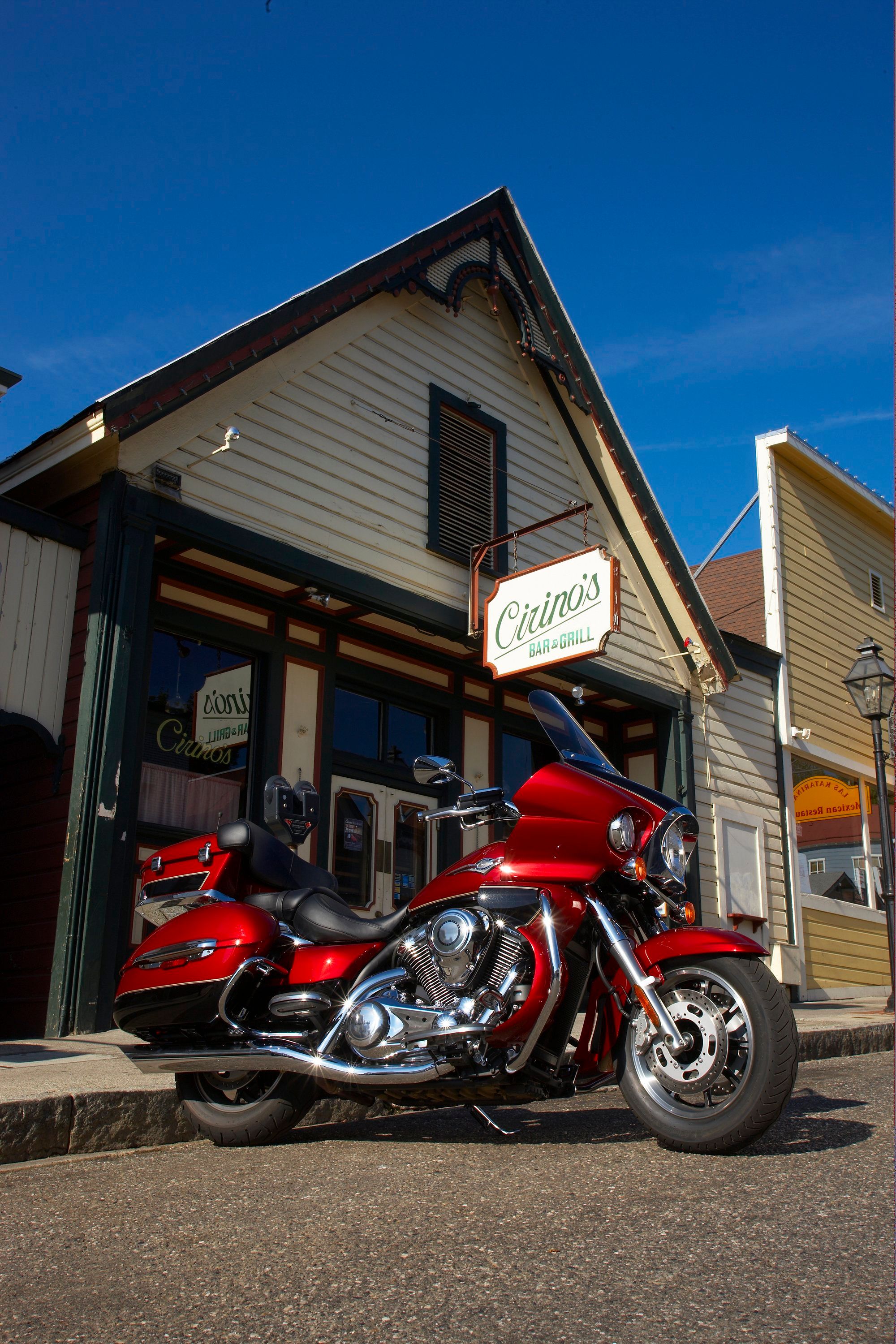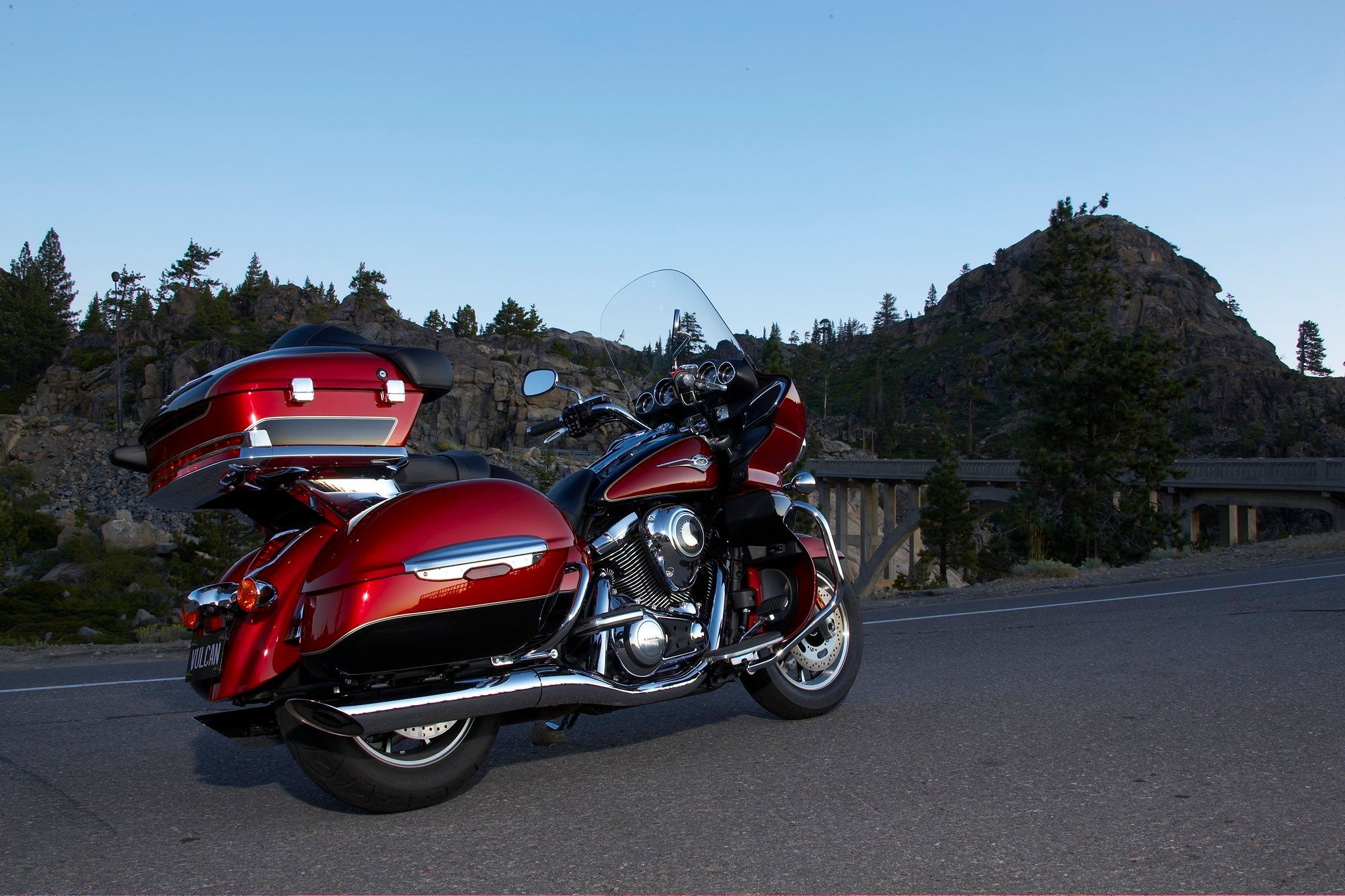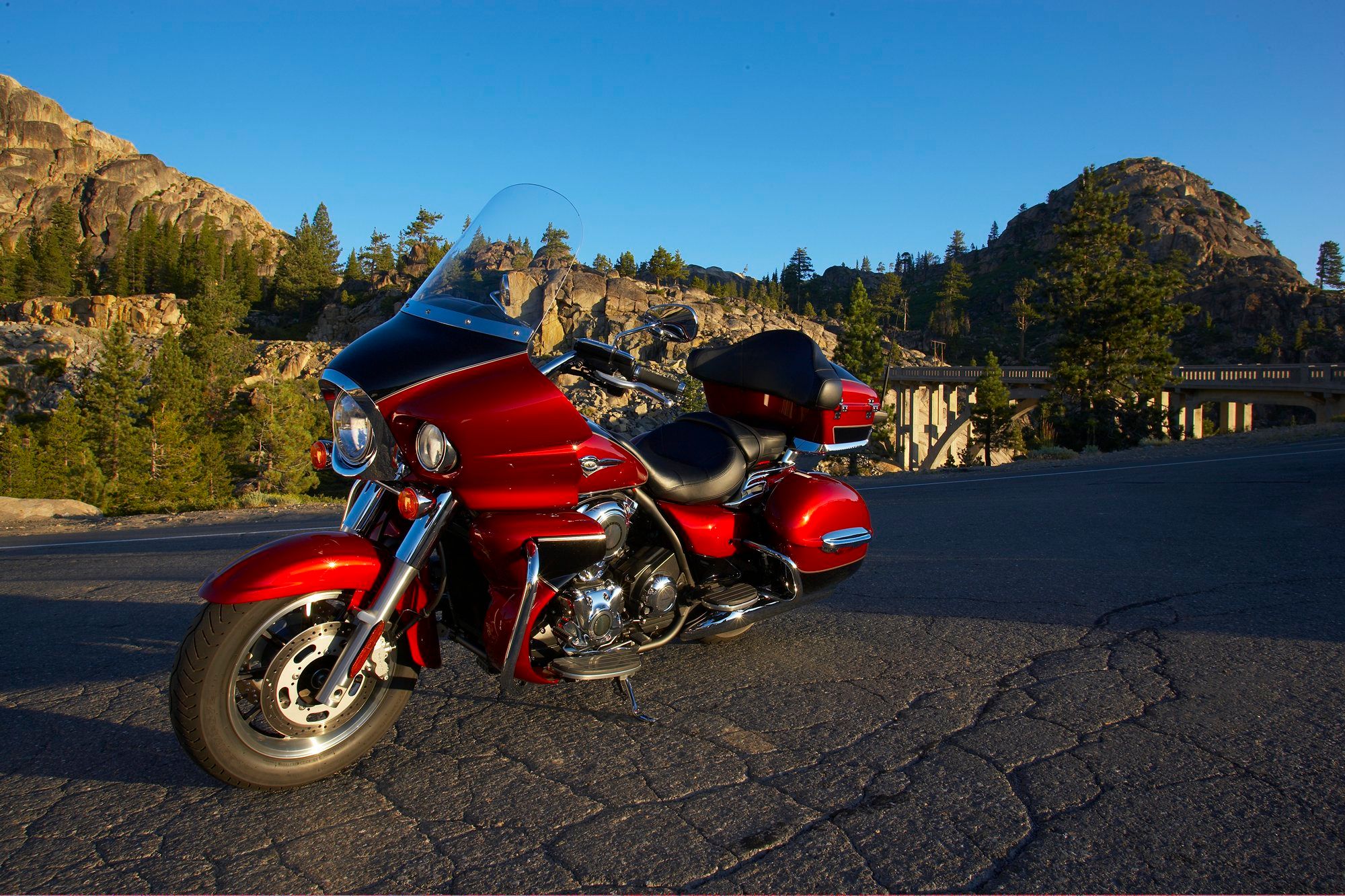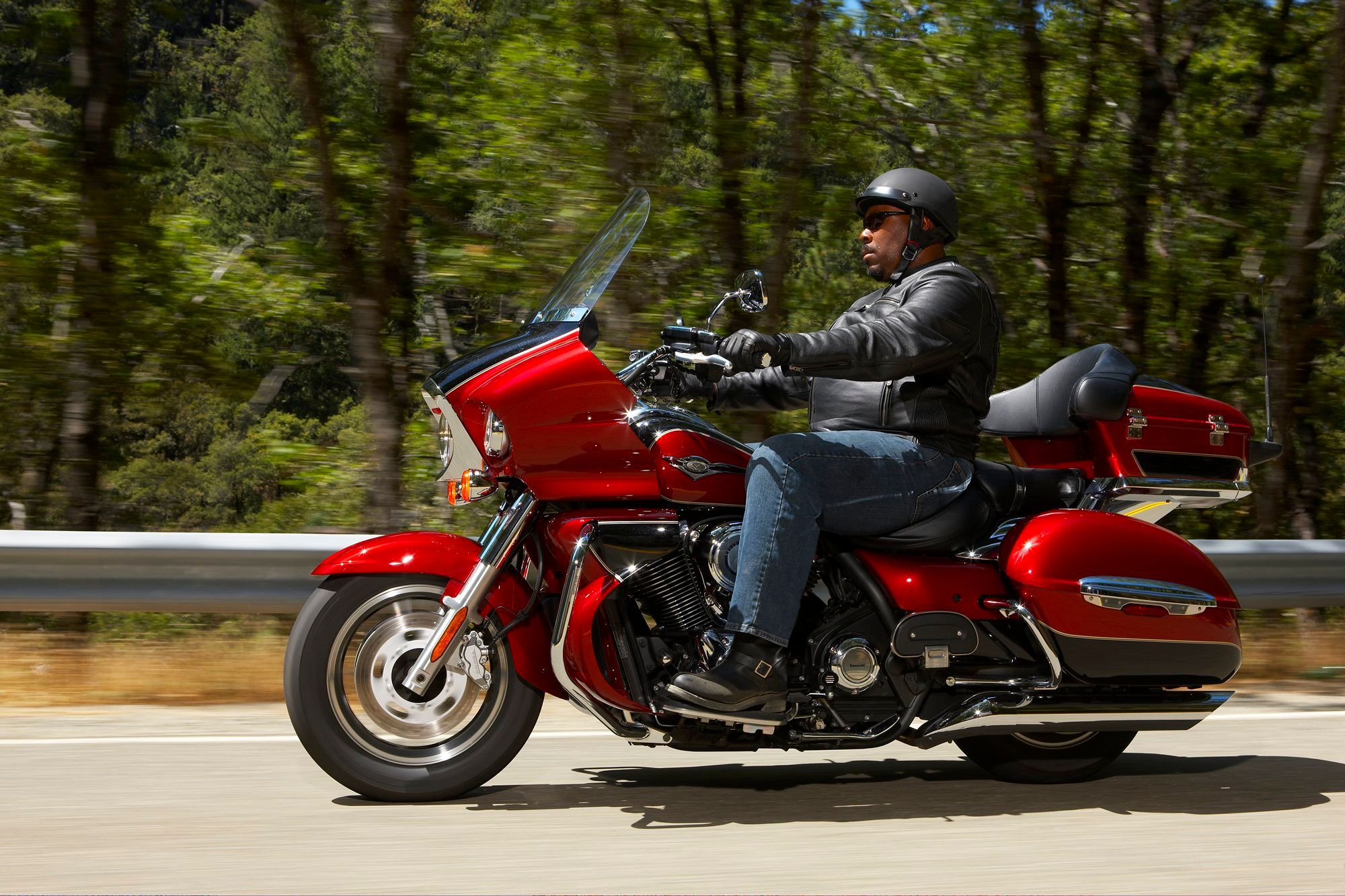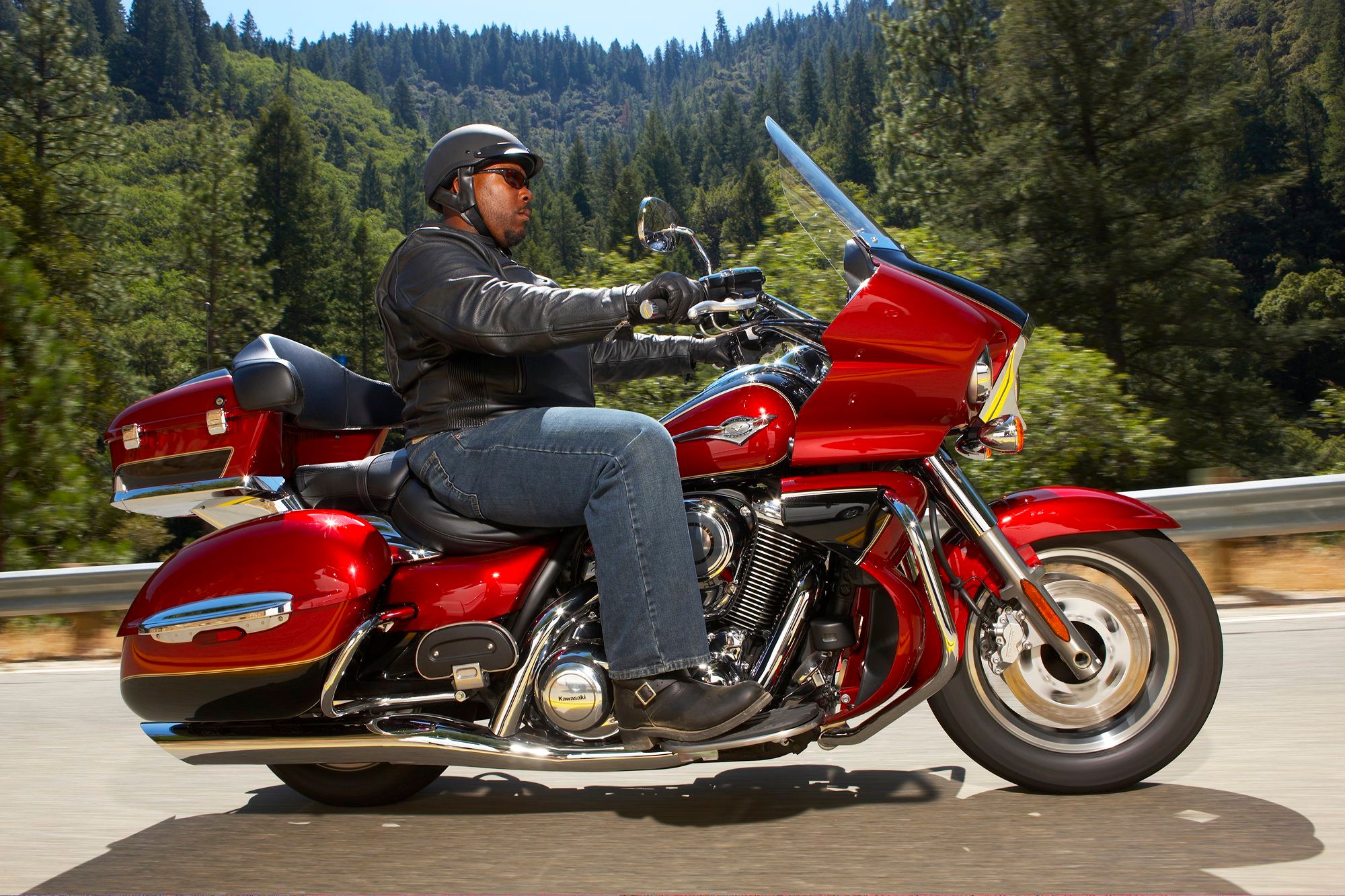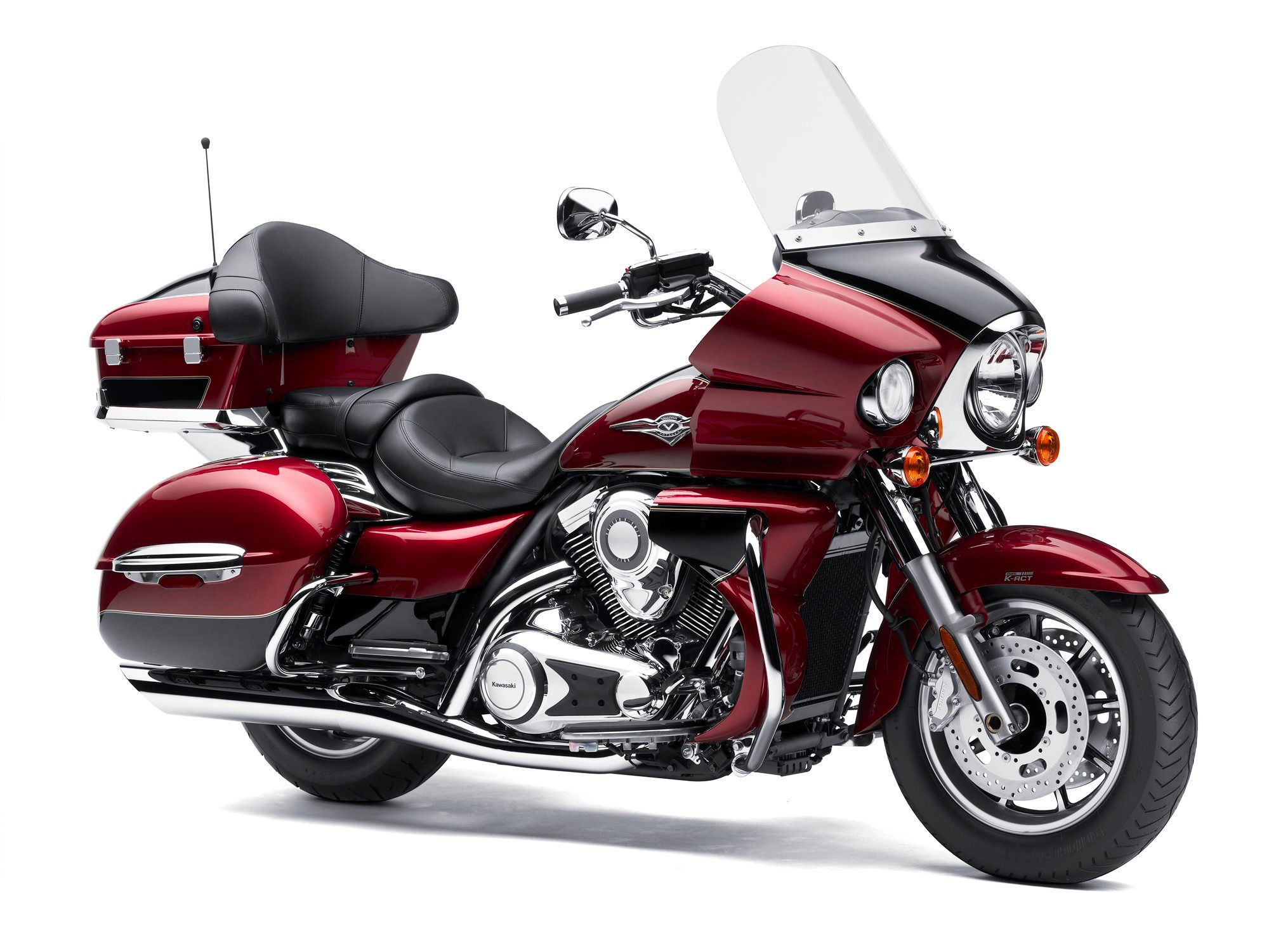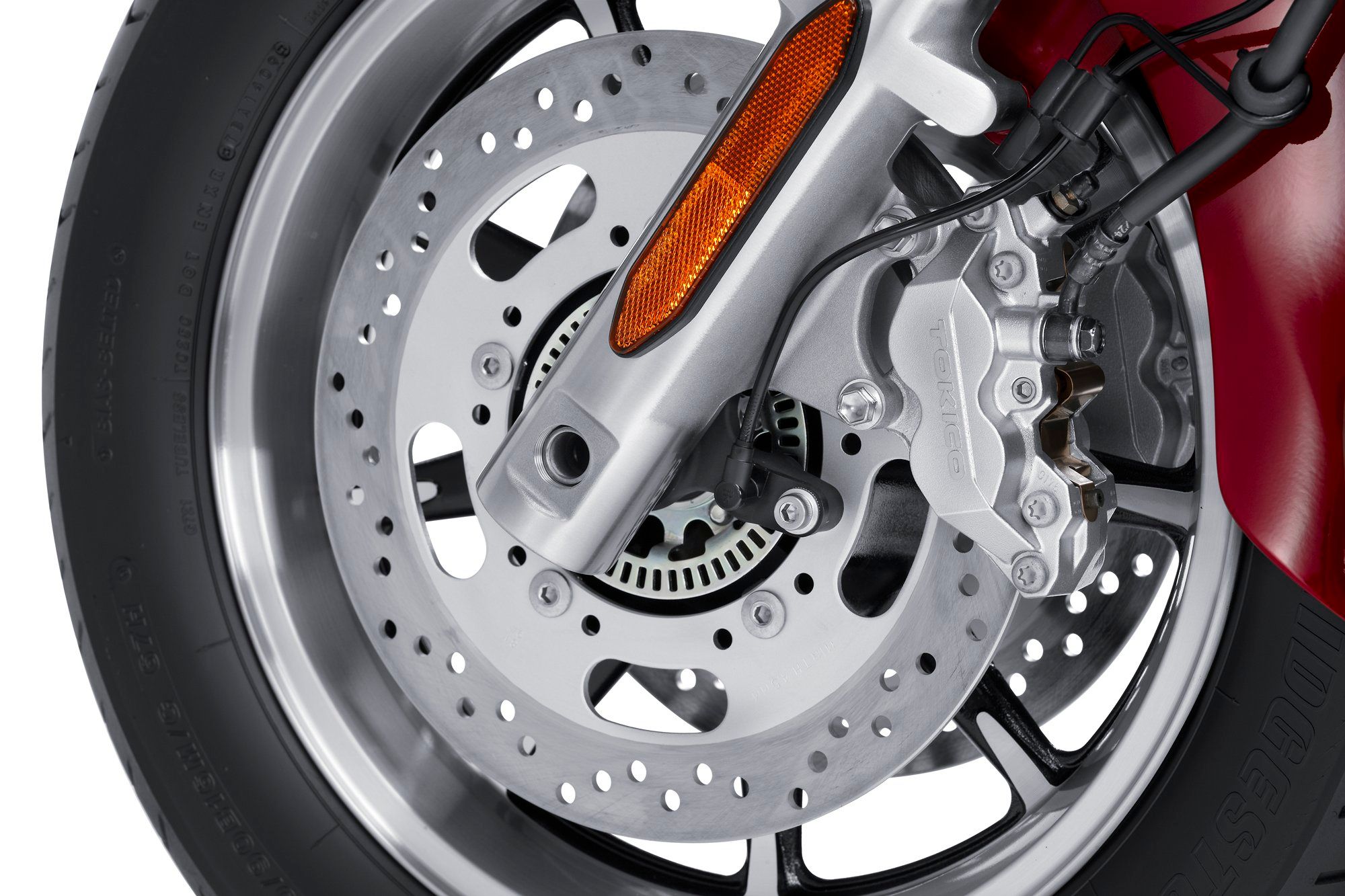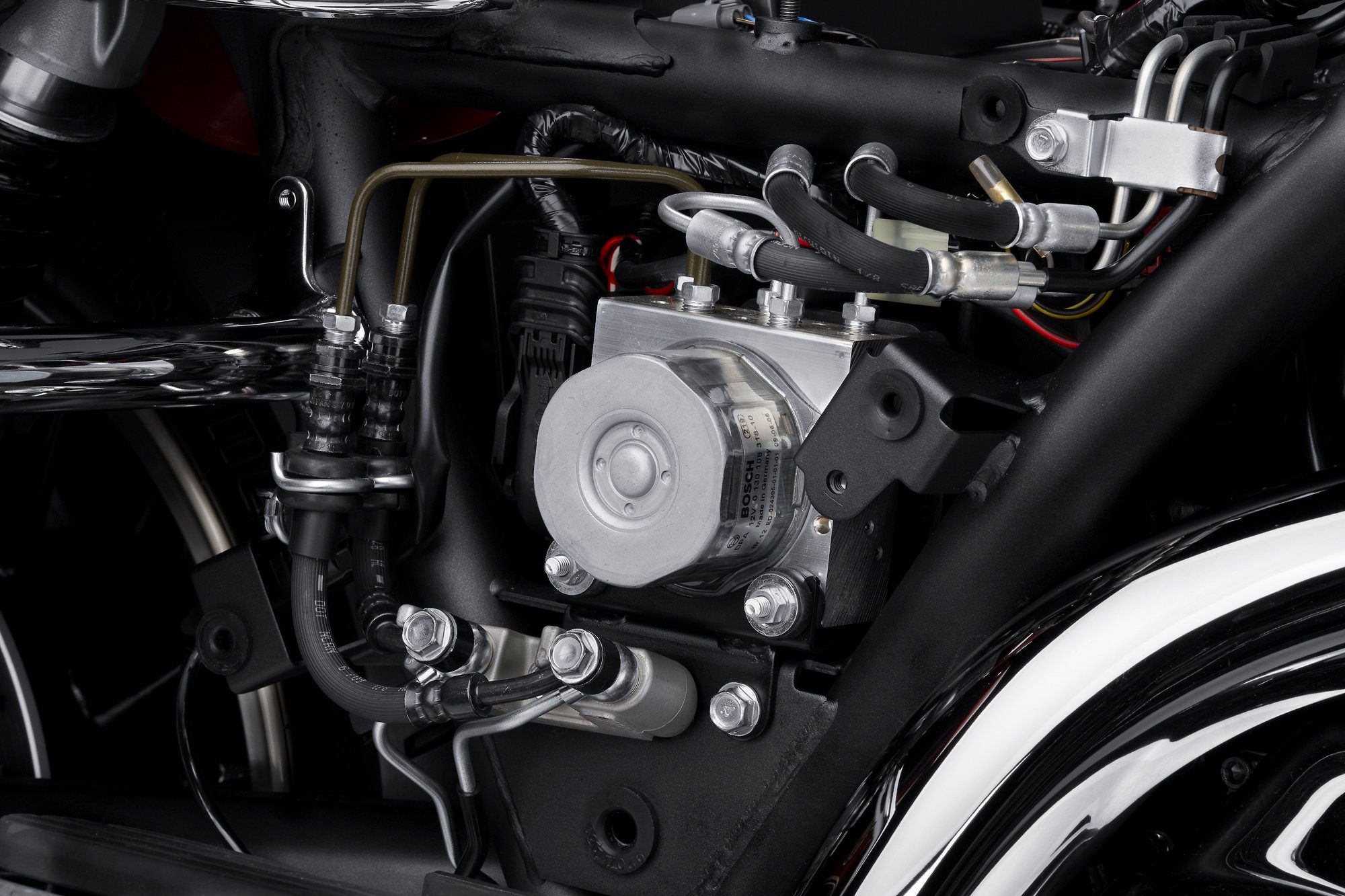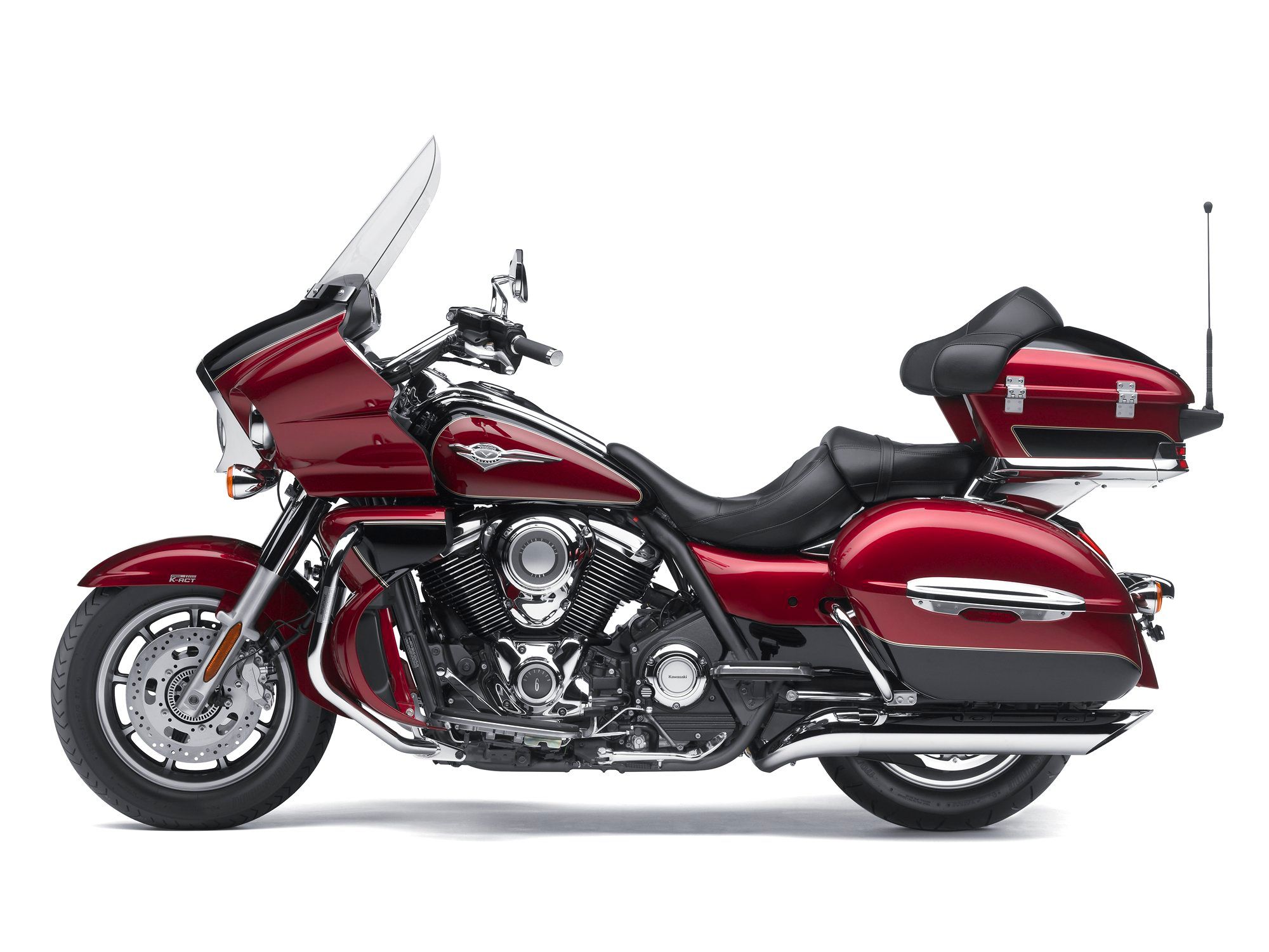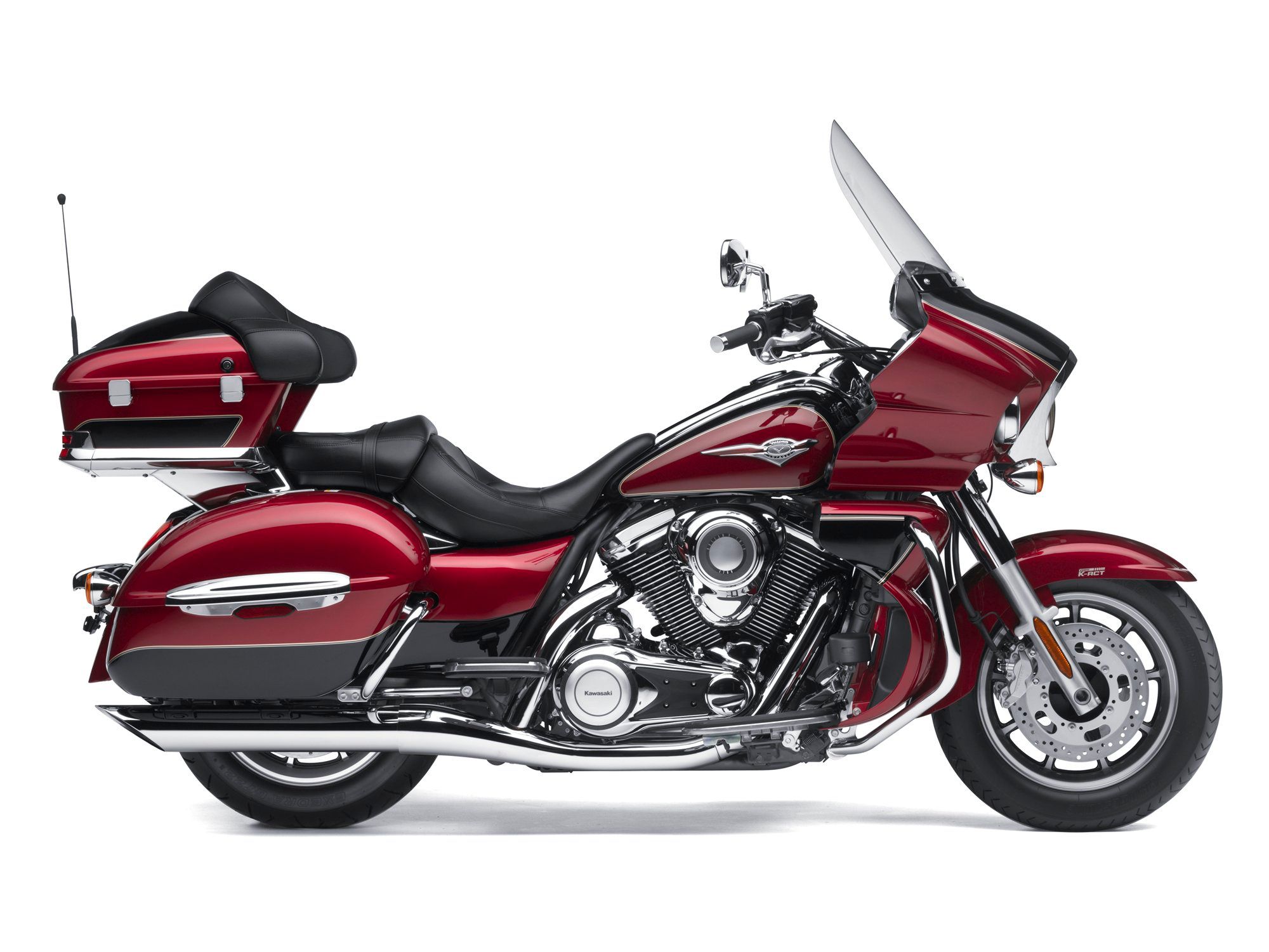After getting rid of the over passed Vulcan 1500 and coming up with an entire 1700cc lineup composed of classic, classic tourers and touring models offering riders the possibility to find the ideal model without going in another manufacturer’s dealership, we’re now talking about the amazing all-new Kawasaki Vulcan 1700 which concludes under the Classic, Classic LT, Nomad and Voyager, all 2010 model years.
2010 Kawasaki Vulcan 1700
- Make: Array
- Model: 2010 Kawasaki Vulcan 1700
- Engine/Motor: Four-stroke, liquid-cooled, SOHC, four valve per cylinder, 52˚ V-twin
- Torque: 108 lb-ft @ 2,250 rpm (2,750 rpm-Nomad and Voyager)
- Transmission: Six-speed with overdrive
- [do not use] Vehicle Model: Array
Introduction
The four different and yet very similar models can be classified in two categories: first, there are the two Classic models blending in timeless looks with modern technology and powered by the 1700cc, four-stroke, liquid-cooled, SOHC, four valve per cylinder, 52-degree V-twin engine delivering peak torque (108 lb-ft) at just 2,250 rpm. These first two models feature a 6.7 inches trail. And secondly, the Nomad and Voyager models, which are powered by the same engine delivering maximum torque 500 rpms higher on the rev range, while featuring the same 30-degree rake and an appropriate, but different 7 inches trail. Apart from this, dimensions, weight and looks make all the difference between the four models featuring the same powerplant.
All these bikes are fed through a digital fuel injection system with dual 42mm throttle bodies. This, together with exhaust tuning, makes sure the engine delivers loads of torque just above idle, so this is where Kawasaki worked at in order to achieve the torque curve difference that splits the Vulcan 1700 lineup in two. An Electronic Throttle Valve System ensures great engine response and constant acceleration without having a dramatic influence over fuel consumption. The system has an Accelerator Position Sensor and a Throttle Position Sensor which work together for the best throttle response and in the worst case scenario (a sensor failure) will send a signal to the ECU so that riders would find out through the On Board Diagnostics system what’s wrong with their bike. Let’s just hope that you’ll never experience that.
Still, the engine isn’t that much of a blast among cruisers mostly because it features a single cam per cylinder, so Kawi mates it to the six-speed gearbox with overdrive. This way, riders are offered the possibility of reaching a higher top speed without the increased fuel consumption. Relaxed, economic and quiet cruising is what these bikes are all about so apart from the efficient tranny, all models get belt final drive which also requires no maintenance, just regular replacement.
Comfort isn’t to be ignored either and on the Vulcan 1700 series there are no reasons to complain as these come with Dual Adjustable Rear Air-Shocks that adjust spring preload with air and offer 4-way rebound damping adjustments. Up front, the Classic, Classic LT and Nomad models are offered the proper steering feedback through a 43mm telescopic fork, while the Voyager model comes with a 45mm one meeting the same demands as on its lighter siblings.
All models are fitted with all around 300mm disc brakes with twin-piston calipers on the Classic, Classic LT and Nomad, while the much heavier Voyager has four-piston calipers and only two at the rear. Also, this last model is the most sophisticated when it comes to braking performance as Kawasaki uses Advanced Coactive-Braking Technology with optional ABS to put it to a complete and secure stop.
The lowest seat height is that of the Classic and its corresponsive LT model (only 28.3 inches from the ground), but this also implies a ground clearance of only 5.1 inches, so expect a lot of scraping the tarmac with the footrests when approaching corners a little bit too fast and being needed to lean more than the usual. With a seat height of 28.7 inches and a ground clearance of 5.5 inches of the Nomad and 5.3 inches of the Voyager, expect for the same scraping action in this case from much heavier piece of motorcycles, something that would make it even harder on the riders to keep the things under control in tricky situations. Kawi’s only possible explication is that the low seat heights were definite musts and the low ground clearance and the implicit low center of gravity allows for light handling.
Kawasaki introduced the all-new models to offer both diversity and alternatives to some of the most notorious classic and touring motorcycles out there. Now, all models in the Vulcan 1700 lineup come with improved exhaust pipe heat shielding and improved radiator ducting, meaning that riders won’t start boiling when traversing crowded cities. Also, a coolant pipe has been shortened for easier oil-screen maintenance and all four models get cool new color combinations.
Competition
The Honda VTX1800N and VTX1800T as well as the Suzuki Boulevard C109R and Boulevard C109RT stand as Japanese alternatives to the Kawasaki Vulcan 1700 Classic and Classic LT. So are the Star Roadliner and Star Stratoliner models, but this maker also offers the Royal Star Venture against the Kawasaki Vulcan 1700 Voyager model. The Star is powered by a liquid-cooled 1298cc V-four engine, so competitors come in all shapes and sizes.
In matter of cruiser and tourers, Harley-Davidson is THE leader, but this time we’ll stop at their Ultra Classic Electra Glide model as this is the most appropriate American solution to the same riding demands that the Voyager satisfies. The Electra Glide is powered by Harley’s air-cooled, 96-cubic-inch V-twin fuel-injected motor offering a unique rush thanks to the 92.6 ft-lbs of torque that it develops at 3,500 rpm. Wet weight is 889 lbs which is very close to Kawi’s 886 lbs wet weight for the Standard Voyager and 895 lbs wet weight for the ABS-equipped Voyager model. This Harley-Davidson starts at $20,999, so price is most likely the main reason why people will head to Kawasaki dealerships to check out the new massive tourer.
-----
Exterior
Style is important as well and Kawasaki approaches a different one for each of the Vulcan 1700 models.
To begin with, the 2010 Vulcan 1700 Classic is the simplest of them all. With timeless cruiser lines characterizing it from the start and to the rear, it’s no doubt that Kawasaki did use the Vulcan 1500 heritage, but in a rather refined manner. Chrome is present in abundance, from the tank mounted instruments and to the slash-cut exhaust pipes. The cast wheels feature nine spokes and the 1700cc V-twin motor shines brightly in between them. Available in Metallic Diablo Black/Candy Surf Blue, this thing is ready to hit the Boulevards and create the impression of being a much more expensive motorcycle thanks to the impeccable fit and finish.
The 2010 Vulcan 1700 Classic LT adds a height adjustable windscreen, seat and passenger backrest as well as a pair of spacious leather saddlebags on top of the classic cruiser looks and transforms into a touring motorcycle. The two-tone color scheme available for this model (Metallic Imperial Red/Metallic Titanium) is also supposed to set it apart from the simple model that inspired its creation.
Replacing the leather saddlebags with a pair of hard, lockable, top-opening ones determines Kawasaki to call practically the same touring motorcycle “Nomad” and paint it Metallic Diablo Black/Metallic Titanium.
The most imposing among them all is the 2010 Vulcan 1700 Voyager, which stands out thanks to a large old school front fairing which’s lines are defined by the big chromed headlamp and the twin fog lights inspired by the auto industry (or should have I said Harley-Davidson?). Behind the big windscreen, riders are spoiled by old style analog instrumentation featuring speedometer, tachometer and coolant temperature gauge. There is also an LCD display and an iPod as the audio system.
This thing is built for the long haul and the 13.2 gallons trunk and 10 gallons side cases show it best. The bucket-style seat is nice too, but present on all previously mentioned models. Still, the passenger gets sofa-like accommodation on the Voyager as that big trunk also plays the role of a backrest. Colors available for the most radical Vulcan 1700 out there are Metallic Diablo Black/Metallic Imperial Red Metallic Midnight Sapphire Blue/Metallic Moondust Gray Metallic Diablo Black/Metallic Imperial Red (Vulcan Voyager ABS).
Press Reviews
"The power delivery from the new 1700cc long stroke mill was definitely sufficient. It makes excellent power from just off idle up to around 3500 RPMs. From there to the 6,000 RPM redline, the engine still pulled, but it felt restrained or choked off. I have a feeling adding an aftermarket intake would go a long way towards curing that issue." – motorcycledaily
"The engines in both the Nomad and Voyager are tuned to provide more torque at higher rpm, with the full 108 lb-ft delivered at 2750 rpm. At the throttle, you feel the motorcycle builds power a tad slower than the Classic or Classic LT, which are tuned so that peak torque comes on at 2250 rpm." – motorcycle-usa
"Changes to the drive train are also big improvements over the 1600s. The first is a six-speed transmission with a true overdrive top gear. The second is that the shaft drive has been ditched for a belt. Previously, belts had to be very wide to handle the power of big bikes. Kawasaki has developed a carbon fiber-based belt that is only 28mm wide (just over one inch)." – motorcyclecruiser
"The big Vulc is no less impressive at higher speeds, responding relatively crisply to a shove on the bars. It’s no ZX-10R, of course, but it reacts willingly to a rider’s inputs. As with any cruiser, especially those with floorboards, twisty-road fun is limited by the amount of cornering clearance.” – motorcycle
"In the power department, our seat-of-the-pants impressions place the Voyager ahead of the H-D Ultra Classic Electra Glide we tested in the May issue." – cycleworld
Price
The cheapest motorcycle among the four is the Classic which starts at $12,999. This is followed by the corresponsive LT model that comes with an MSRP of $ 14,199 and the Nomad starting at $15,199. With the base MSRP starting at $17,299 for the ABS-free model and at $18,399 for the ABS-equipped model, the Venture model is also the most expensive in its lineup, but not in its class.
Conclusion
For the category that they are positioned in and for what they offer, the slightly revised 2010 Kawasaki Vulcan 1700 models are pretty good deals without which we could have indeed ride peacefully, but which also rummage our thoughts now that we know about the top quality involved. So, should have Kawi simply concentrated on improving the ZX-14 or was the 1700cc cruisers/tourers lineup a must as well?
-----
SPECIFICATIONS
Engine and Transmission
-
Engine: Four-stroke, liquid-cooled, SOHC, four valve per cylinder, 52˚ V-twin
-
Displacement: 1,700cc / 103.7ci
-
Bore x Stroke: 102 x 104mm
-
Compression Ratio: 9.5:1
-
Maximum Torque: 108 lb-ft @ 2,250 rpm (2,750 rpm-Nomad and Voyager)
-
Cooling: Liquid, plus cooling fins
-
Induction: Digital fuel injection, dual 42mm throttle bodies
-
Ignition: TCBI with Digital Advance
-
Transmission: Six-speed with overdrive
-
Final drive: Belt
Chassis and Dimensions
-
Frame: Steel, double-cradle with box-section single-tube backbone
-
Rake / Trail: 30° / 6.7 in. (7.0 in.-Nomad and Voyager)
-
Suspension, Front / Wheel Travel: 43mm (45mm on the Voyager) hydraulic fork / 5.5 in.
-
Suspension, Rear / Wheel Travel: Swingarm with twin air-assisted shocks, with 4-way rebound damping / 3.1 in.
-
Front Tire: 130/90x16
-
Rear Tire: 170/70x16
-
Brakes, Front Dual 300mm discs, dual twin-piston calipers
-
Brakes, Rear: Single 300mm disc, twin-piston caliper
-
Overall Length: 98.4 in.; 100.8 in.-Voyager
-
Overall Width: 40.4 in.; 39.2 in.-Voyager
-
Overall Height: 45.5 in.-Classic; 57.7 in.-Classic LT; 57.7 in.-Nomad;61.0 in.-Voyager
-
Ground Clearance: 5.1 in.-Classic and Classic LT; 5.5 in.- Nomad; 5.3 in.-Voyager
-
Seat Height: 28.3 in.-Classic and Classic LT; 28.7 in.-Nomad and Voyager
-
Wheelbase: 65.6 in.
-
Curb Weight: 761 lbs.-Classic; 798 lbs.-Classic LT; 834 lbs.-Nomad; Standard / ABS: 886 / 895 lbs.-Voyager
-
Fuel Capacity: 5.3 gal.
Features & Benefits
2010 Kawasaki Vulcan 1700 Classic
New for 2010:
- Improved exhaust pipe heat shielding reduces radiant heat felt by the rider
- Improved radiator ducting helps keep heat away from the rider’s right leg
- A 5mm shorter coolant pipe makes it possible to remove the pipe without removing the alternator cover, simplifying oil-screen maintenance
- New, two-tone color combination
Powerful 1700cc V-Twin engine
- Liquid cooled, 4-valve per cylinder, fuel-injected 1700cc 52˚ V-twin engine
- Long-stroke 102 x 104mm bore and stroke helps deliver massive torque, distinctive V-twin feel
- Valve system uses a single overhead cam arrangement instead of pushrods, for quick revability and enhanced mid-high rpm power
- Semi-dry sump allows low crankshaft placement and long stroke without increasing engine height
- Single-pin crank accentuates the engine’s V-twin character by providing strong power-pulses
- Large capacity airbox is located on both sides of the engine
- Small-diameter iridium sparkplugs reach deep into the combustion chamber for high combustion efficiency, especially during low-load operation
- Dual staggered mufflers offer a rich sound and stylish appearance
- Engine tuning offers superior acceleration in the 50-70mph range
- Even in overdrive, the engine pulls strongly, facilitating overtaking at highway speeds
Fuel Injection
- The Vulcan 1700 takes advantage of FI and exhaust tuning optimized for maximum performance in the low-mid-rpm range, giving it plenty of grunt on the boulevard
- Utilizes one sensor in place of the usual three, for simplicity and light weight
- Based on the systems used by the Ninja 650R and Vulcan 900 motorcycles
Electronic Throttle Valve System
- Fully electronic throttle actuation system enables the ECU to control the volume of intake air (via throttle valve angle) and fuel (via fuel injector timing) delivered to the engine
- Optimized fuel injector timing and throttle valve position results in accurate, powerful engine response
- Control of both fuel injection and airflow provides easy starting and precise cold-engine idle speed control
- From the rider’s perspective, the ETV works like a standard cable-operated throttle - the throttle grip is still connected to cables, so the feel at the grip is the same
- Twisting the throttle turns a pulley on the throttle body which triggers the Accelerator Position Sensor (APS) to send a signal to the ECU, which then modulates the throttle valves via a DC motor
- Accurate throttle position is relayed to the ECU by a Throttle Position Sensor (TPS)
- APS and TPS send two sets of signals to the ECU for system redundancy in the unlikely event of a sensor failure
On Board Diagnostics
- Diagnostic system allows self testing of the electronic systems on the Vulcan 1700
- Displays codes on the instrumentation, which can be read by owner from the accessory manual
Six-Speed Transmission / Final Drive
- 5th and 6th gear are overdrive gears, contributing to stress-free riding and better fuel economy when cruising at highway speeds
- 28mm carbon fiber final drive belt offers a 40 percent increase in tensile strength compared to current Kevlar belts. This allows the Vulcan 1700 to use a slim belt, only 2mm wider than the Kevlar belt on the Vulcan 900
- Belt drive system is quiet, efficient and offers reduced maintenance compared to a chain
Light Handling Chassis
- Compact frame features a shorter wheelbase, and short distance between the seat and steering head, for an ideal ergonomic layout and easy maneuverability
- Light and as slim as possible, the frame minimizes the number of forged parts and trims any unnecessary metal. The only forged parts are areas that require additional strength - the down-tube joint, engine brackets, side-stand bracket, and rear fender/shock absorber bracket
- The compact design contributes to light handling and facilitates maneuverability at low speeds, especially when executing precise slow-speed maneuvers like parking or making U-turns
43mm Telescopic Fork
- Provides superb steering feedback
- 5.5 inches of travel for excellent ride quality
Dual Adjustable Rear Air-Shocks
- Air adjustable spring preload can be tuned to match varying rider and passenger loads
- 4-way rebound damping adjustments help the shocks compensate for changes in spring pressure
- Chromed shock covers contribute to the bike’s luxurious finish
9-Spoke Cast Wheels
- Allow the use of tubeless tires and complement the Vulcan 1700’s muscular styling
- 130/90 front and 170/70 rear radial tires
- Tire choice and suspension settings selected to augment the chassis light handling characteristics
Brakes
- Dual 300mm front and a single 300mm rear disc are squeezed by twin-piston calipers. This braking system is tuned to provide sure, powerful stops
Classic V-twin Appeal
- The line created by the top of the airbox and the cylinder heads forms a curved shape that continues to flow through the bike
- Deeply chromed engine covers have curved upper surfaces. Their three-dimensional form adds volume and gives a high quality appearance
- The edges of the cooling fins receive a special NC treatment that makes them gleam in sunlight
- All the non-chromed parts of the engine have a matte black finish that further accentuates the gleaming chrome
Bodywork
- The fuel tank’s hand-sculpted contours employ a constantly varying radius, giving the bike a dynamic flowing style which is pleasing both to the eye and to the touch
- Its lines flowing through the rest of the bike, the elegantly shaped fuel tank contributes to the Vulcan 1700’s curvaceous figure
- LED taillight looks elegant and provides years of trouble-free service
Instrumentation
- Ignition switch allows on-position key removal; preventing key bunches from scratching the instrument cluster or tank while the bike is in operation
- Turning the ignition switch collar to the OFF position turns the engine off and necessitates re-insertion of the key to restart
- Multi-function LCD displays on the tank-mounted instrument cluster are controlled by switches on the right handlebar. Features include a gear position indicator, fuel gauge, clock, odometer, dual trip meters, remaining mileage range and average fuel consumption
- Liberal use of chrome on the engine, fender brackets, light stays, and rear shock covers contrast nicely with the bodywork’s deep, lustrous paint
- The sculpted shape of the seat complements the rich visual tone of the bodywork
2010 Kawasaki Vulcan 1700 Classic LT Distinctive Features
Adjustable Windscreen
- Adjustable handlebar-mounted optically correct windscreen is shaped for optimum airflow management without compromising the Vulcan 1700 Classic LT’s cruiser styling
- Strong chrome plated steel supports
- Two-position height adjustability accommodates different sized riders
Studded Seats and Passenger Backrest
- Studded rider and passenger seats feature a sculpted shape that complements the rich visual tone of the bodywork
- Detailed with ½-inch diameter chrome plated brass studs
- Passenger backrest has strong chrome plated steel supports for a secure feeling and traditional cruiser styling
Saddlebags
- Made of reinforced top grain cowhide carefully selected with minimal flaws and deep dyed to resist finish damage due to minor scrapes
- Slant top opening lid, secured with two 1.5-inch wide leather straps with chrome buckles and concealed quick release fasteners
- Dual panel lid construction with embossed Vulcan logo detail
- Metal reinforced upper edge help bags hold their shape
- Rolled and riveted top lid minimizes water intrusion
- Chrome plated brass stud accents match the seats
2010 Kawasaki Vulcan 1700 Nomad Distinctive Features
Cruise Control
- The cruise control can be engaged and adjusted entirely from the right handlebar
- Cruise control can be activated in 3rd gear or above at any speed between 30mph and 85mph
- Pressure on the brake lever, clutch lever or rear brake pedal will automatically disengage the cruise control, as will manually rolling-off the throttle
Adjustable Windscreen
- Adjustable handlebar-mounted optically correct windscreen is shaped for optimum airflow management without compromising the Nomad’s cruiser styling
- Strong chrome plated steel supports
- Two-position height
- Sub-windshield and deflectors further increase wind protection performance
- The sub-windshield covers the area between the windshield and headlight when the windshield is in the raised position and the fork-mounted deflectors help direct air away from the rider’s legs
Touring Seats and Passenger Backrest
- Rider and passenger seats are sculpted for greater all-day support
- Sturdy backrest with integrated passenger grab bars contributes to passenger confidence
- As a final contribution to passenger comfort, the Nomad features passenger floorboards
Hard, Lockable Side Cases
- The Nomad features hard, lockable, top-opening side cases that each provide 10 gallons (38L) of sealed storage space for overnight touring
- Front and rear guards on the Nomad help protect the bike’s engine and hard side cases in the event of a tip-over
- Helmet locks are conveniently located on the left
- and right-side saddlebag guards
2010 Kawasaki Vulcan 1700 Voyager Distinctive Features
New 2nd Generation Kawasaki Advanced Coactive-Braking Technology (K-ACT) ABS
- Voyager ABS models feature the latest, fastest version of Kawasaki’s sophisticated K-ACT system, which enables riders to execute controlled, balanced braking. Designed to complement the riders’ brake inputs, the system distributes the ideal amount of brake pressure to maximize braking efficiency
- The new K-ACT uses the same ECU and ABS unit found on the Concours 14, but has only one mode option instead of the other bike’s two-mode system
- Low battery mode maintains ABS function while reducing signal frequency to conserve power when needed.
- For controllability in tight corners and when executing U-turns, K-ACT’s coactive function does not engage when braking is initiated at speeds below 12mph
- The ABS function is disengaged at speeds below 4mph
- Both ABS and non-ABS models use dual 300mm front disc brakes with four-piston calipers and a two-piston rear disc brake for sure, powerful stops
Cruise Control
- The cruise control can be engaged and adjusted entirely from the right handlebar
- Cruise control can be activated in 3rd gear or above at any speed between 30mph and 85mph
- Pressure on the brake lever, clutch lever or rear brake pedal will automatically disengage the cruise control, as will manually rolling-off the throttle
Light Handling Chassis
- A more compact package than its predecessors, the Voyager has a shorter wheelbase and shorter distance between the seat and steering head, for improved rider ergonomics and easier maneuverability
- Designed to be as light and slim as possible, the frame minimizes the number of forged parts and trims any unnecessary metal. The only forged parts are areas that require additional strength
- the down-tube joint, engine brackets, side-stand bracket, and rear fender/shock absorber bracket
- The compact design contributes to light handling and facilitates handling at low speeds, especially when executing precise slow speed maneuvers like parking or making U-turns
Light Handling Chassis
- Provides superb steering feedback
- 5.5 inches of travel helps provide excellent ride quality
Dual Adjustable Rear Air-Shocks
- Feature Air adjustable spring preload to help compensate for passenger and luggage variations
- 4-way rebound damping adjustments help the shocks compensate for changes in spring pressure
- Voyager specific settings to match the load carrying and long distance touring requirements inherent in this type of motorcycle
9-Spoke Cast Wheels
- Allow the use of tubeless tires and complement the Voyager’s muscular styling
- 130/90 front and 170/70 rear radial tires offer good traction and wear characteristics
- Tire choice and suspension settings augment the chassis’ light handling characteristics
Classic V-twin Appeal
- Basic architecture has a significant impact on a V-Twin engine’s appearance
- The line created by the top of the airbox and the cylinder heads forms a curved shape that continues to flow through the bike
- Deeply chromed engine covers have curved upper surfaces. Their three-dimensional form adds volume and gives a quality appearance
- The edges of the cooling fins receive a special NC treatment that makes them gleam in sunlight
- All the non-chromed parts of the engine have a matt black finish that further accentuates the chromed parts
Bodywork
- Muscular front fairing is reminiscent of classic American muscle cars in its sculpted, flowing design
- Chromed headlamp cover and twin fog lights contribute to the muscle car theme
- The fuel tank’s hand-sculpted contours employ a constantly varying radius, giving the bike a dynamic flow that is pleasing both to the eye and to the touch
- The lines flowing through the rest of the bike and its elegant fuel tank contribute to the Voyager’s curvaceous figure
- Liberal use of chrome contrasts nicely with the bodywork’s deep, lustrous paint. The engine, front and rear guards, accents on the side cases and trunk, and the trunk brackets are fully chromed
- Design motif from the front fender is continued by the rear fender, which features an elegant LED taillight
- Front and rear guards help protect the bike’s bodywork in case of a tip-over
- Dual 35W fog lights have a dedicated On/Off switch and can be adjusted vertically
- In addition to the taillight on the rear fender, the Voyager also has a large, highly visible LED taillight mounted on the rear of the trunk that contributes to its appearance
45mm Telescopic Fork
- Instrument layout and large round dials give the Voyager’s console a classic automotive elegance, which is reinforced by the font used in the instrumentation
- Even the radio has a classic look, reminiscent of the 1960s
- Multi-function LCD display in the center of the instrument console is controlled by switches on the right handlebar. Features include a gear position indicator, fuel gauge, clock, odometer, dual trip meters, remaining range and average fuel consumption
- Analog displays include speedometer, tachometer and coolant temperature gauge
- Audio system with twin speakers features radio (FM/AM/WX) and compatibility with optional iPod®, XM tuner or CB radio units
- The audio system (and iPod) can be operated by switches on the left handlebar
- Ignition switch allows key removal in the on-position; preventing keys from damaging the chrome finish around the ignition area during operation
- Turning the ignition switch collar to the ACC position allows accessories to be used while the engine is off and turning it to the “OFF” position turns the engine off and necessitates re-insertion of the key to restart
- A number of features facilitate comfortable long-distance touring
Dual Adjustable Rear Air-Shocks
- Large windshield and front fairing help protect the rider and passenger from wind and elements
- With the front fairing mounted to the frame, any wind buffeting is transferred to the bike rather than the handlebars, helping to enhance highway stability and reduce rider fatigue
- Leg shields have adjustable vents to tailor the amount of airflow to the rider’s legs
9-Spoke Cast Wheels
- 13.2 gallon (50L) lockable trunk is large enough to fit two full-face helmets
- Top-opening side cases are sealed and lockable, with a volume of 10 gallons (38L) each
- Up front, lockable glove boxes provide a handy place for storing small items and accessories. An iPod jack (optional connector required) is located in the left-side glove box
Classic V-twin Appeal
- Sculpted seat designed for both long-distance ergonomics and an easy reach to the ground
- Upright riding position and floorboard contribute to all-day touring comfort
- Roomy passenger seat is complemented by padding on the trunk that provides back and arm support
- Rear floorboards contribute to passenger comfort
- Dual adjustable rear air-shocks use settings optimized for load carrying and long distance comfort
Bodywork
- 5.3 gallon fuel tank offers a substantial range, helping to minimize fuel stops when out on the open road


